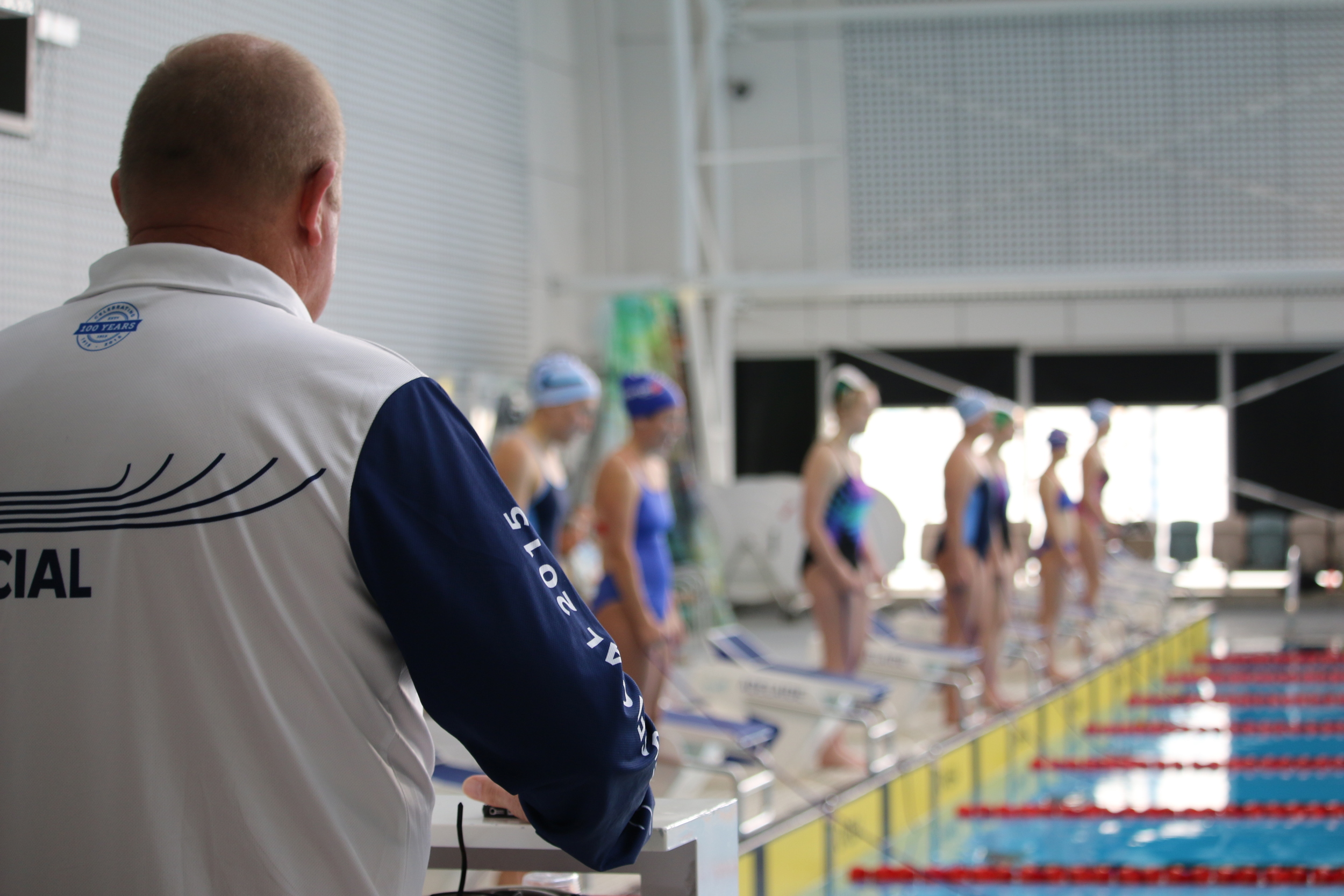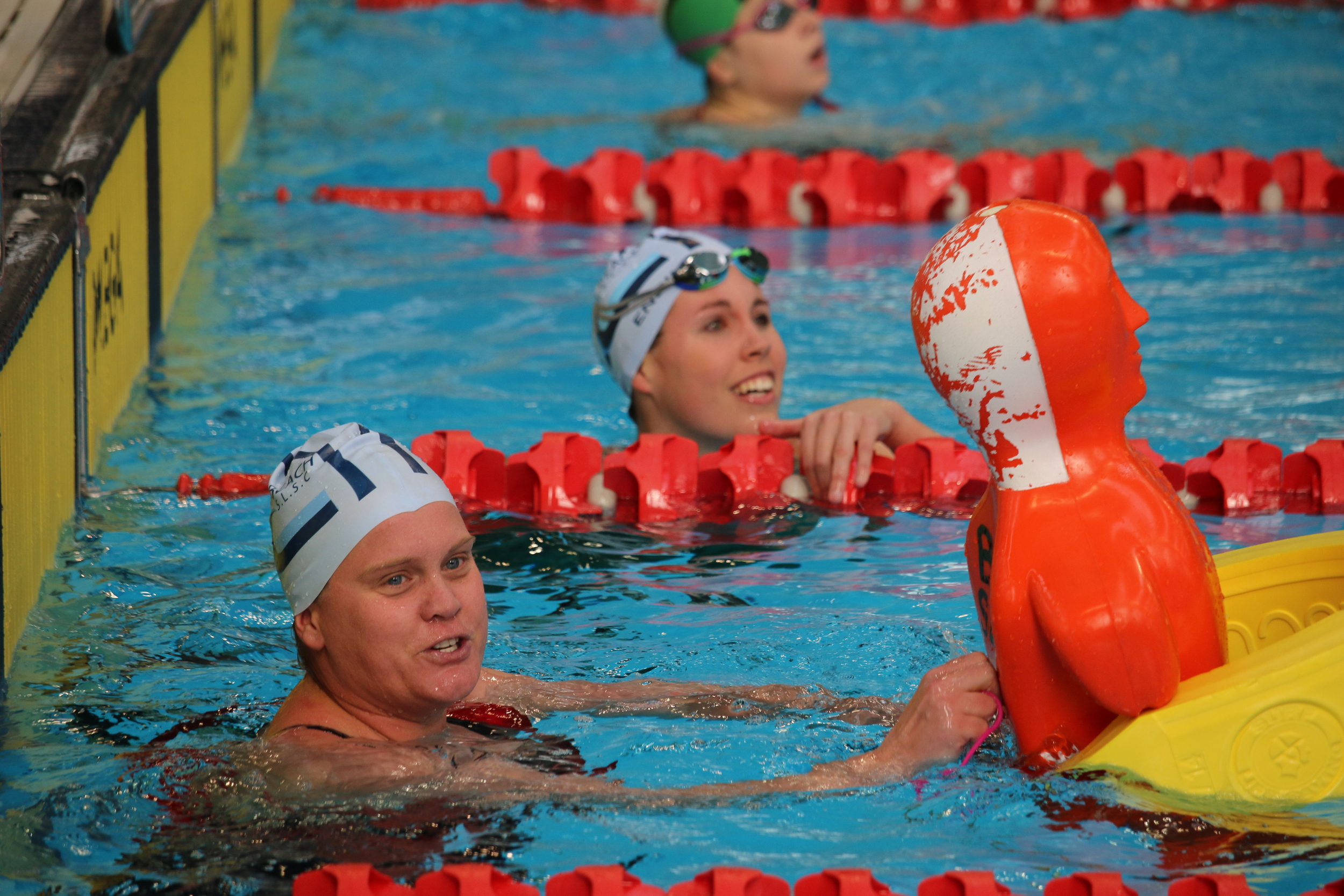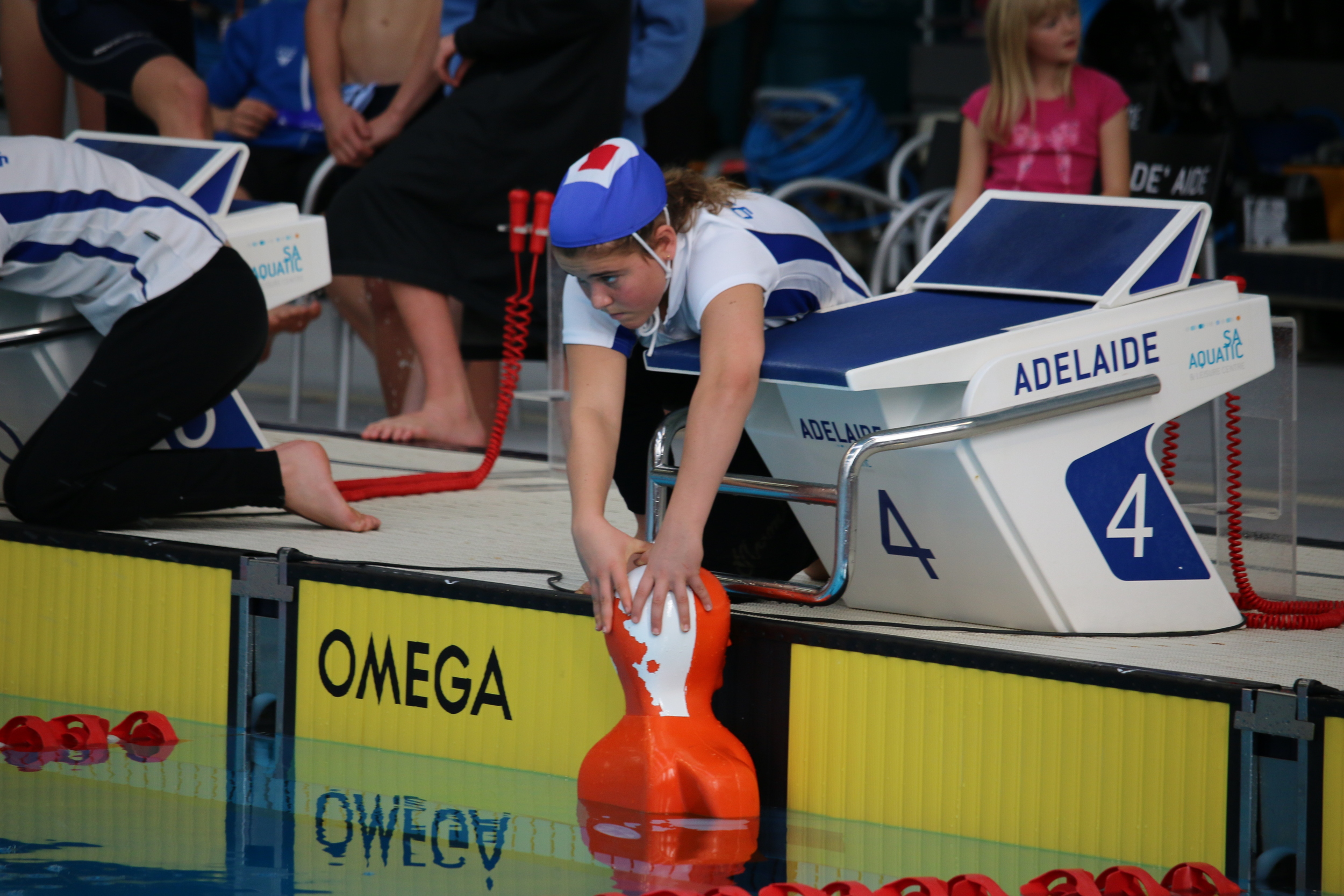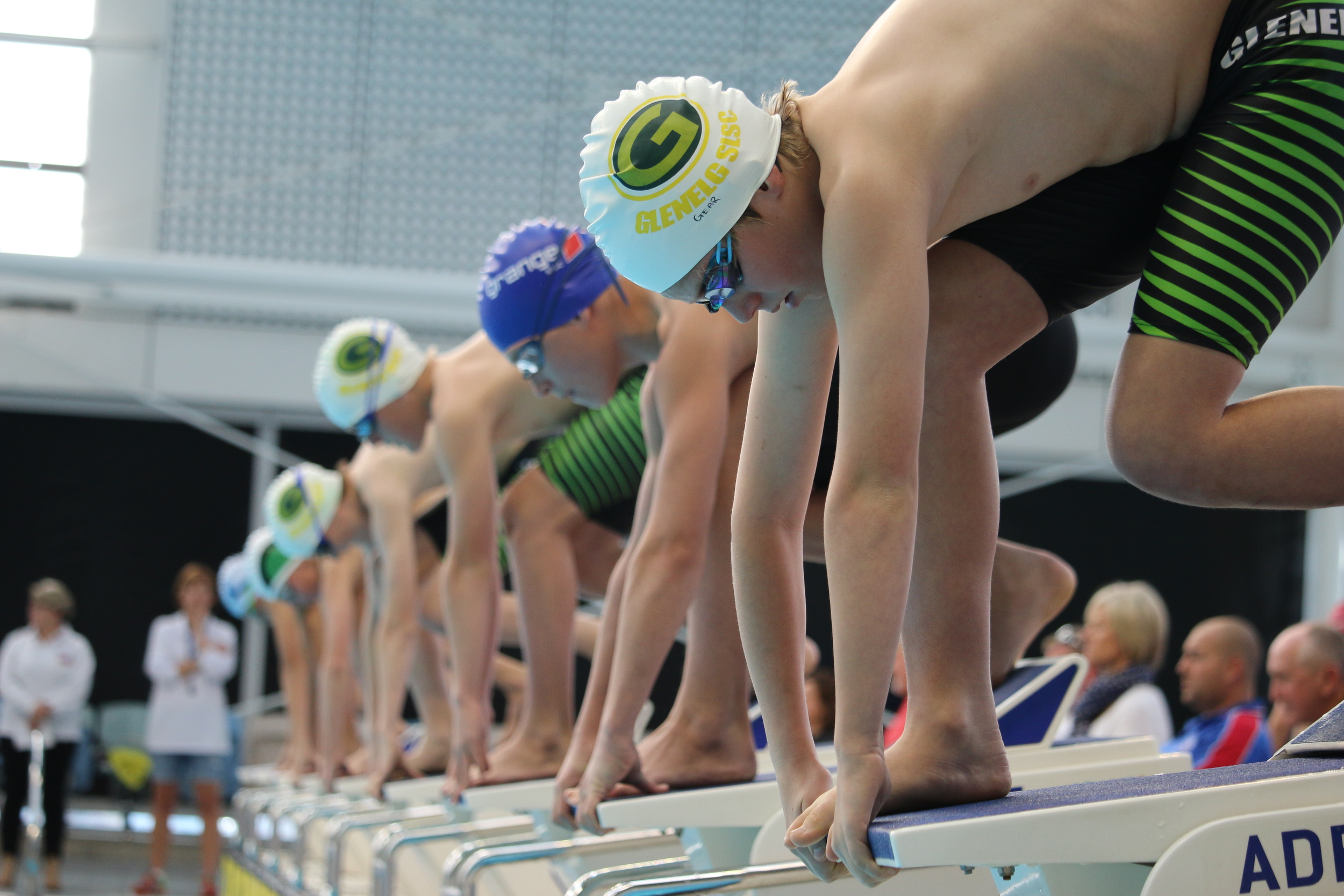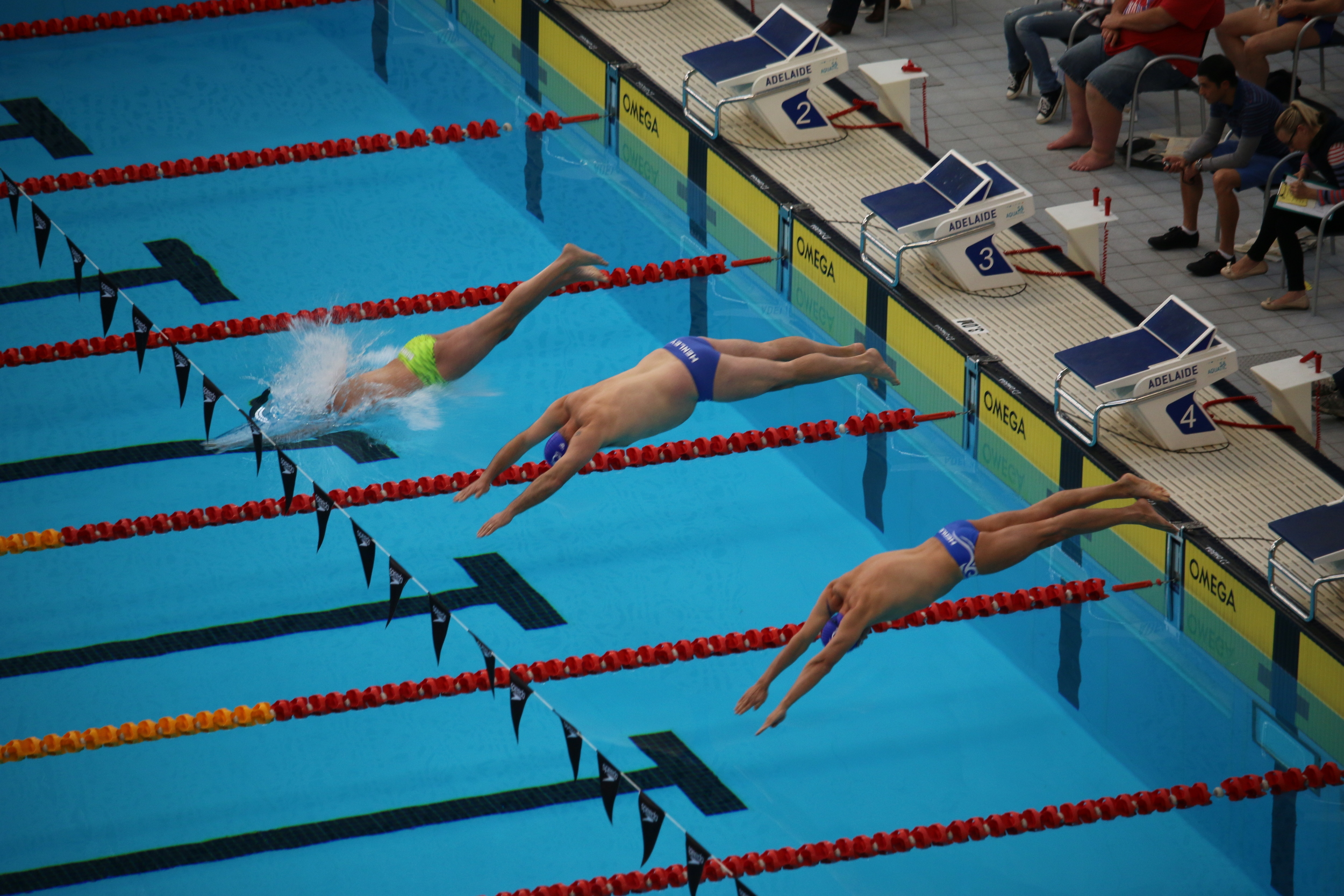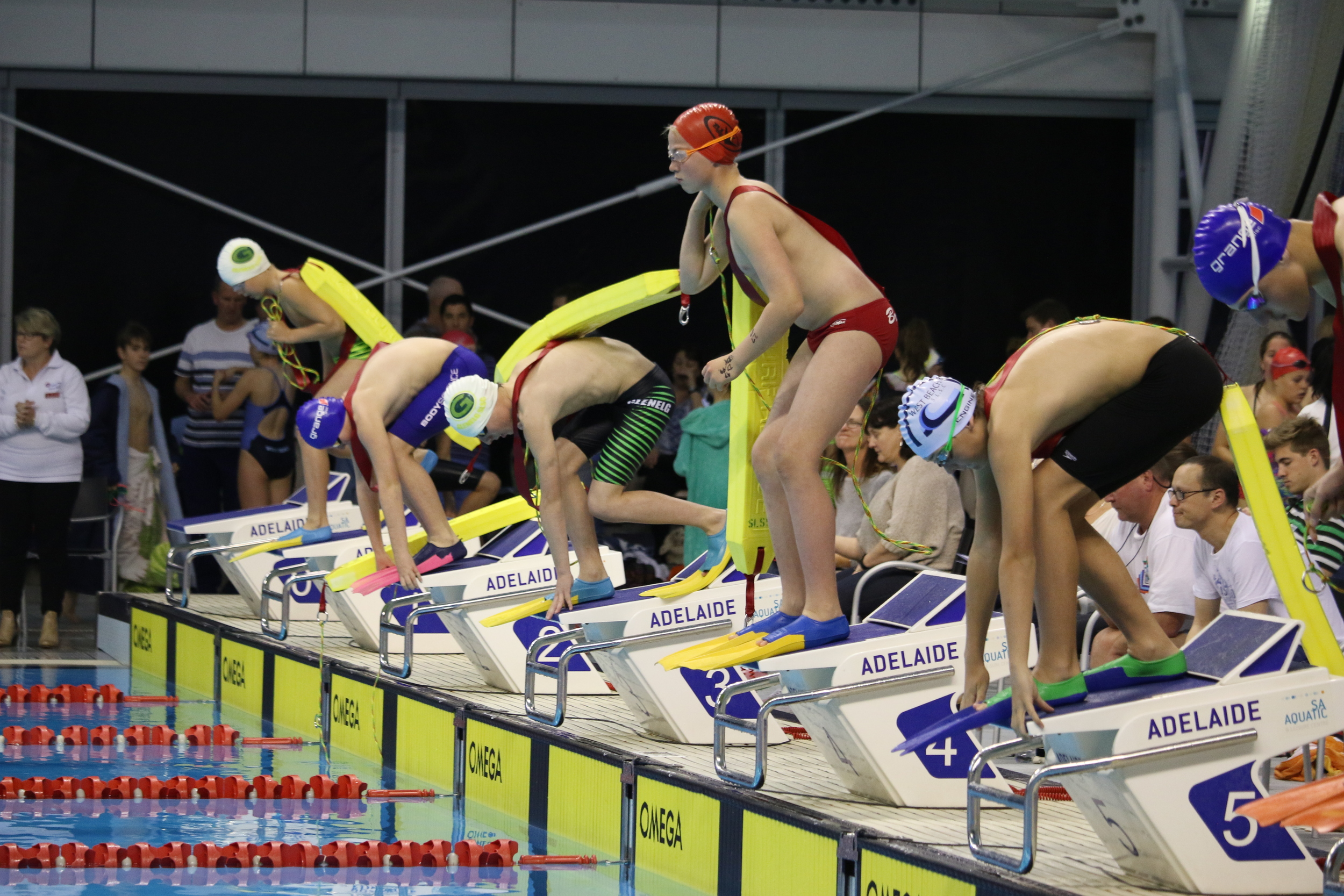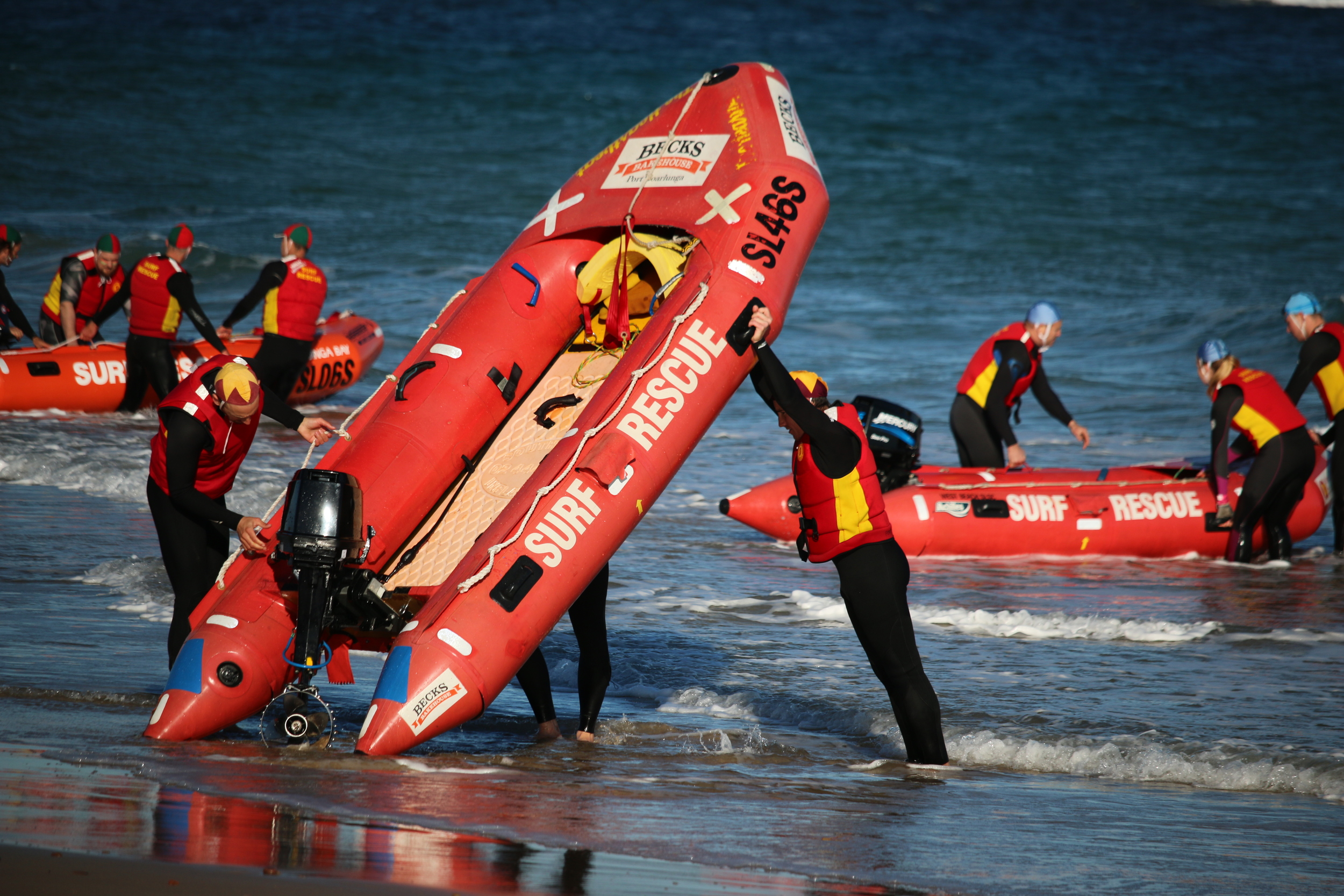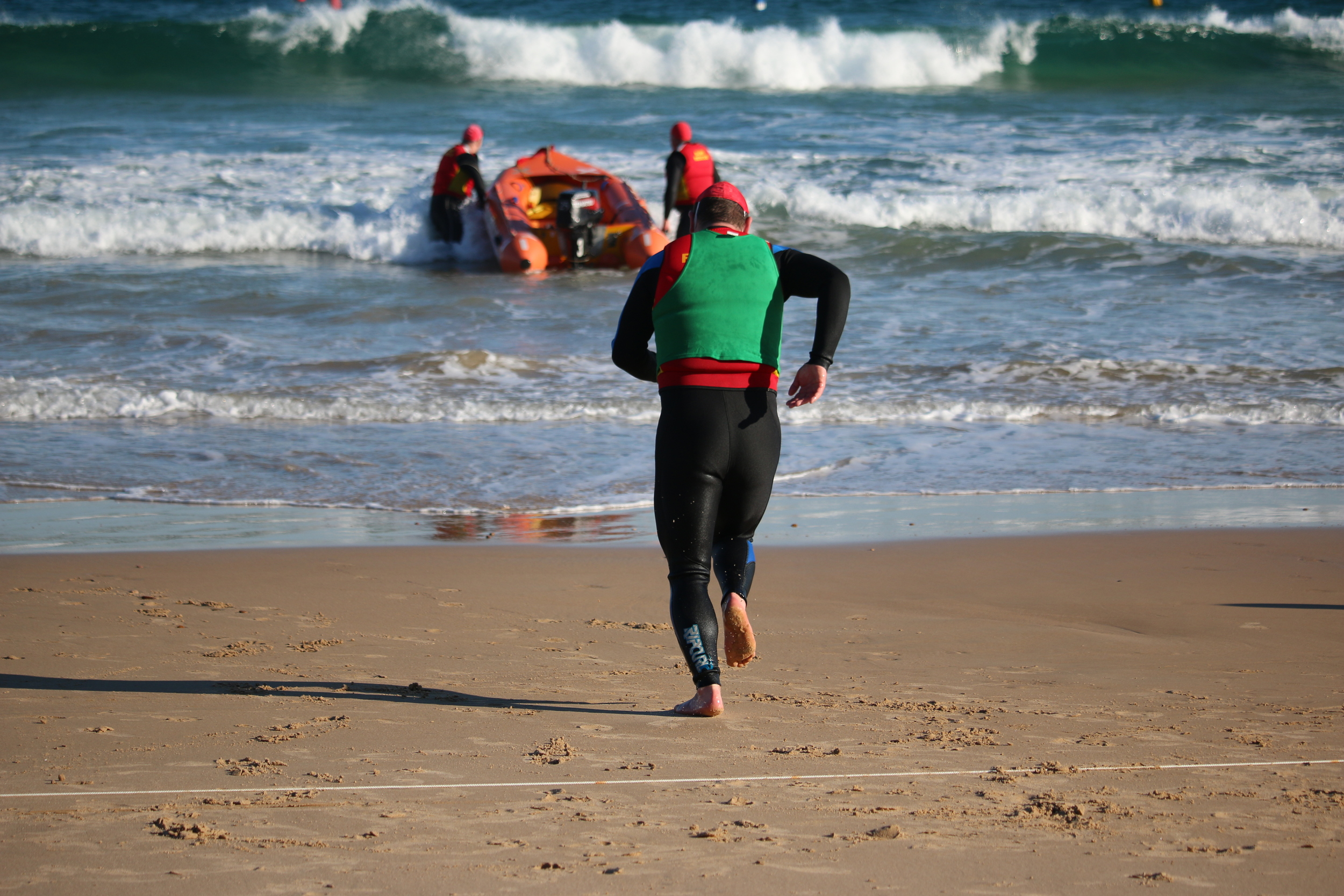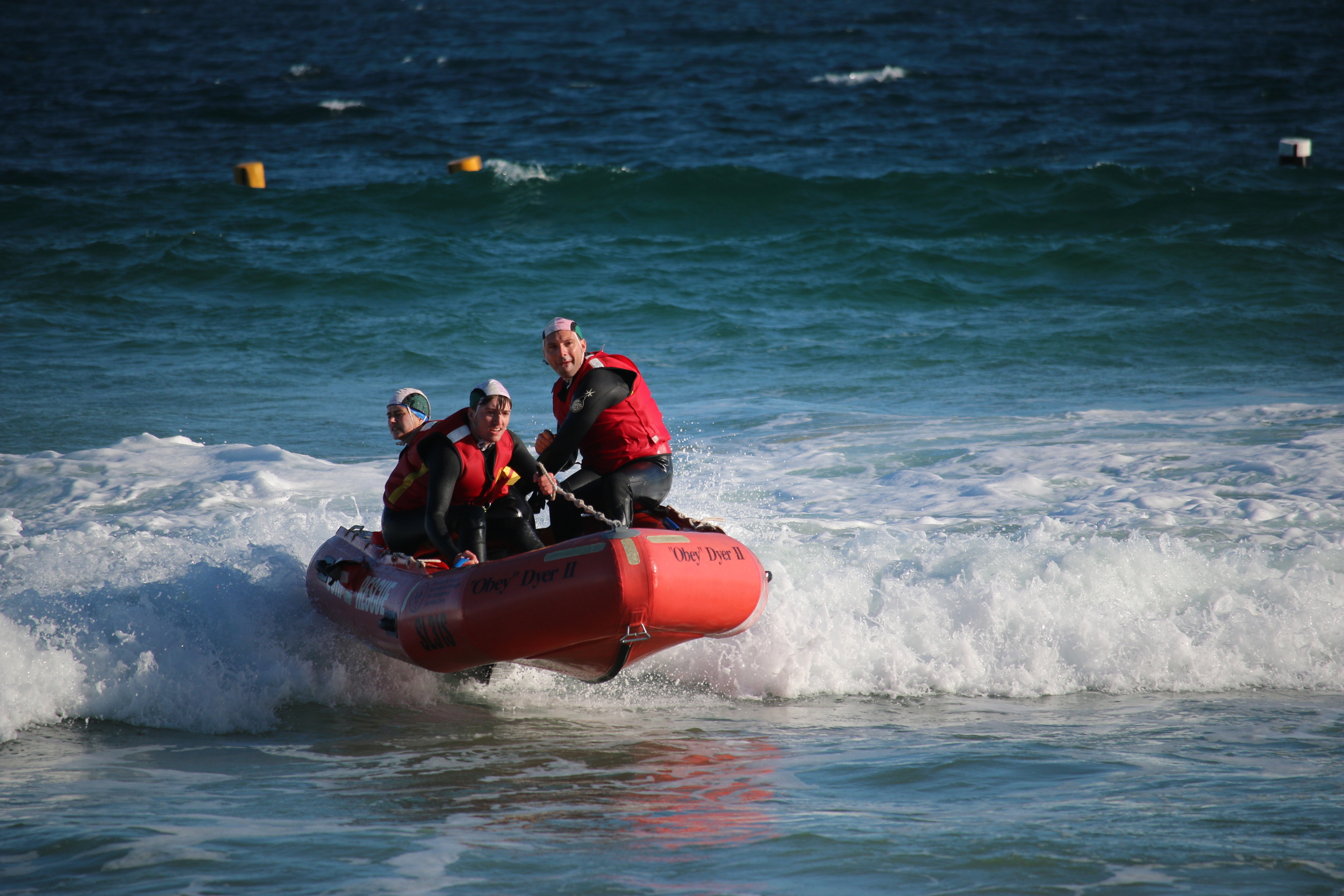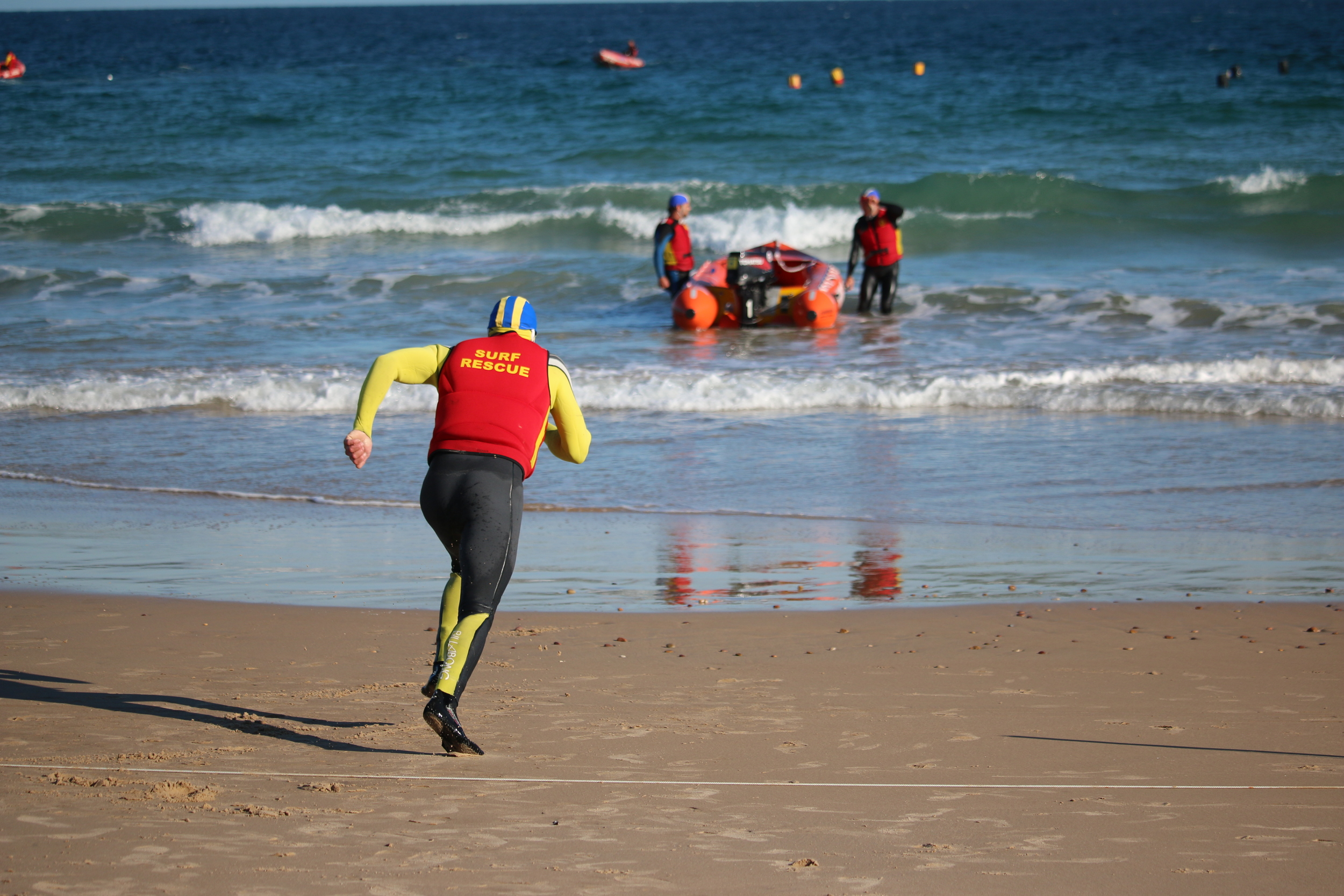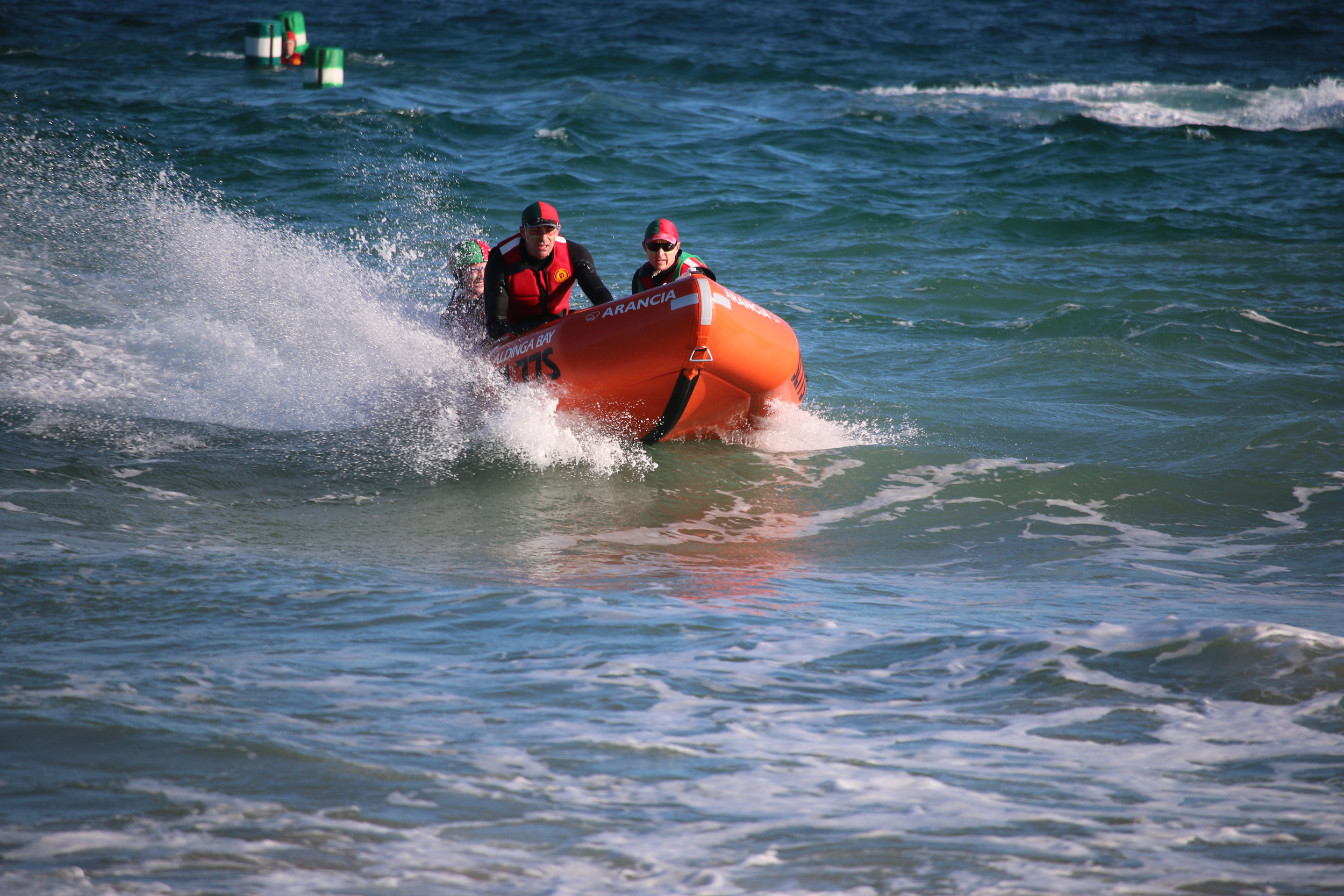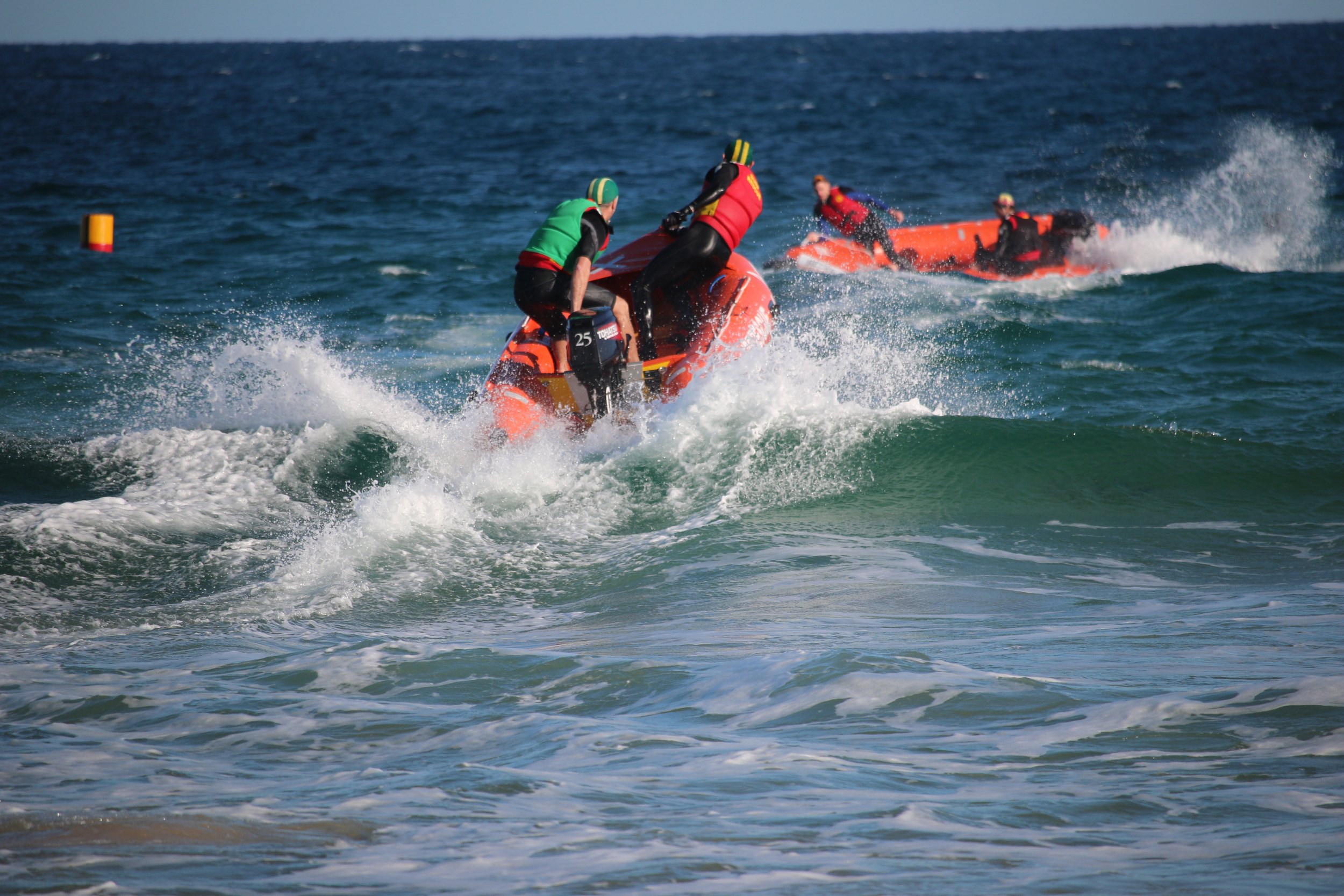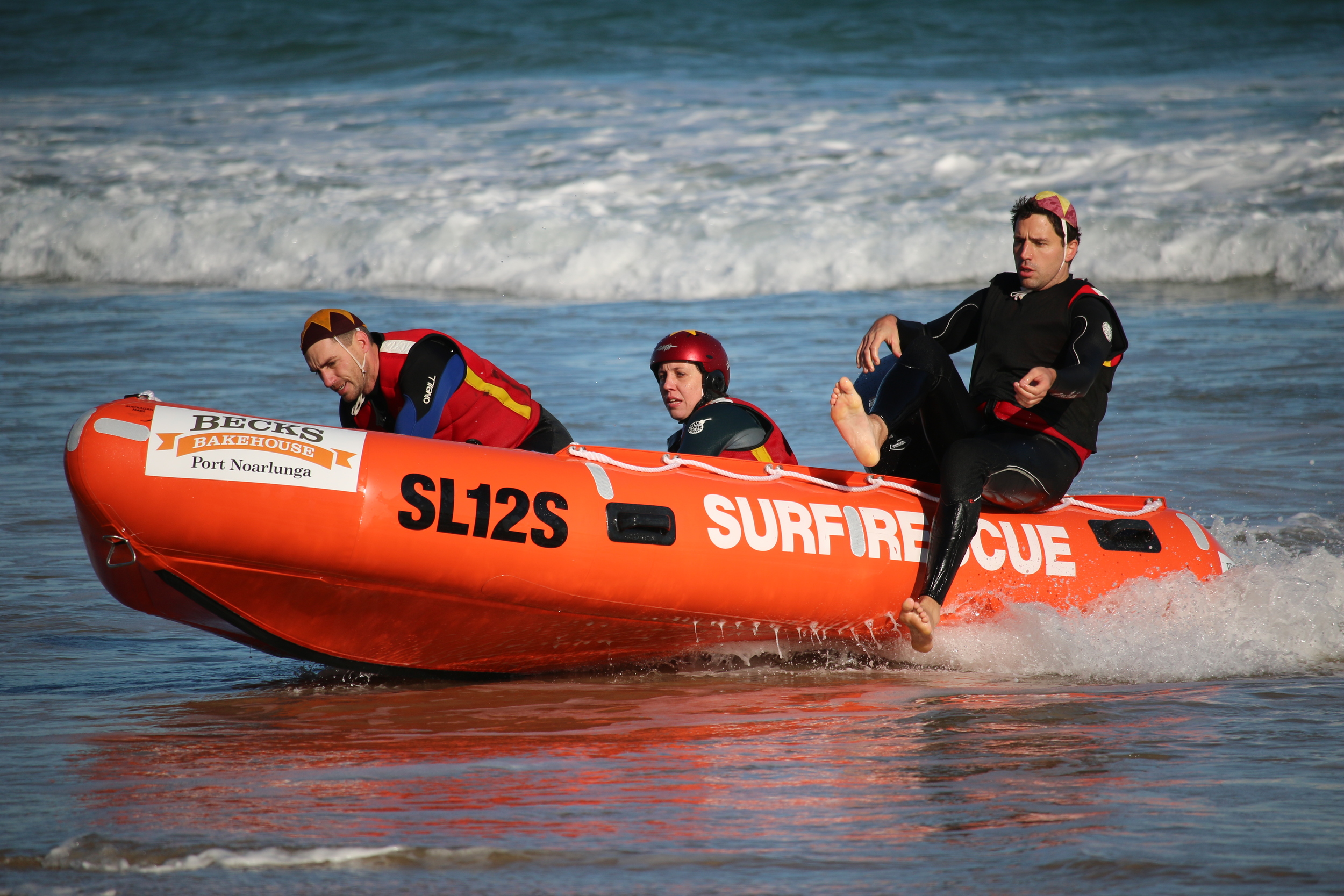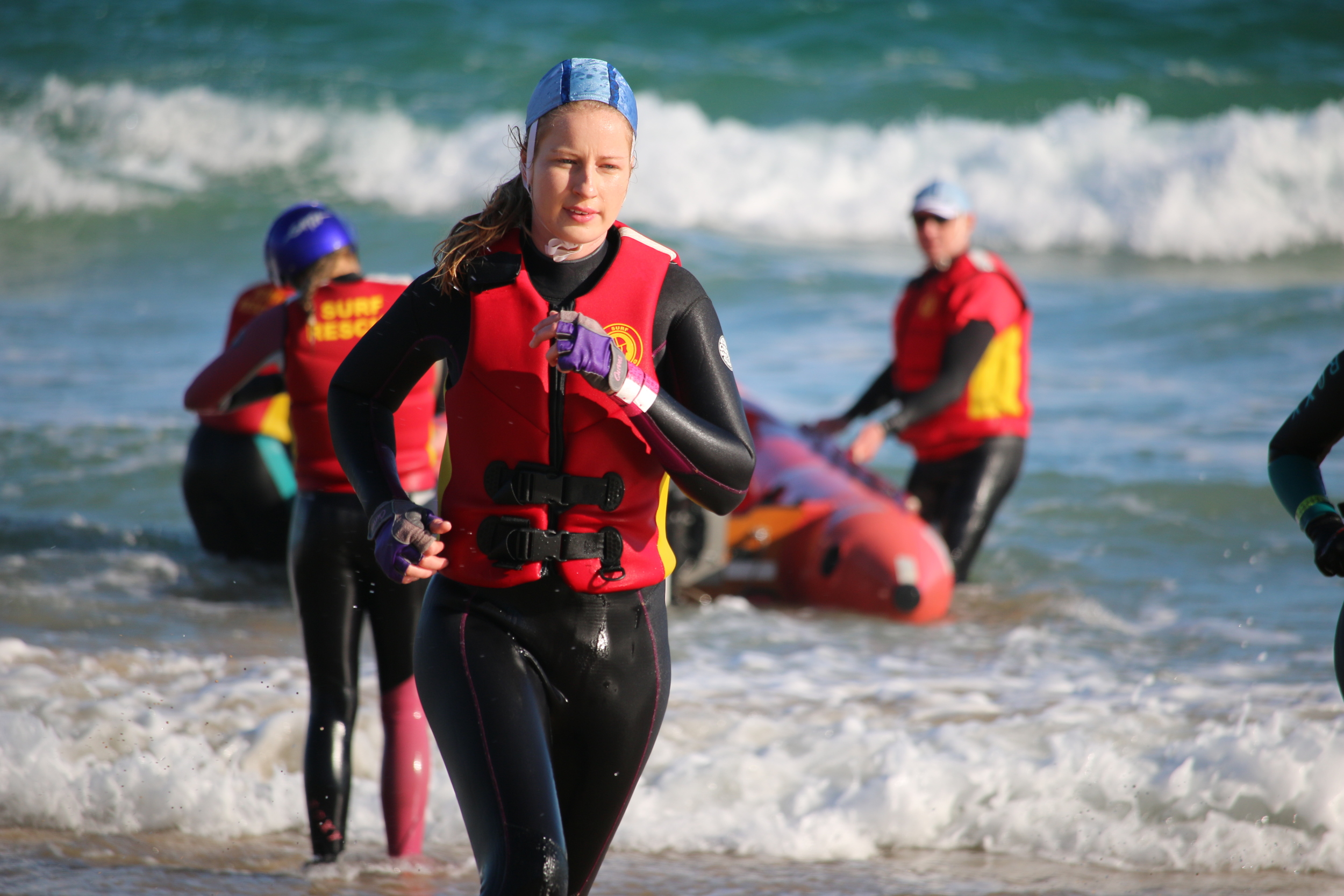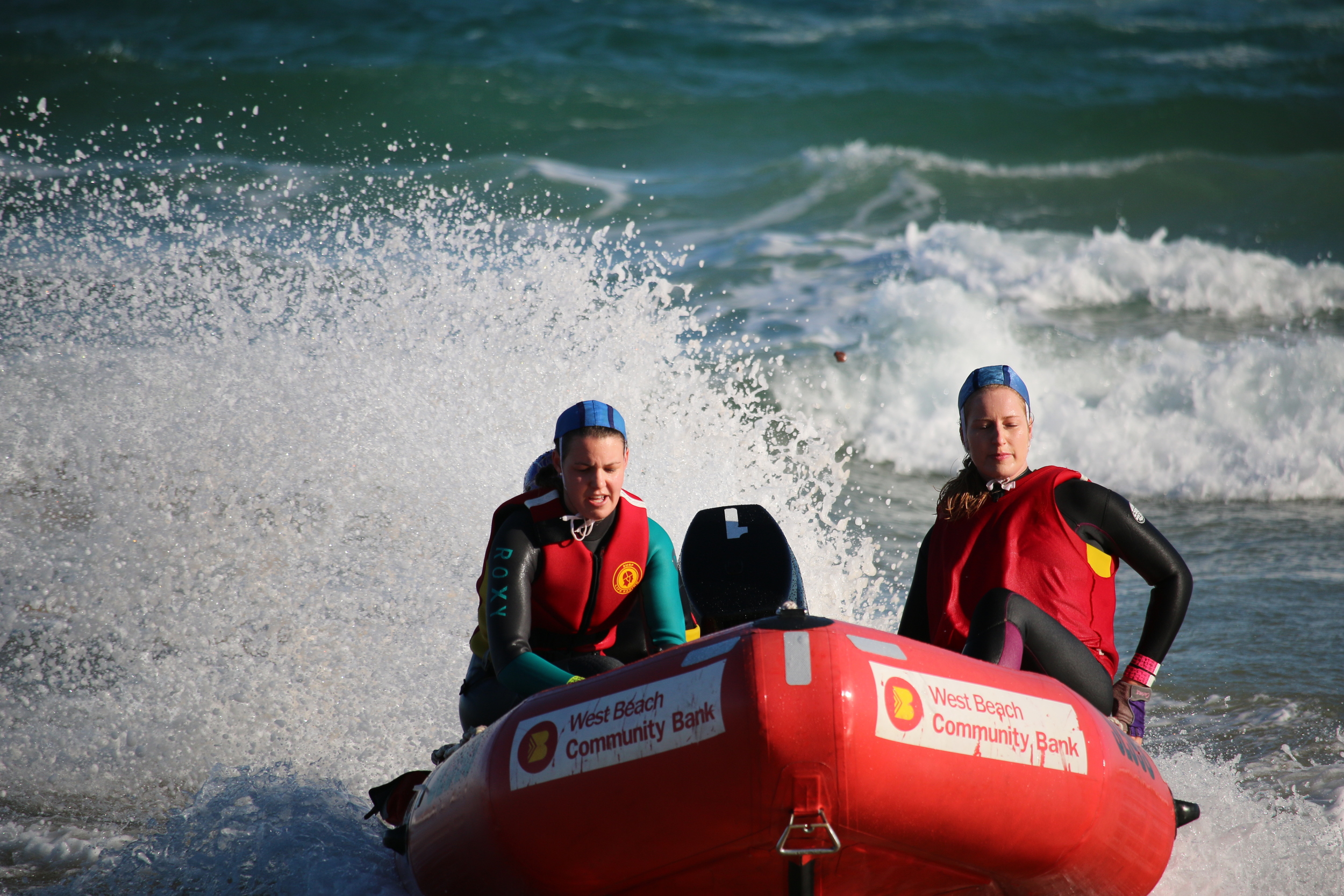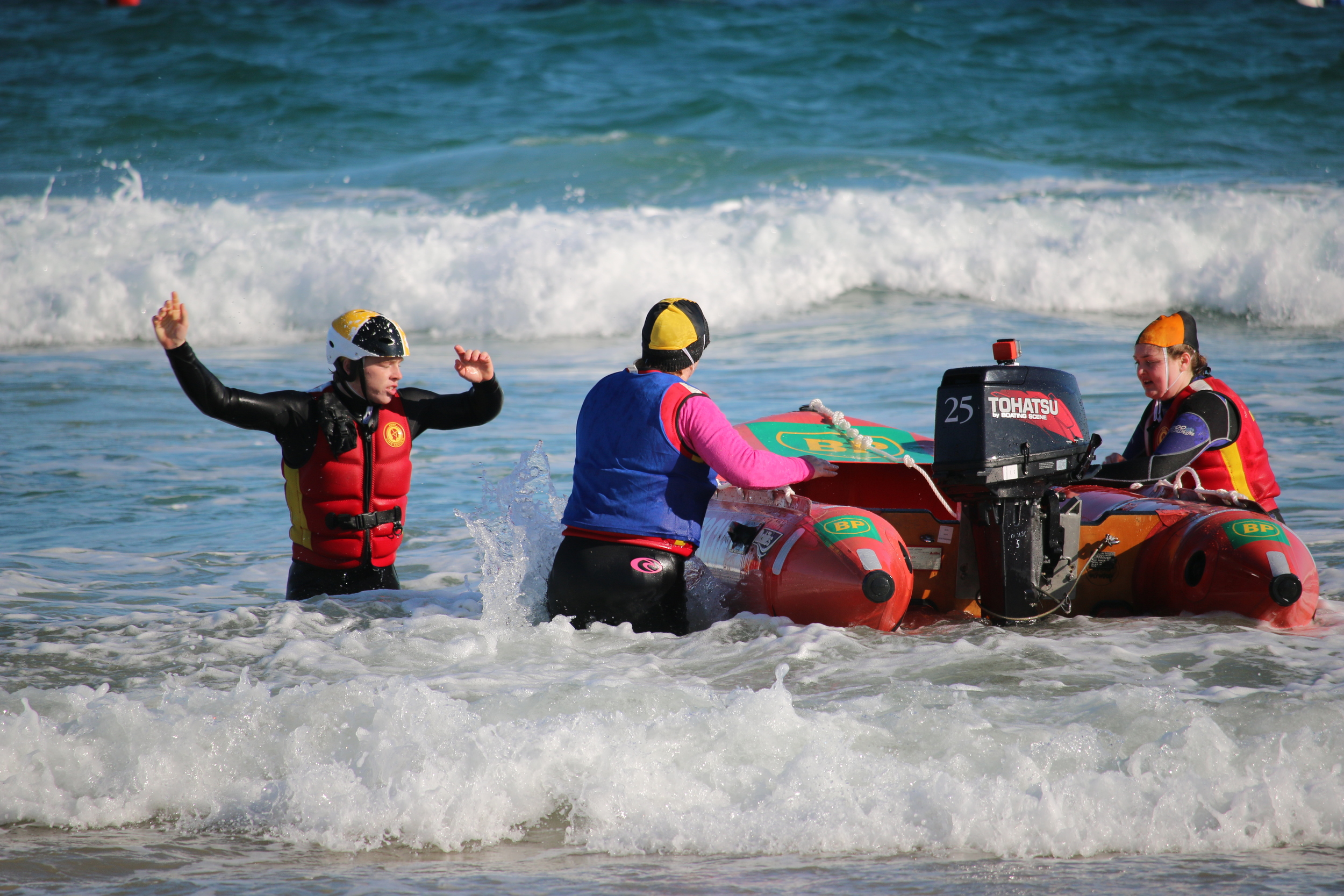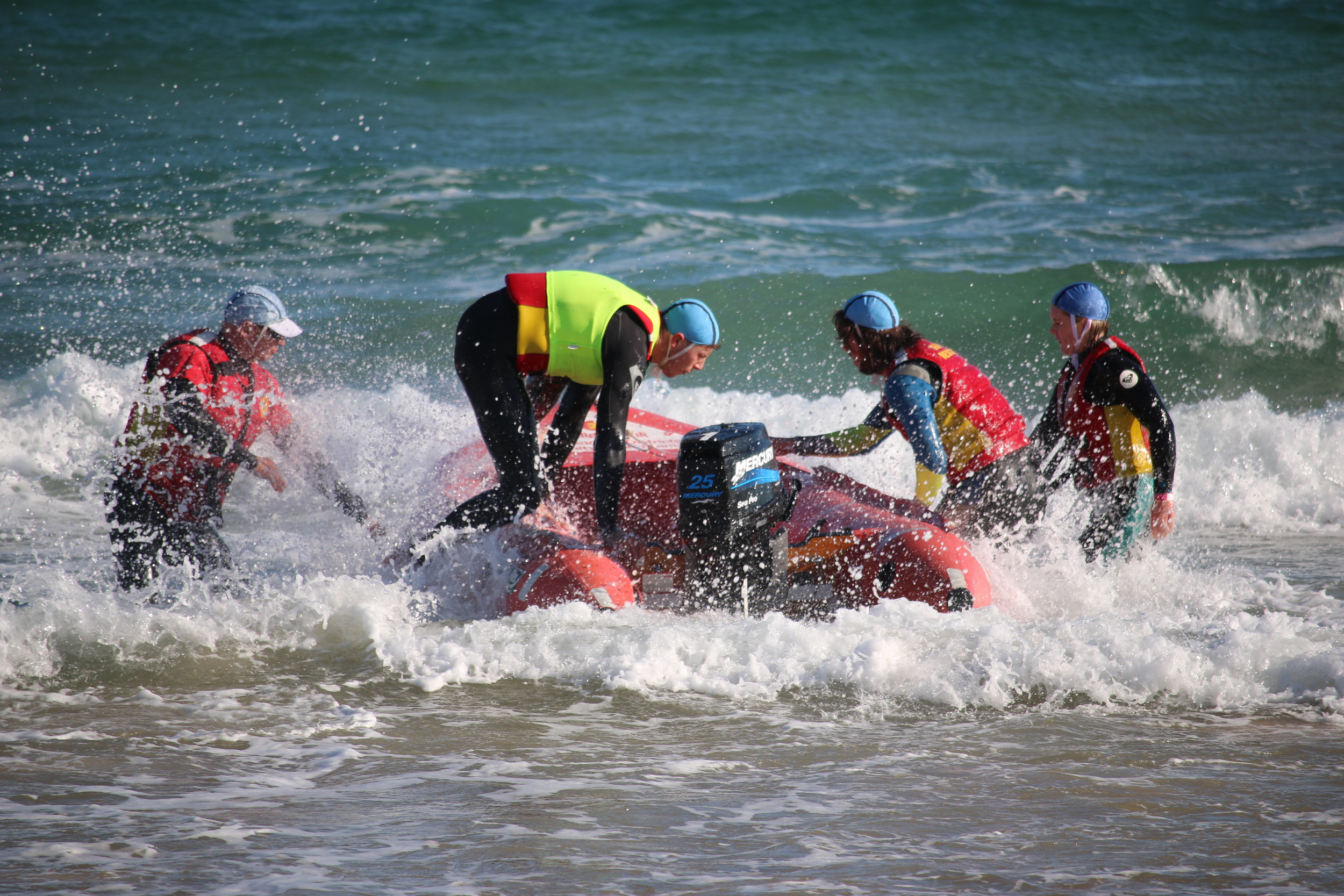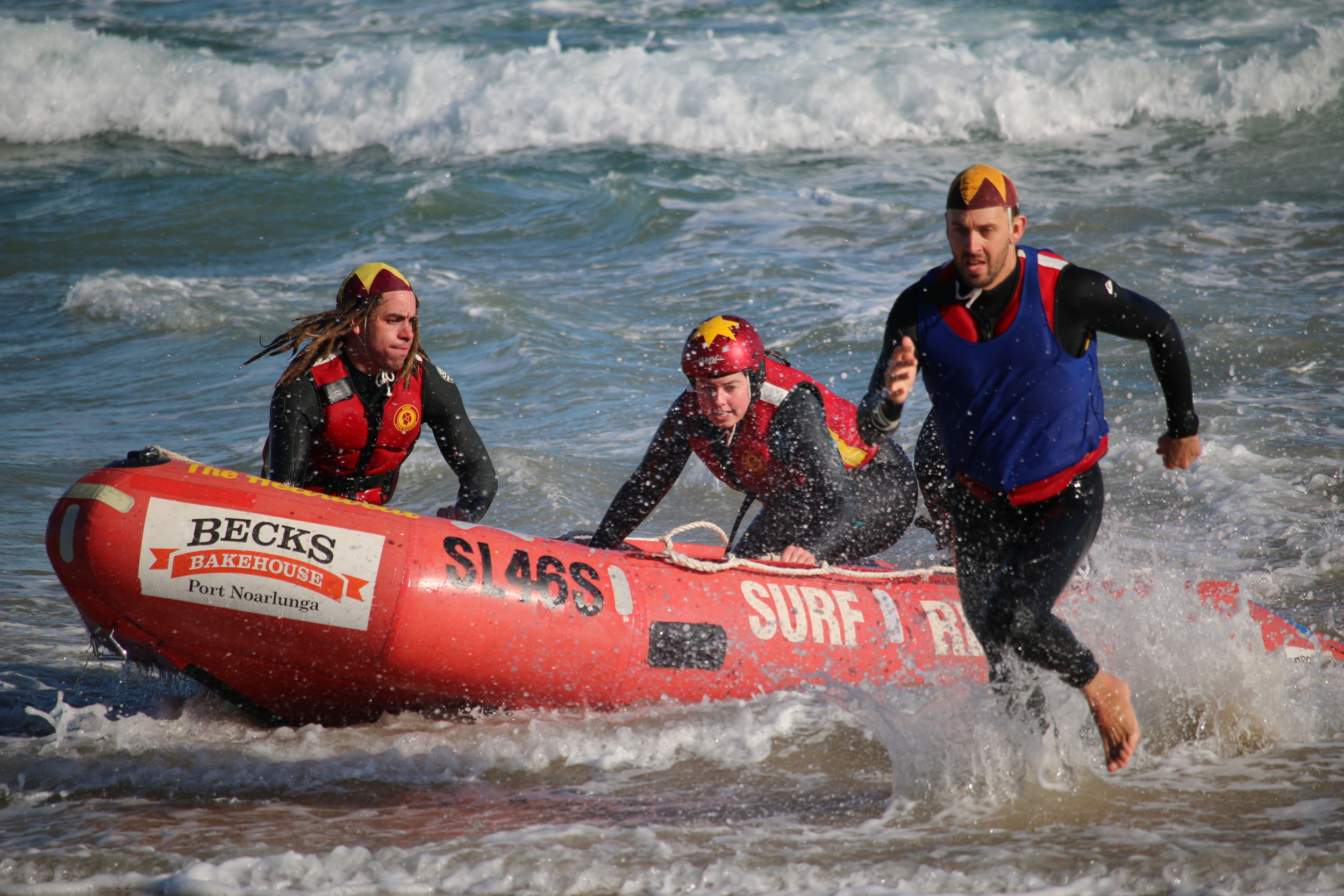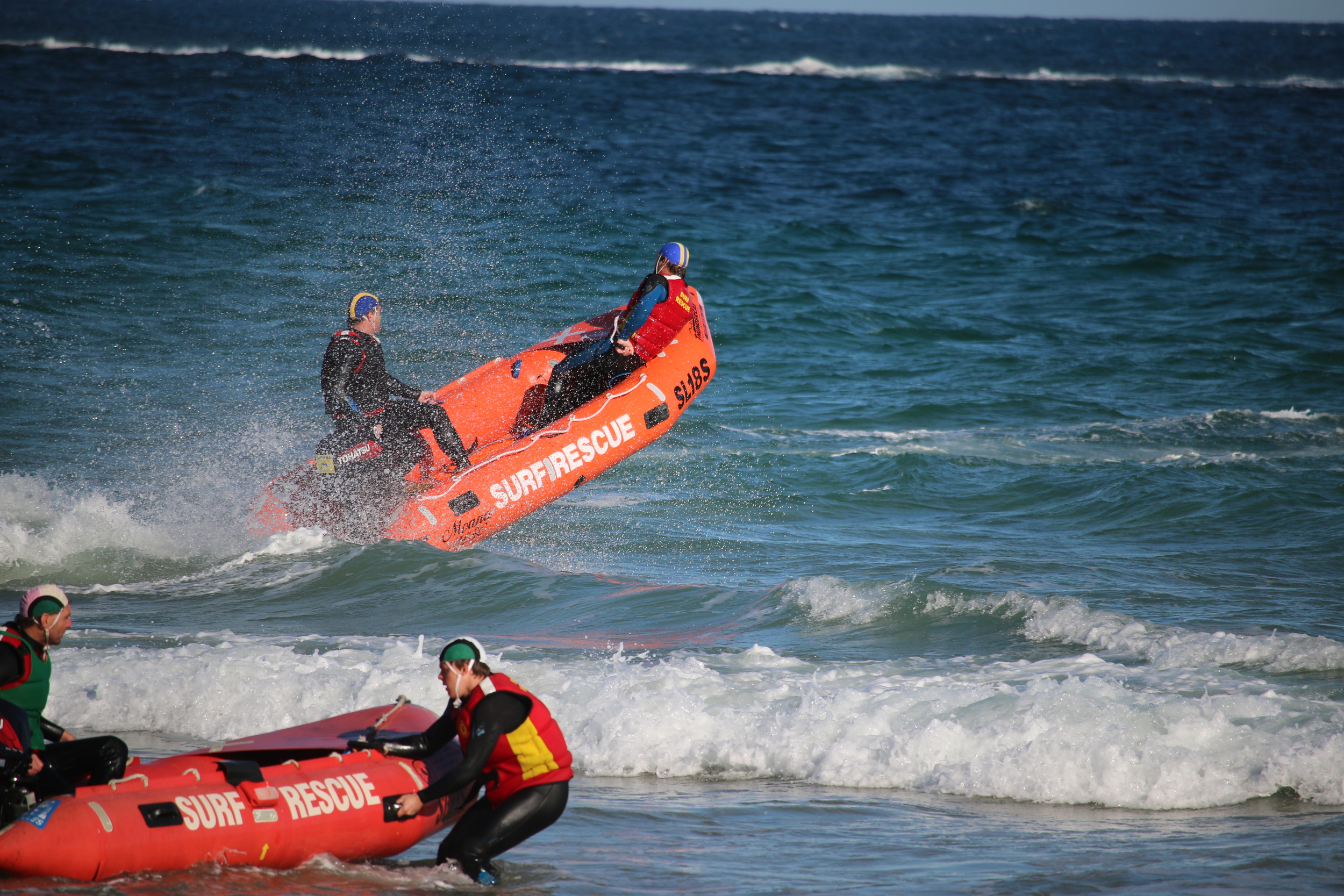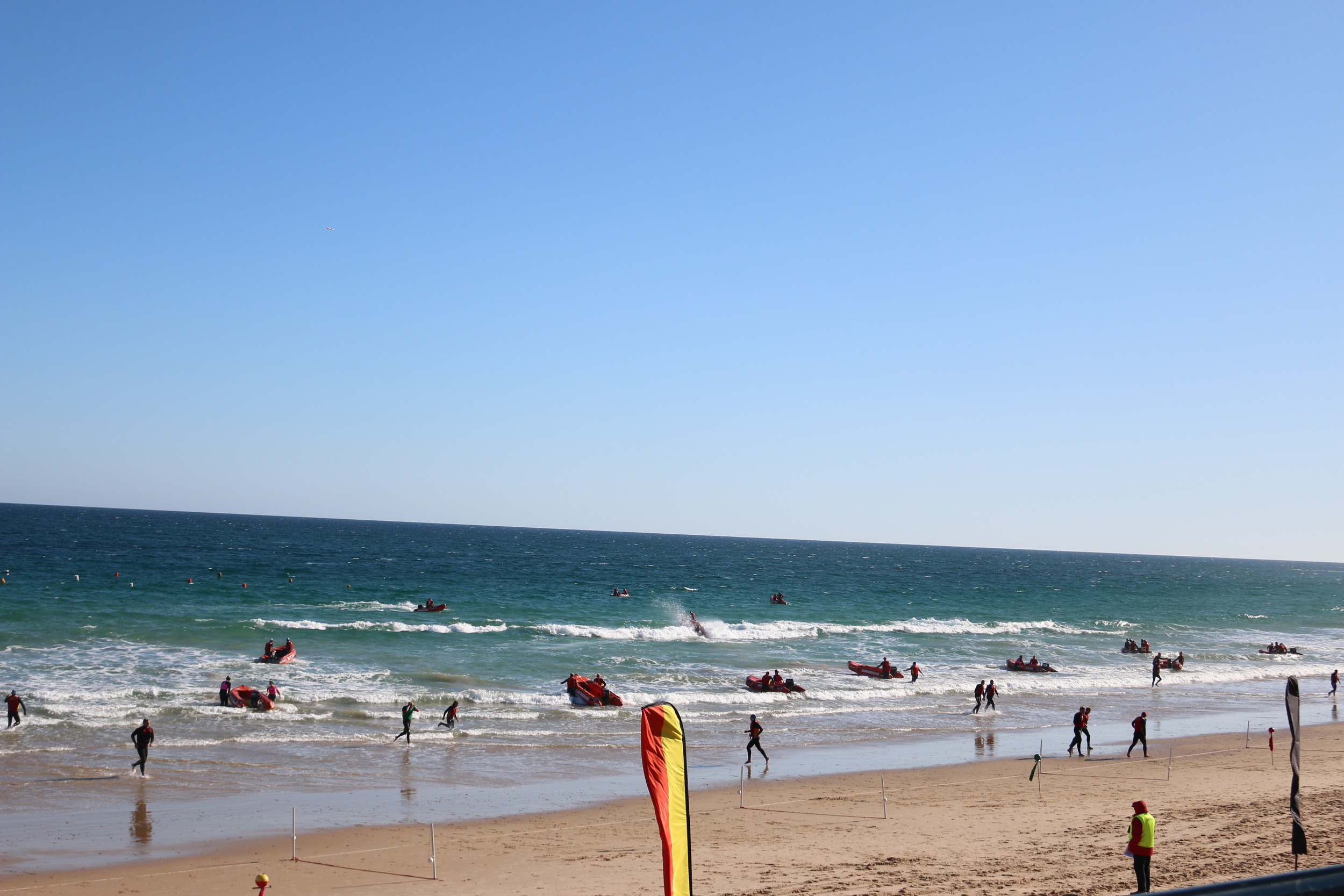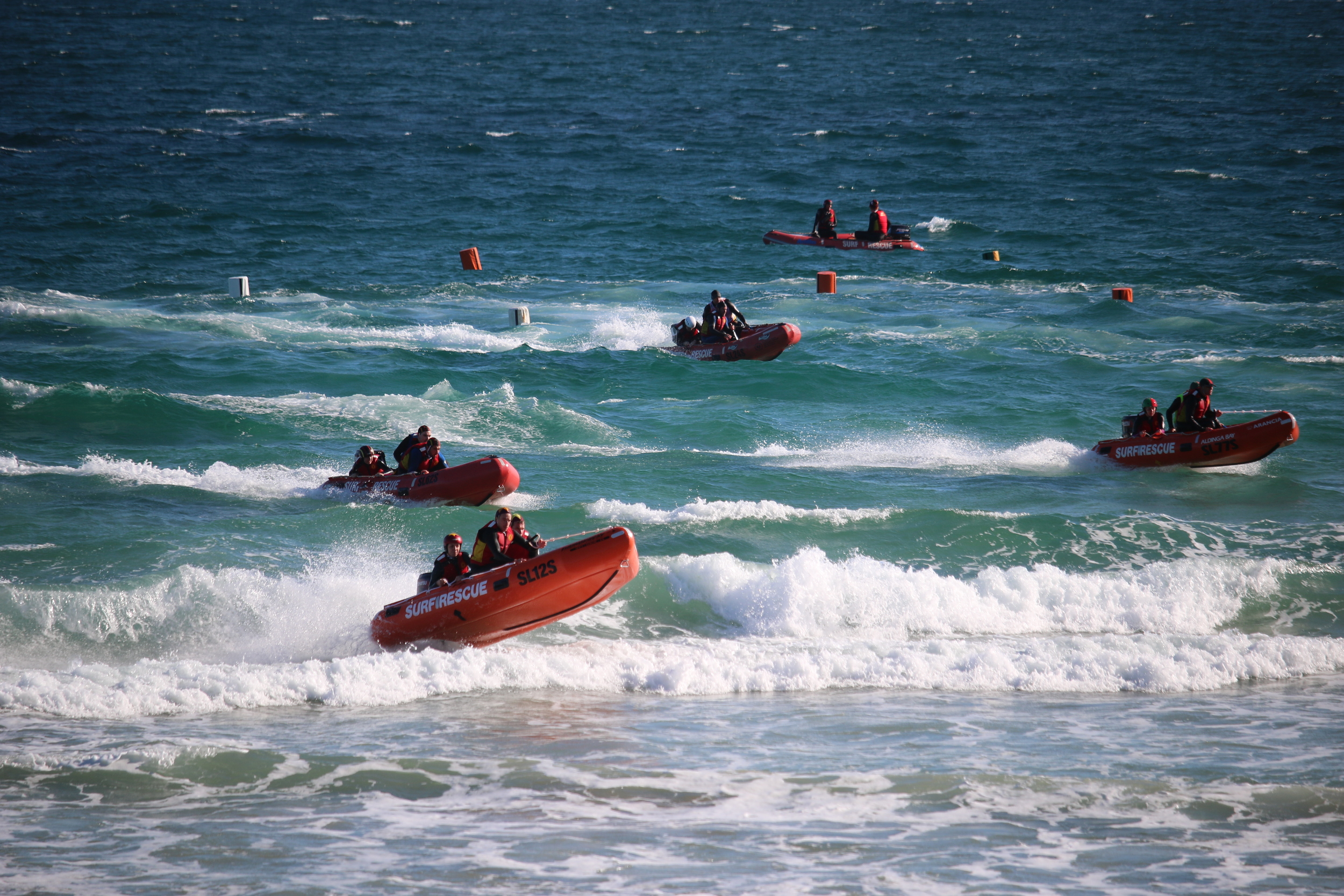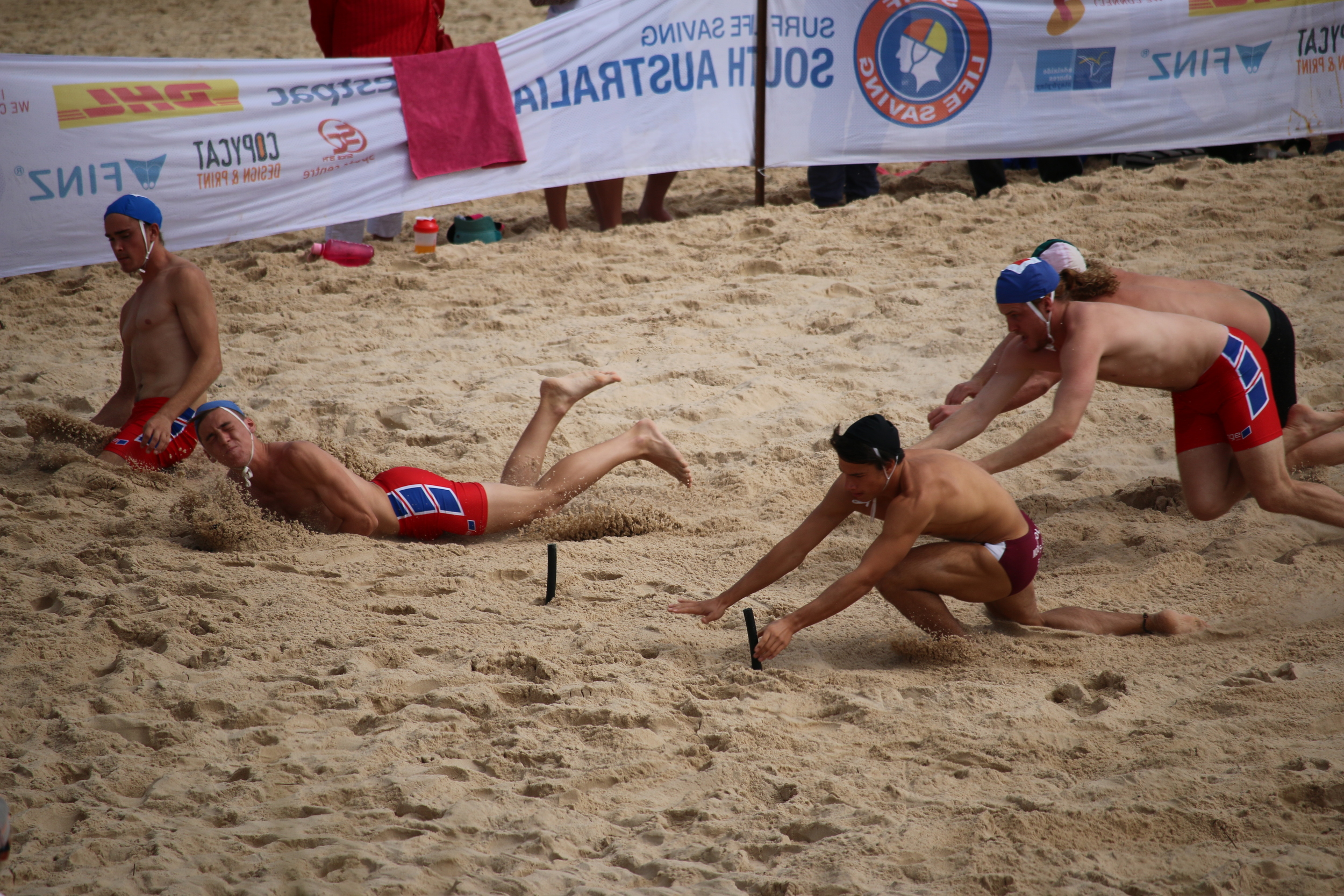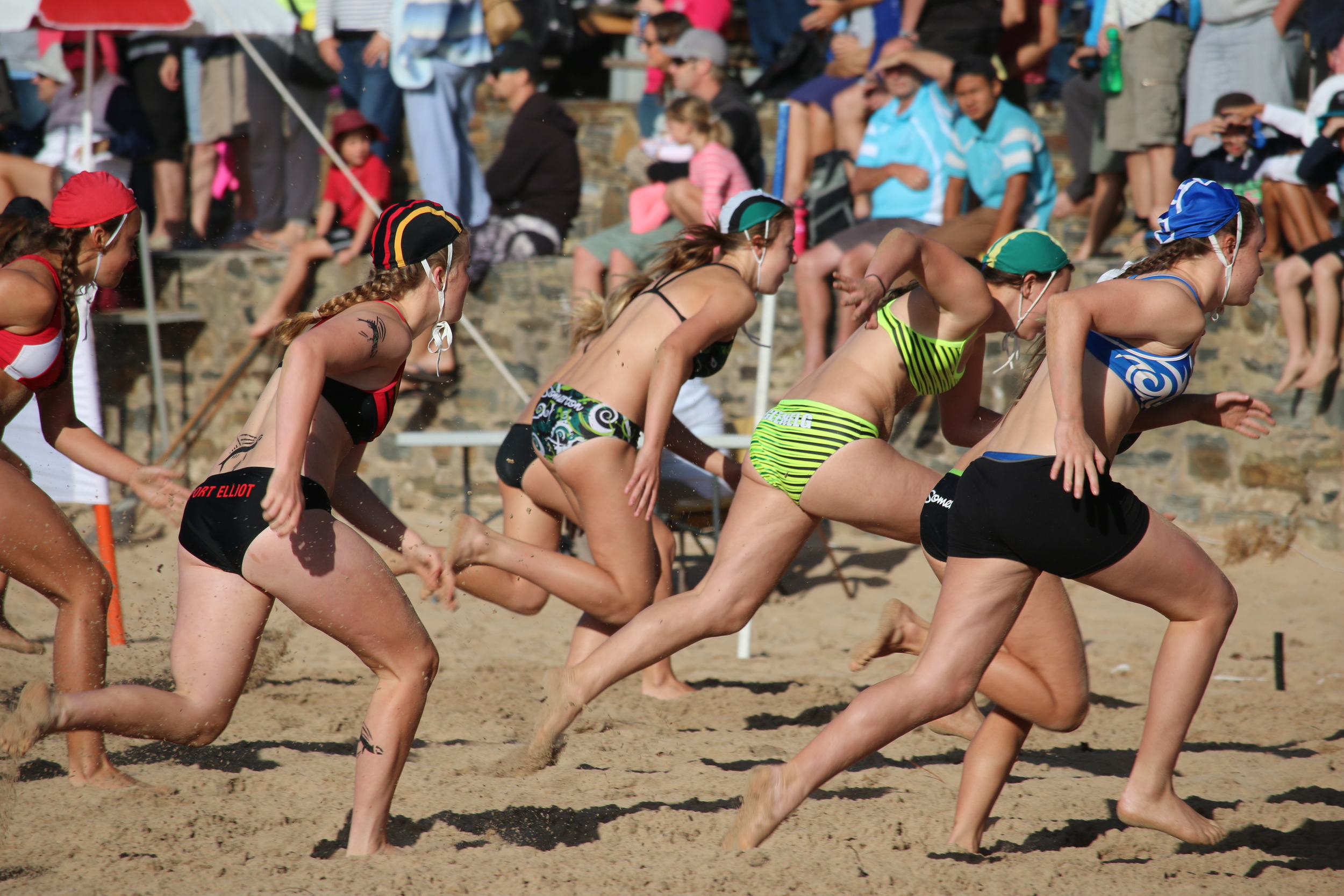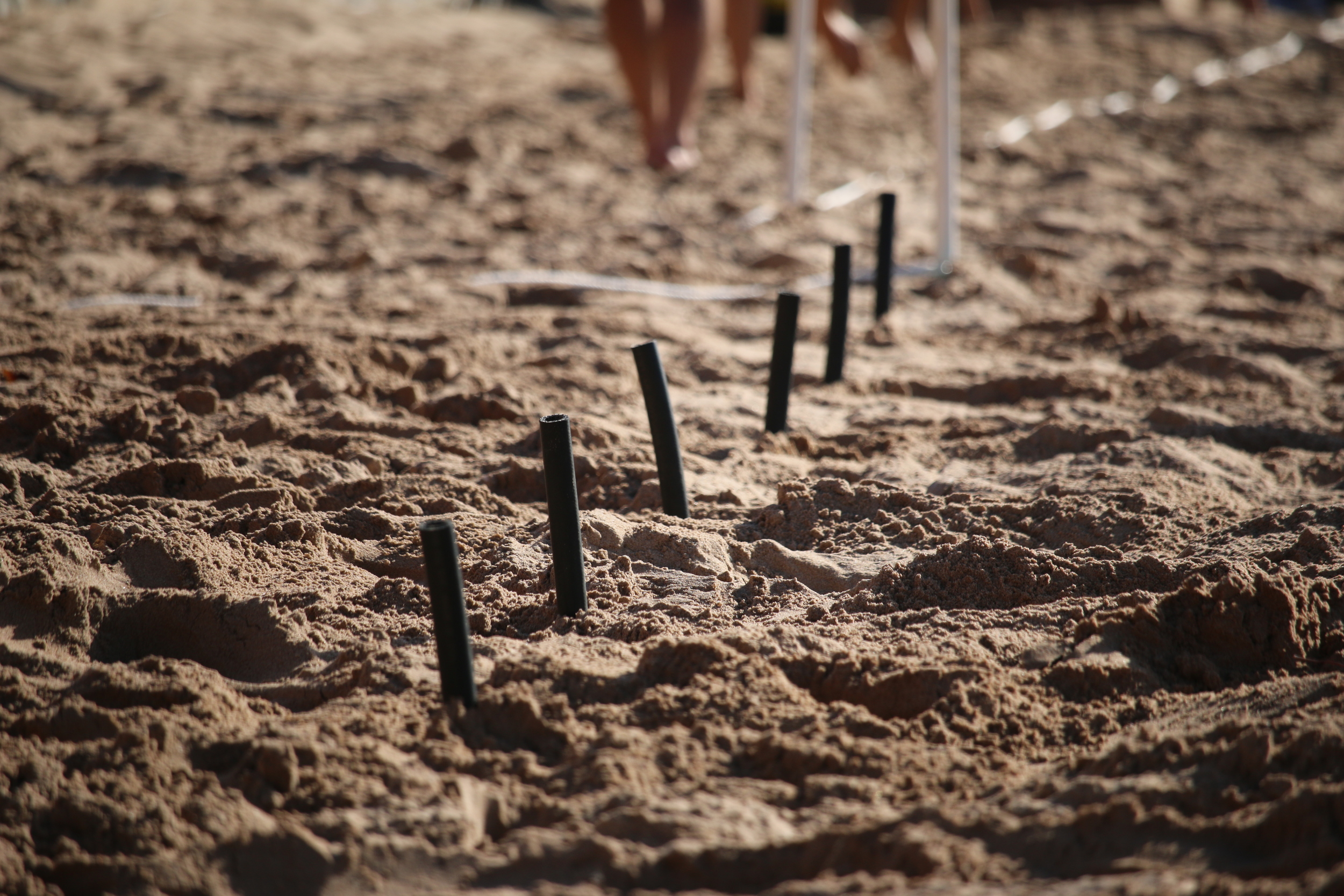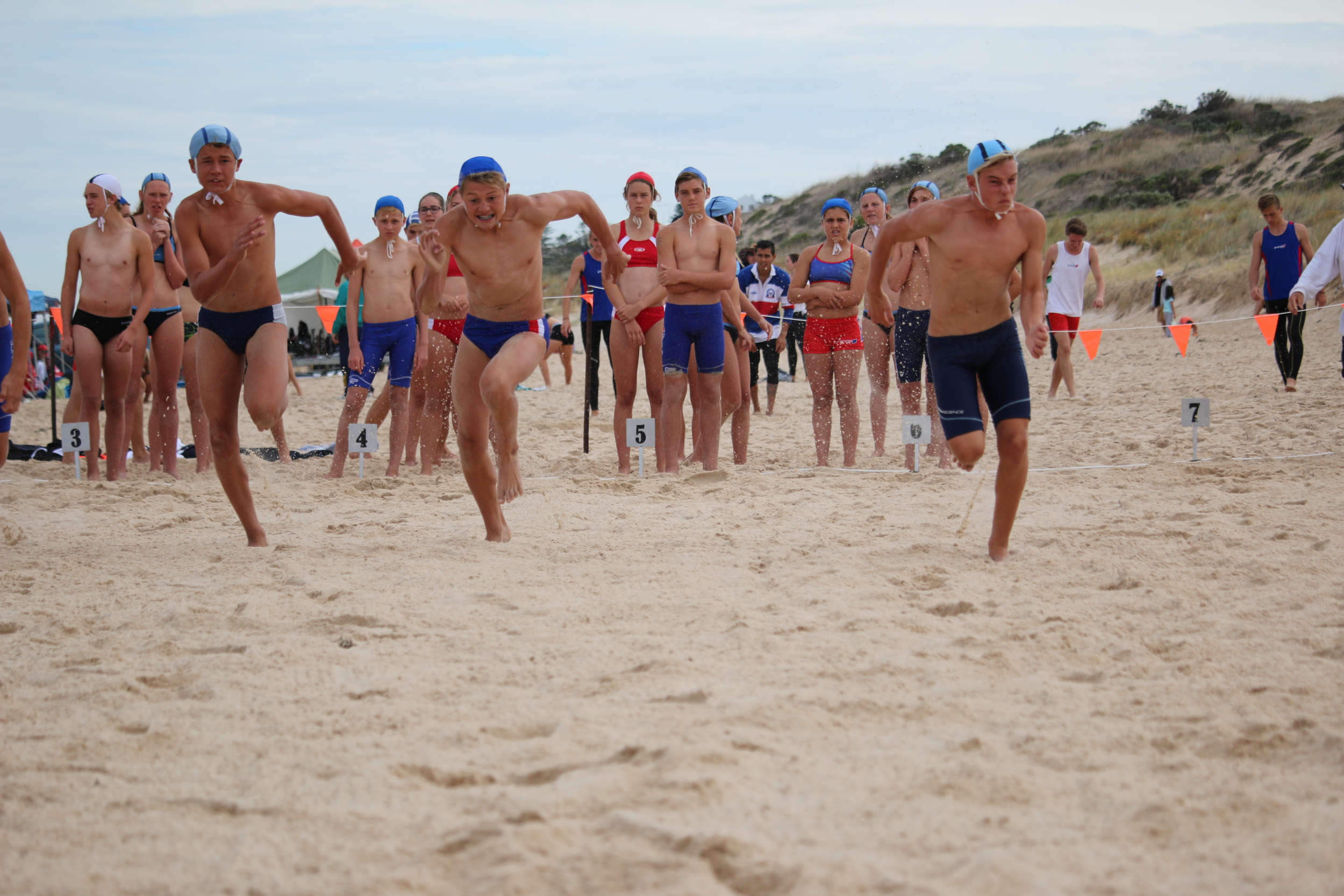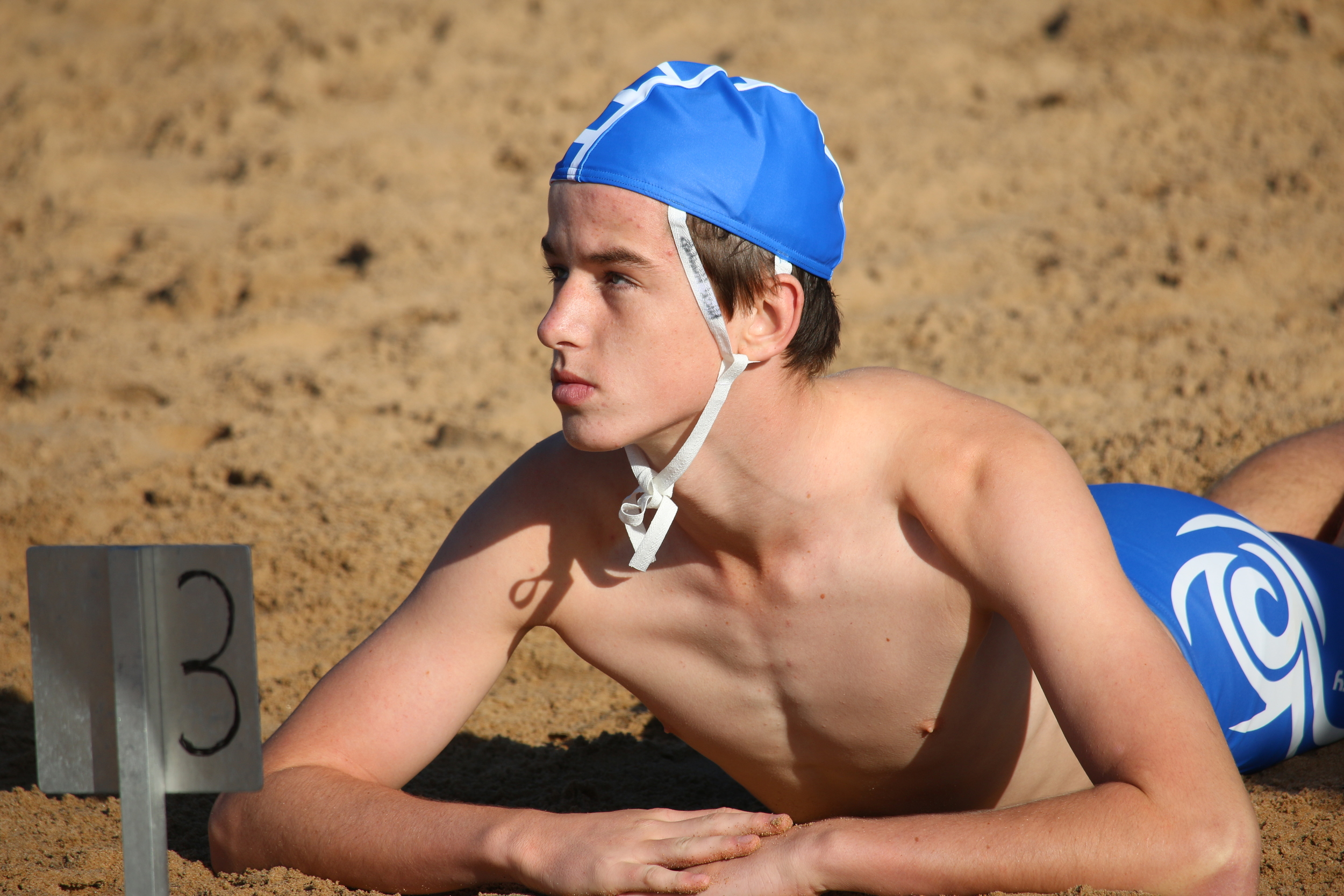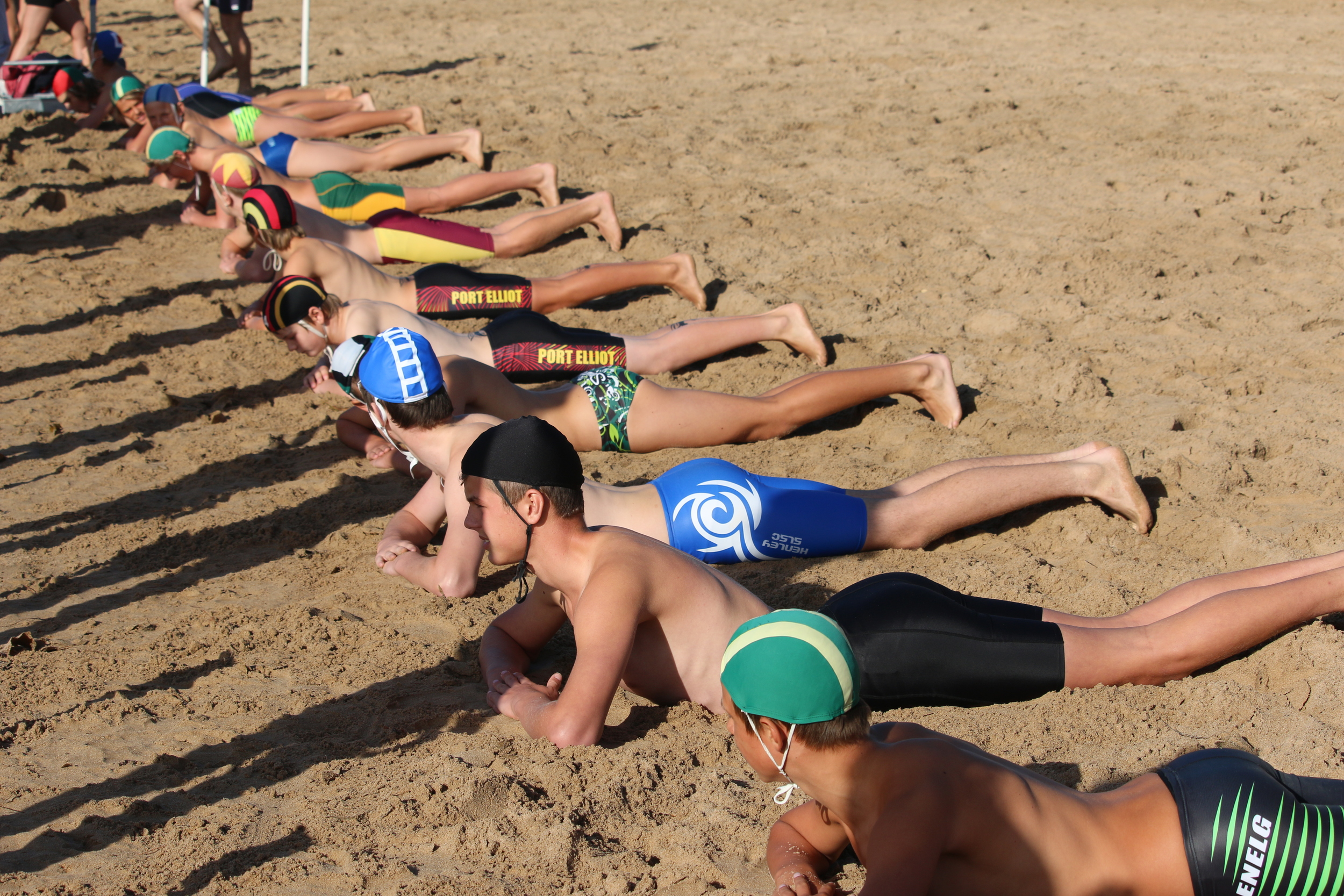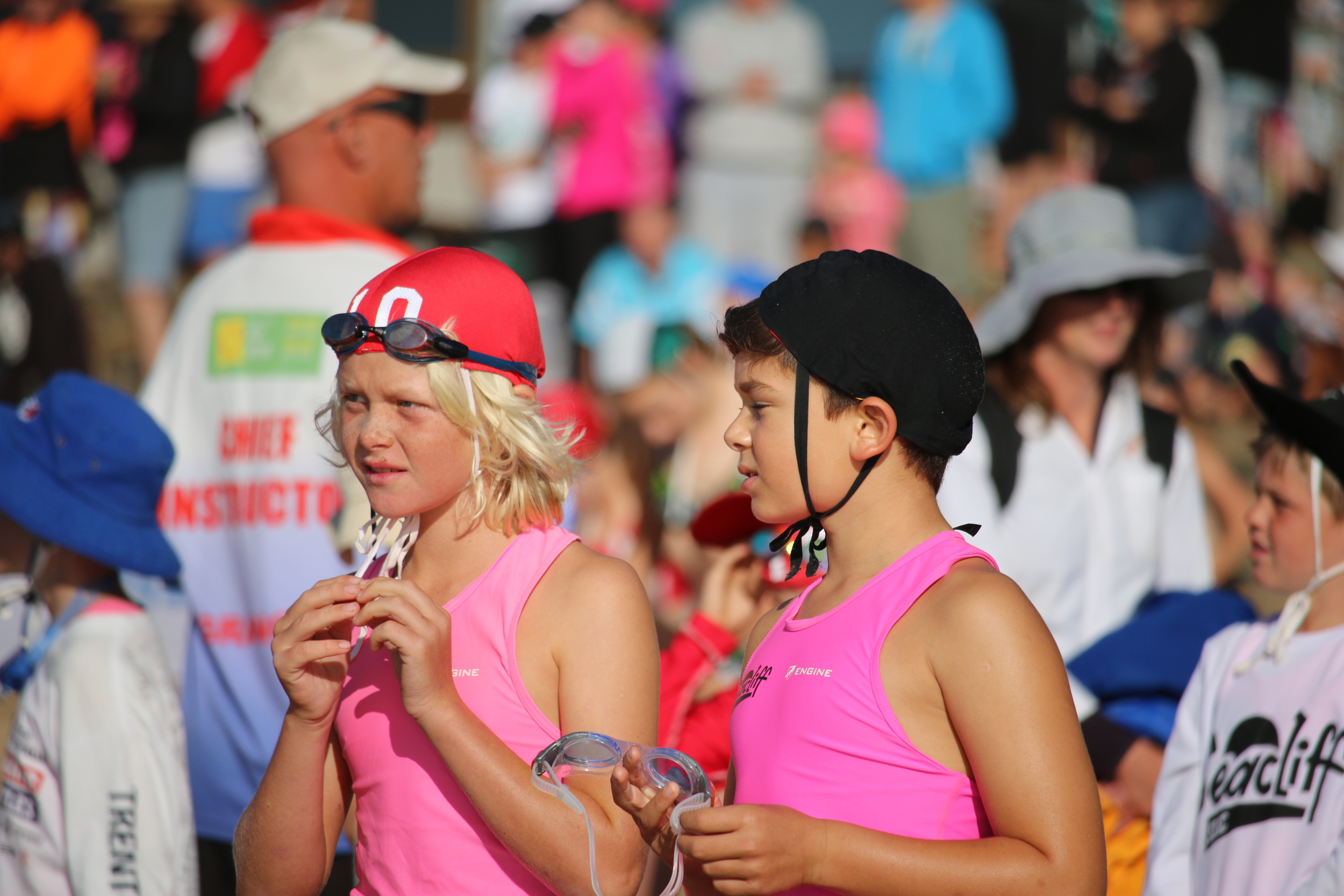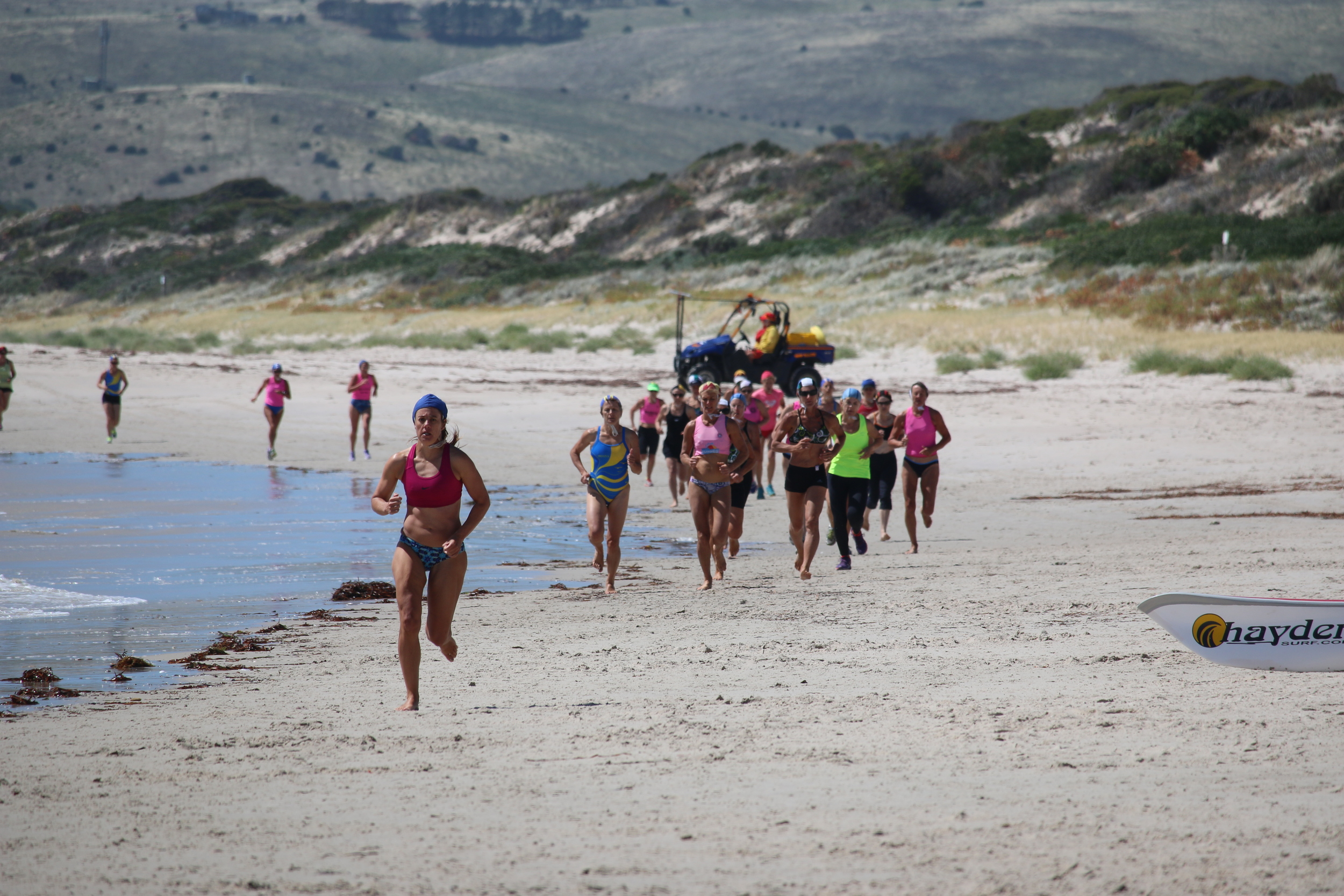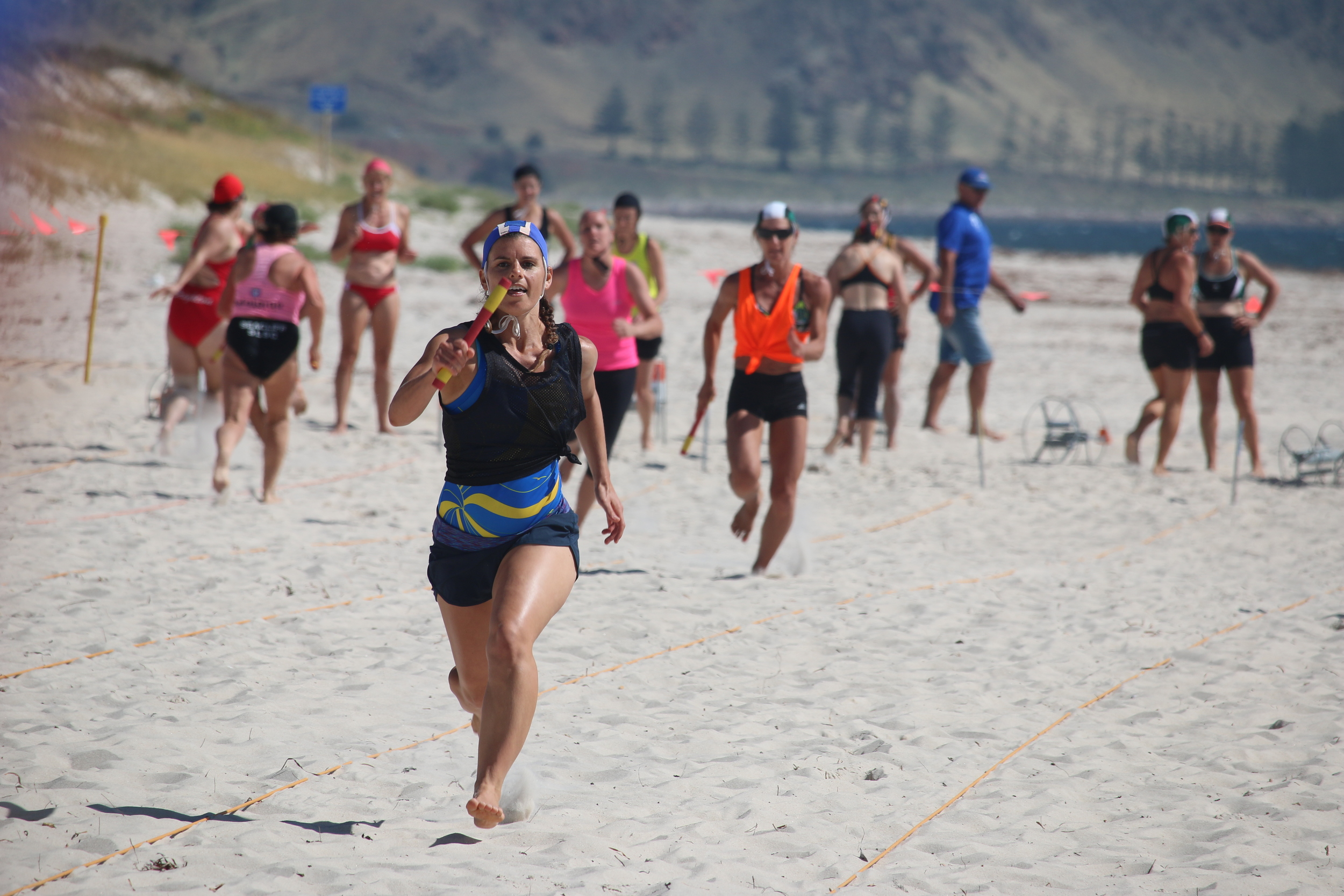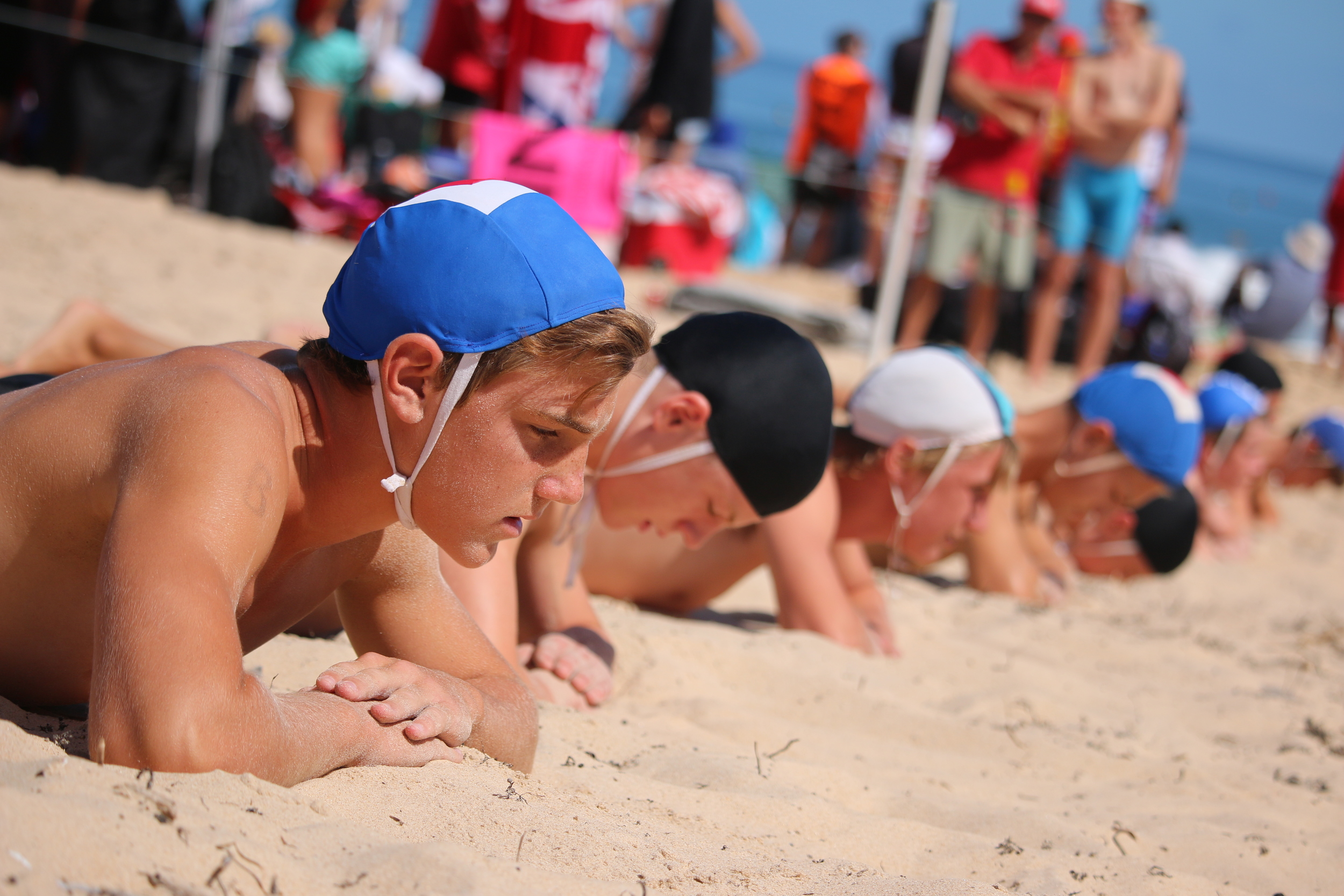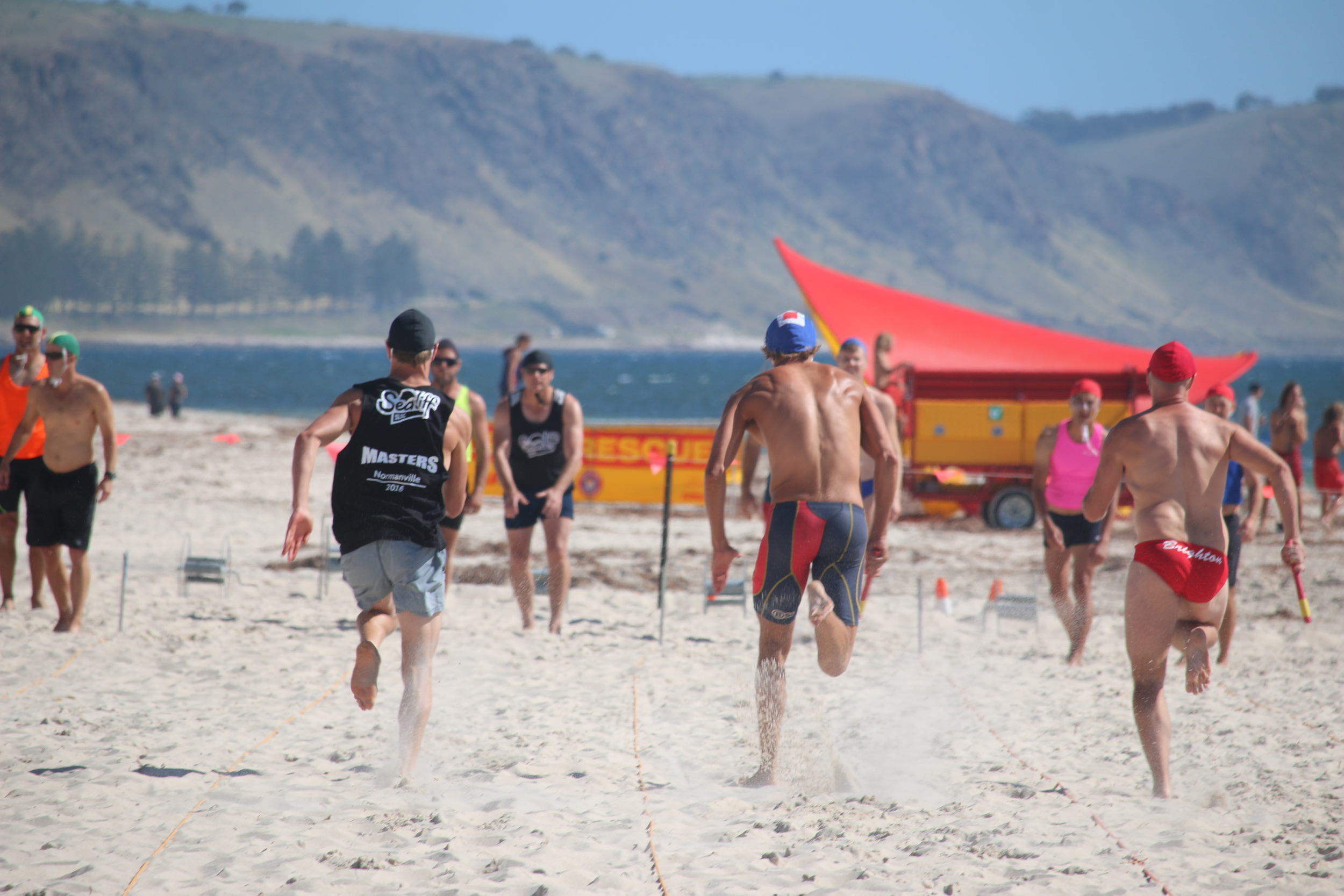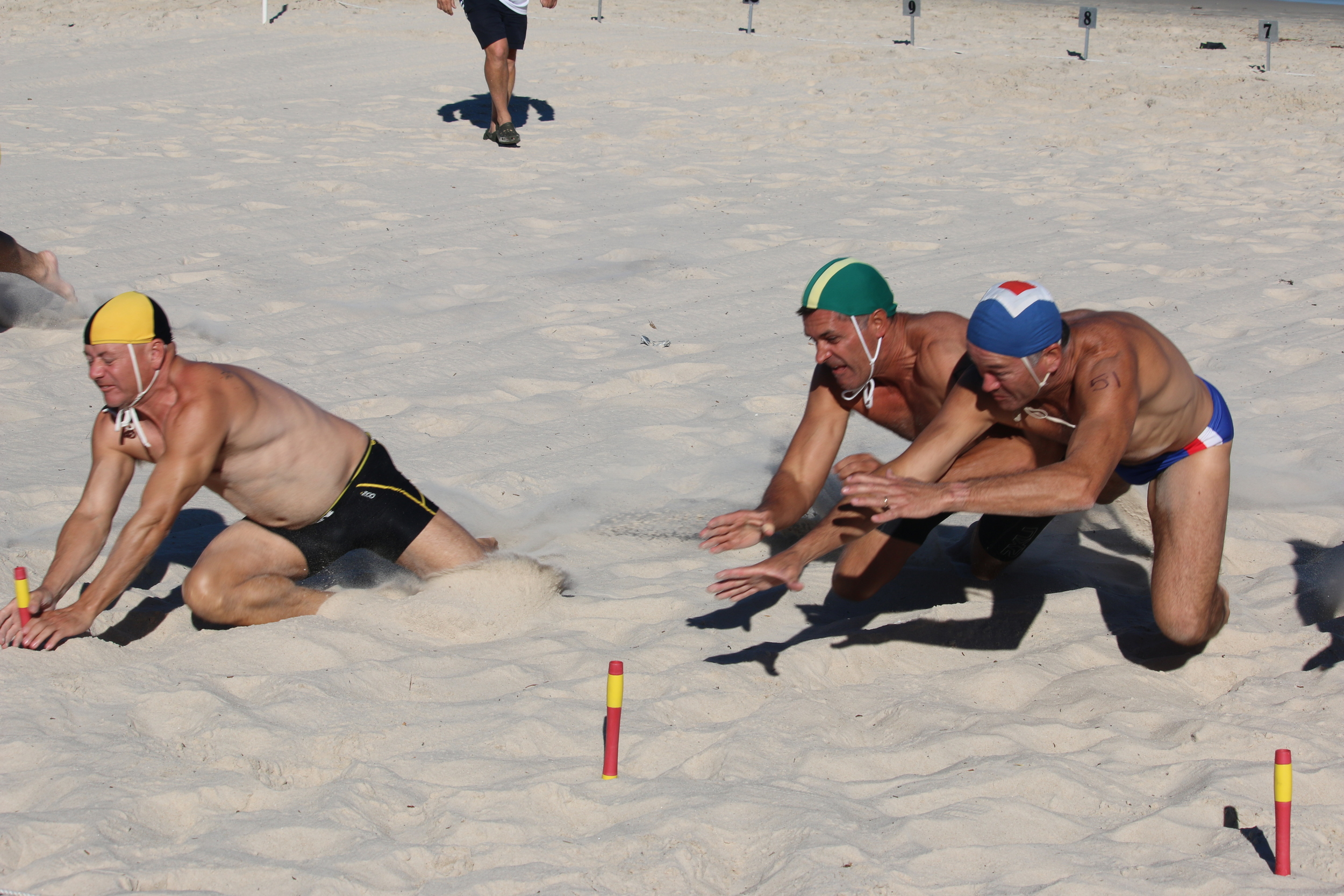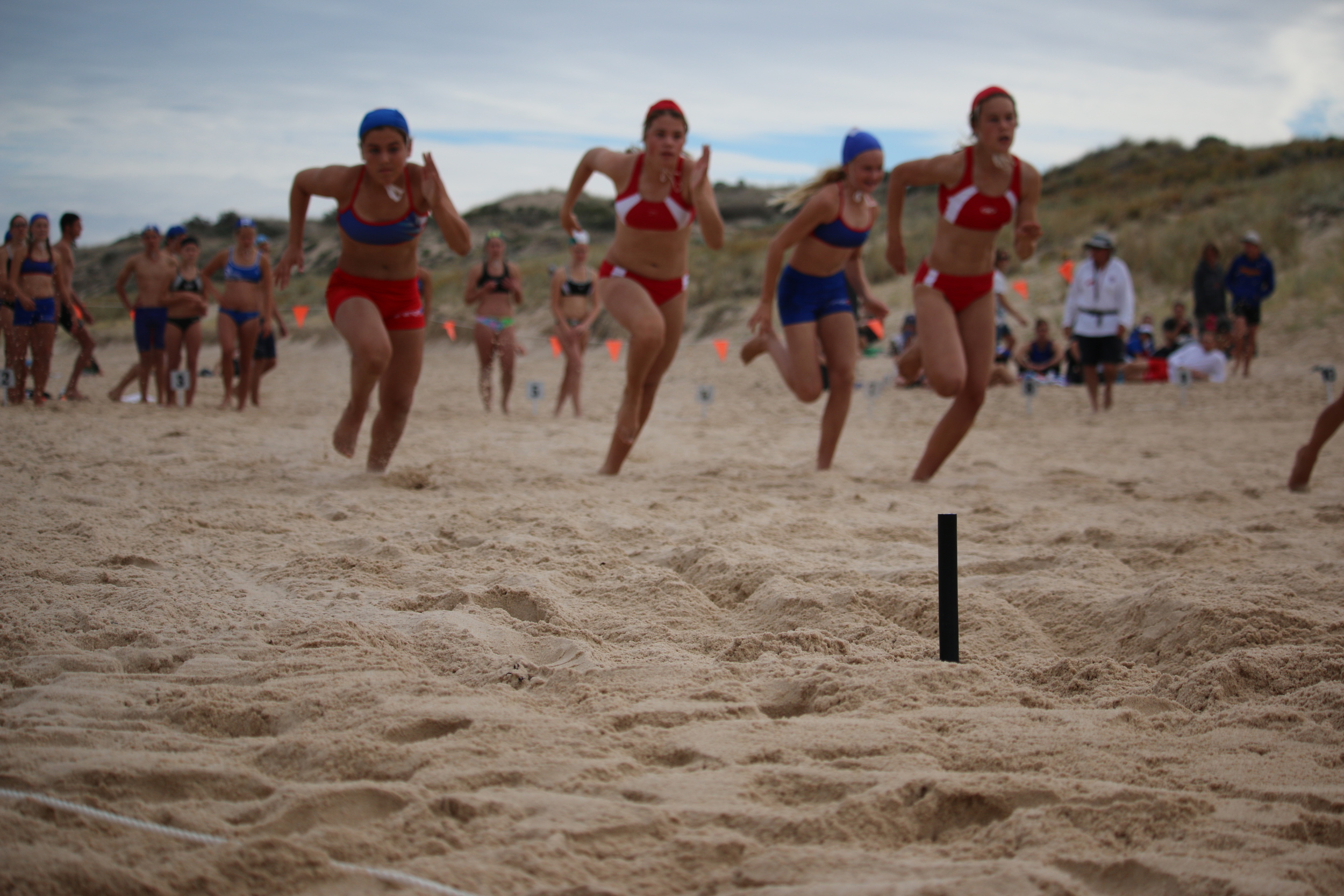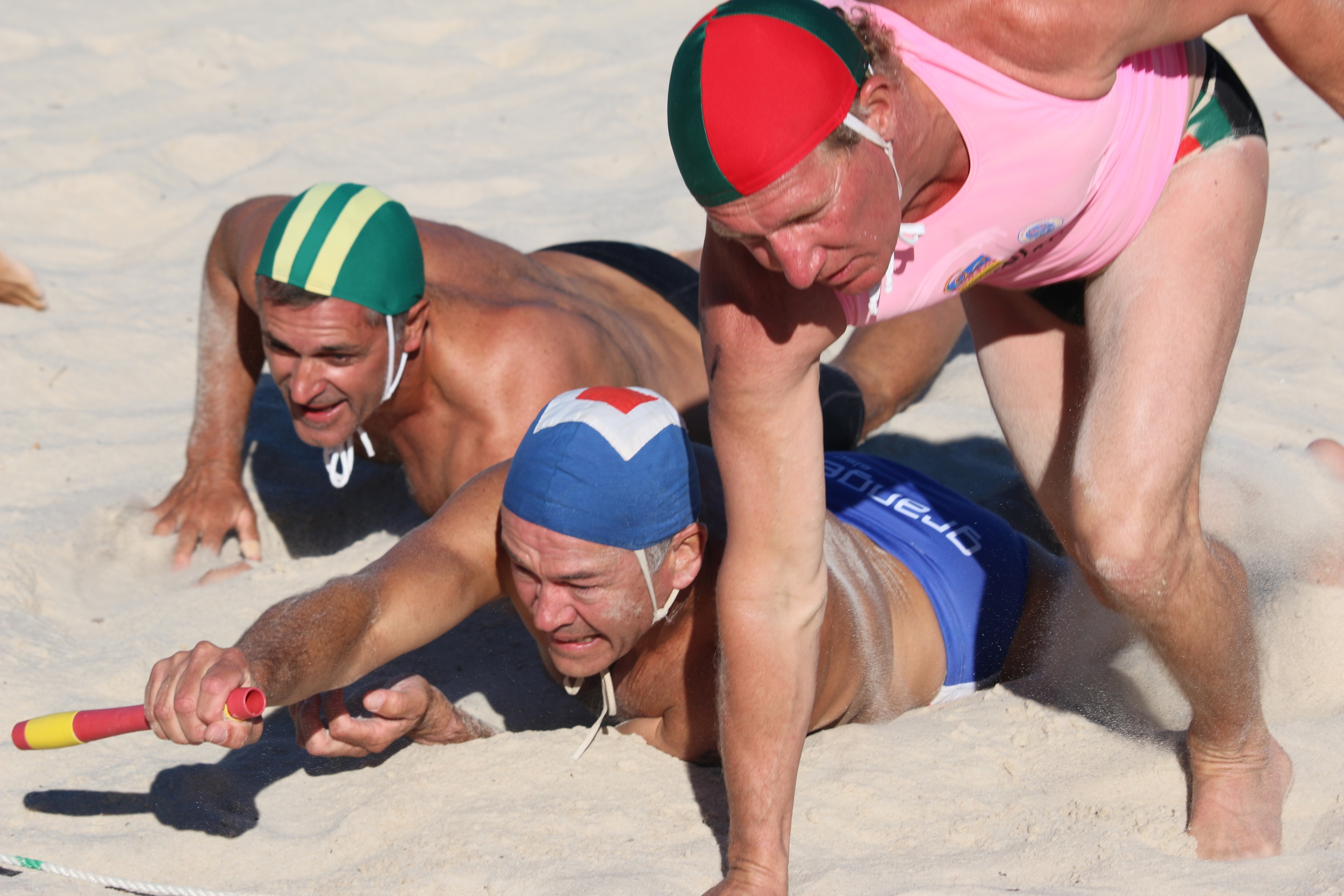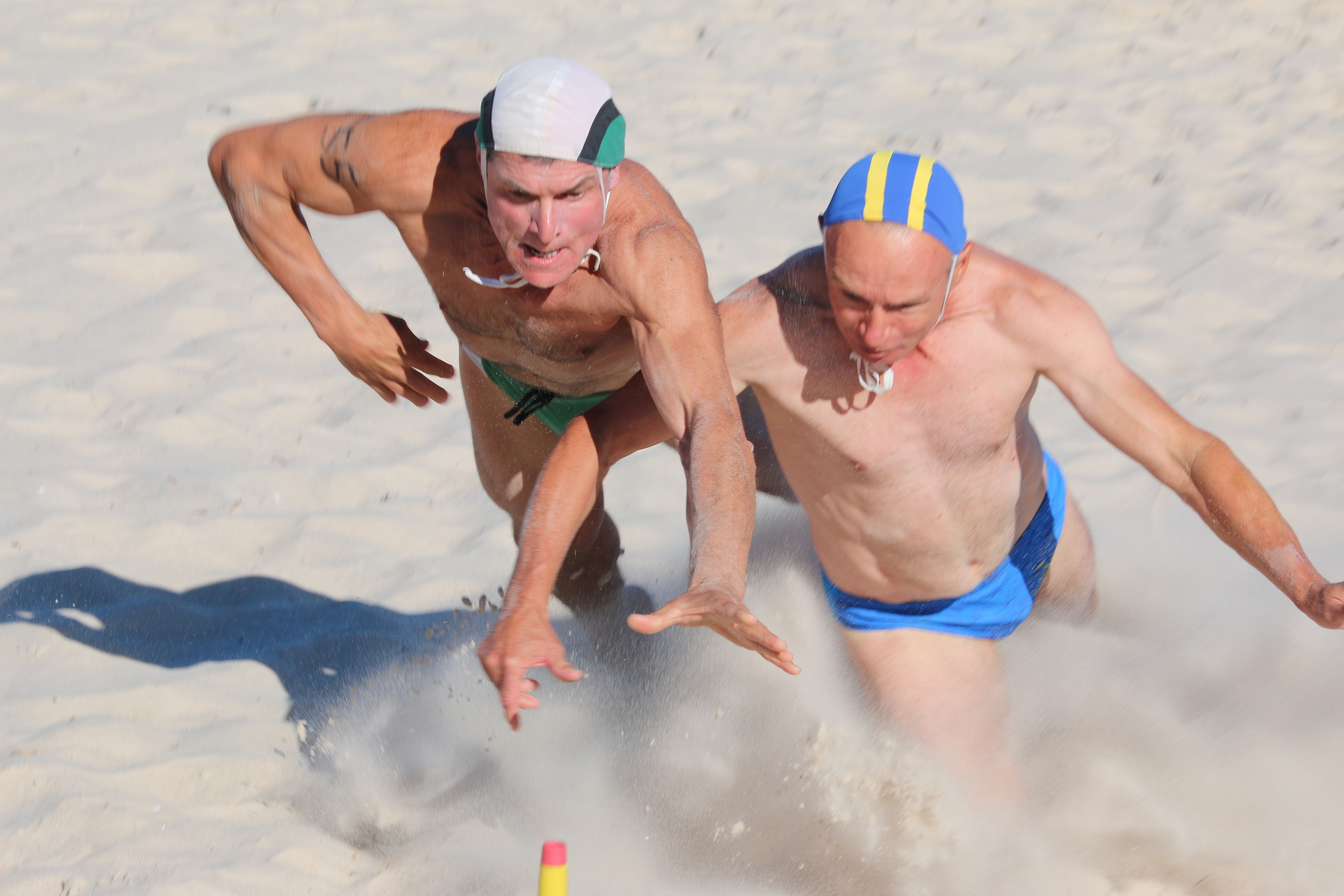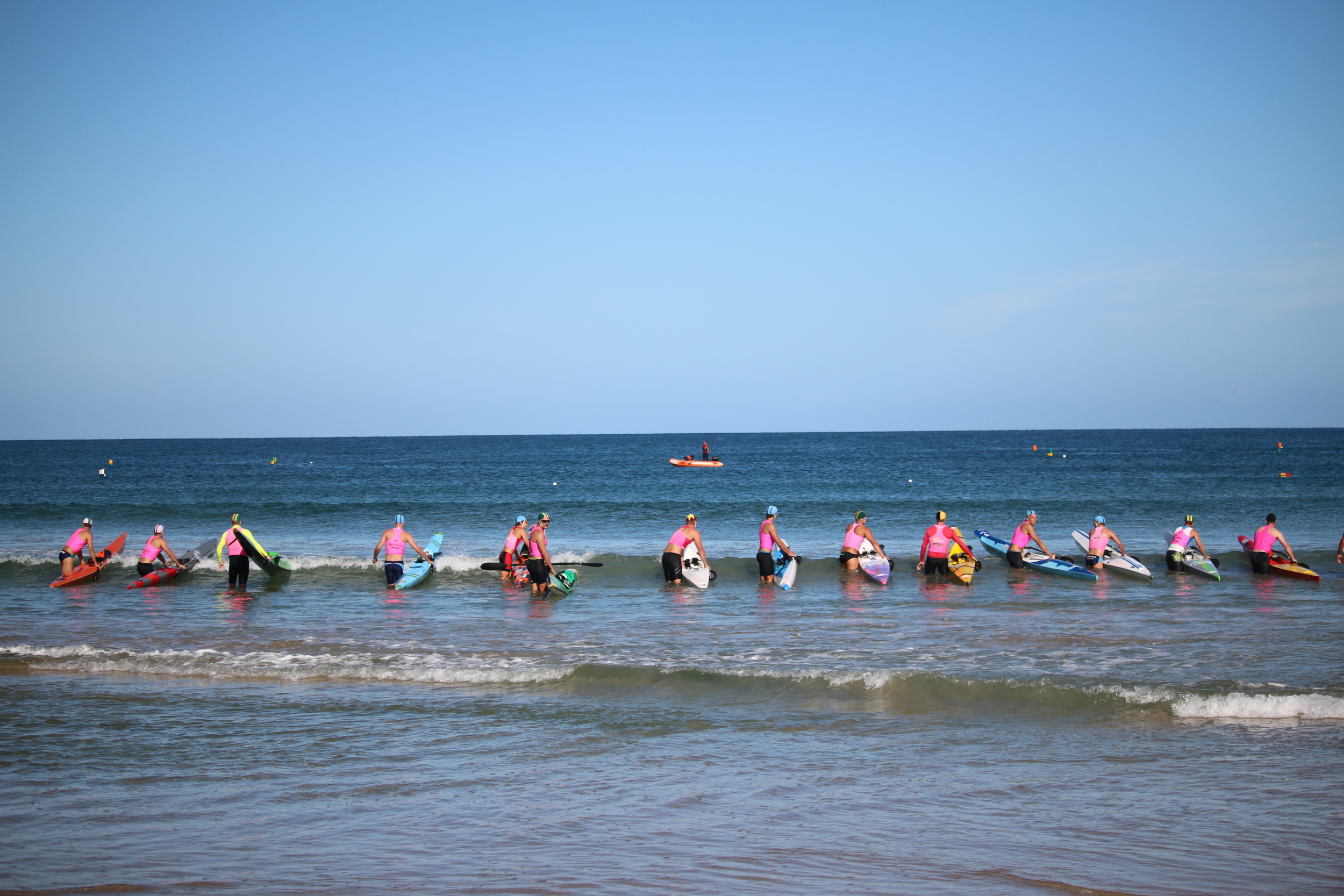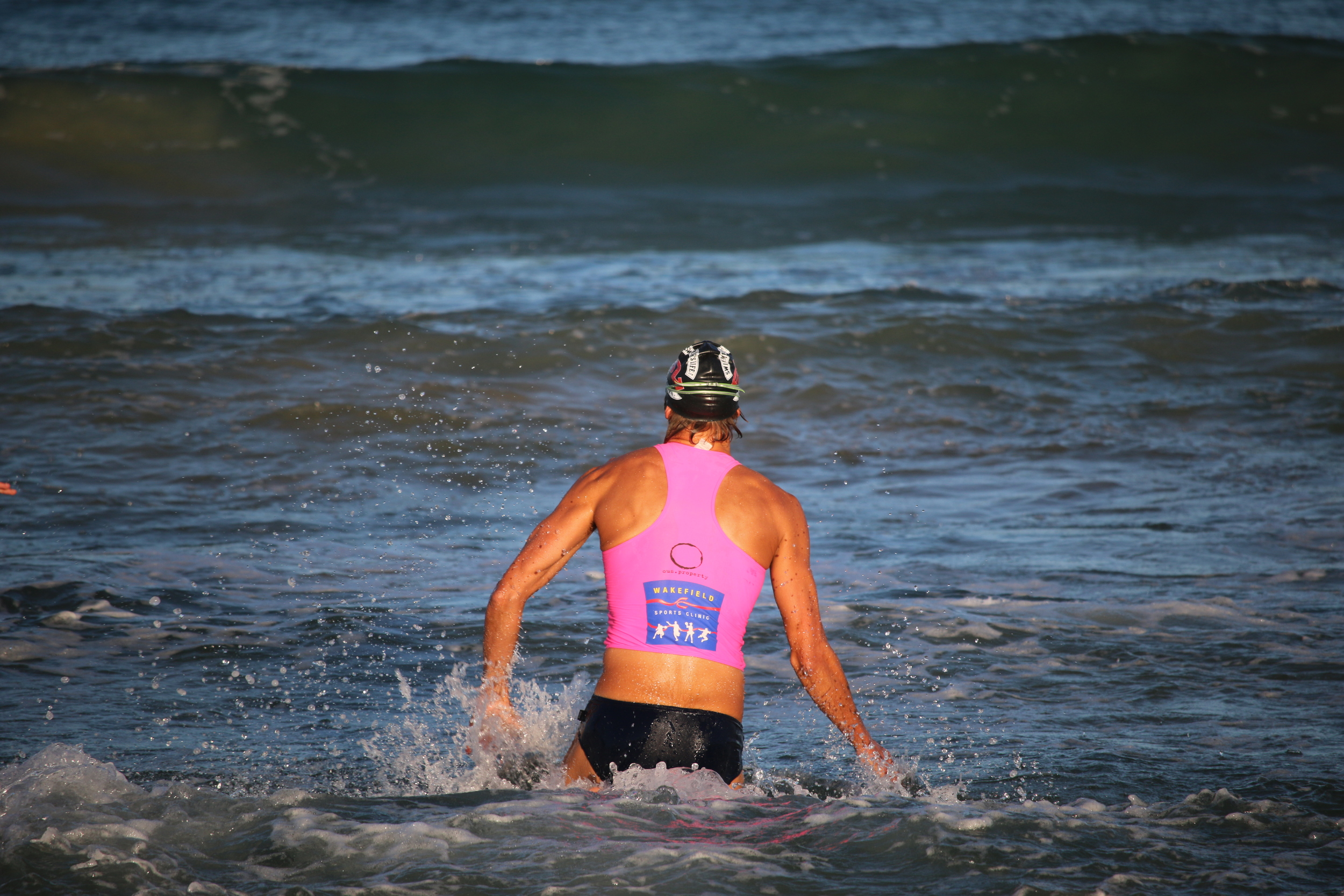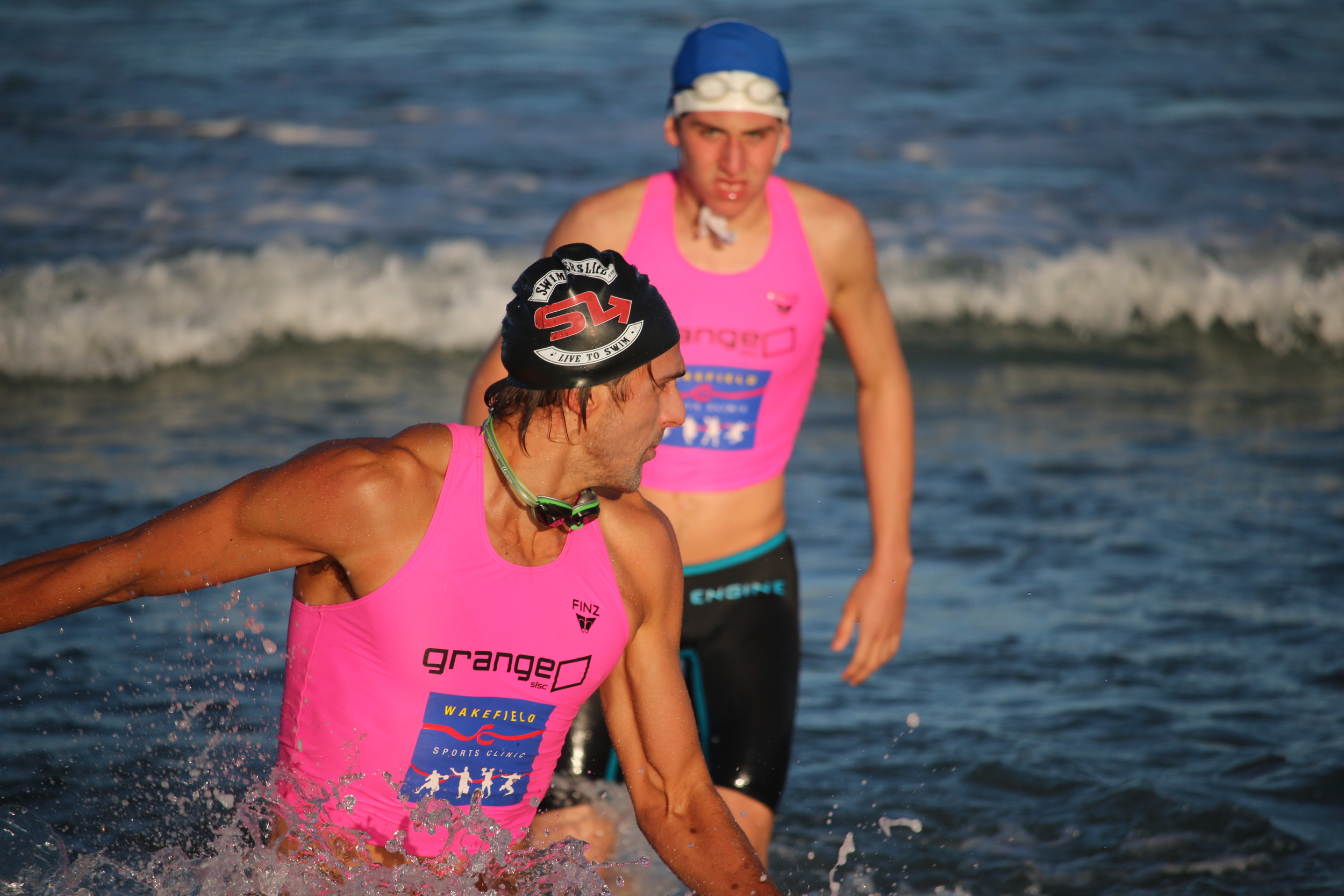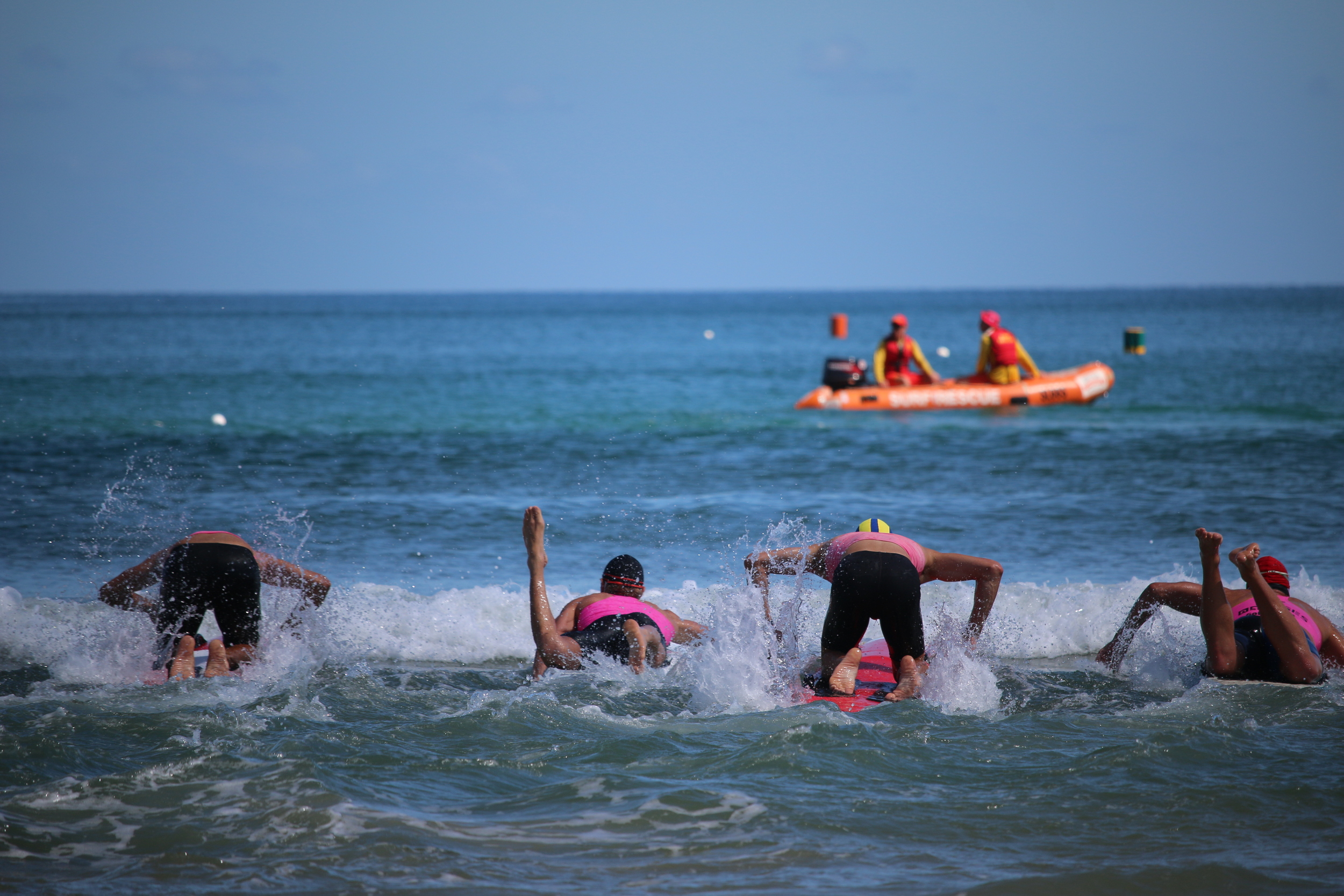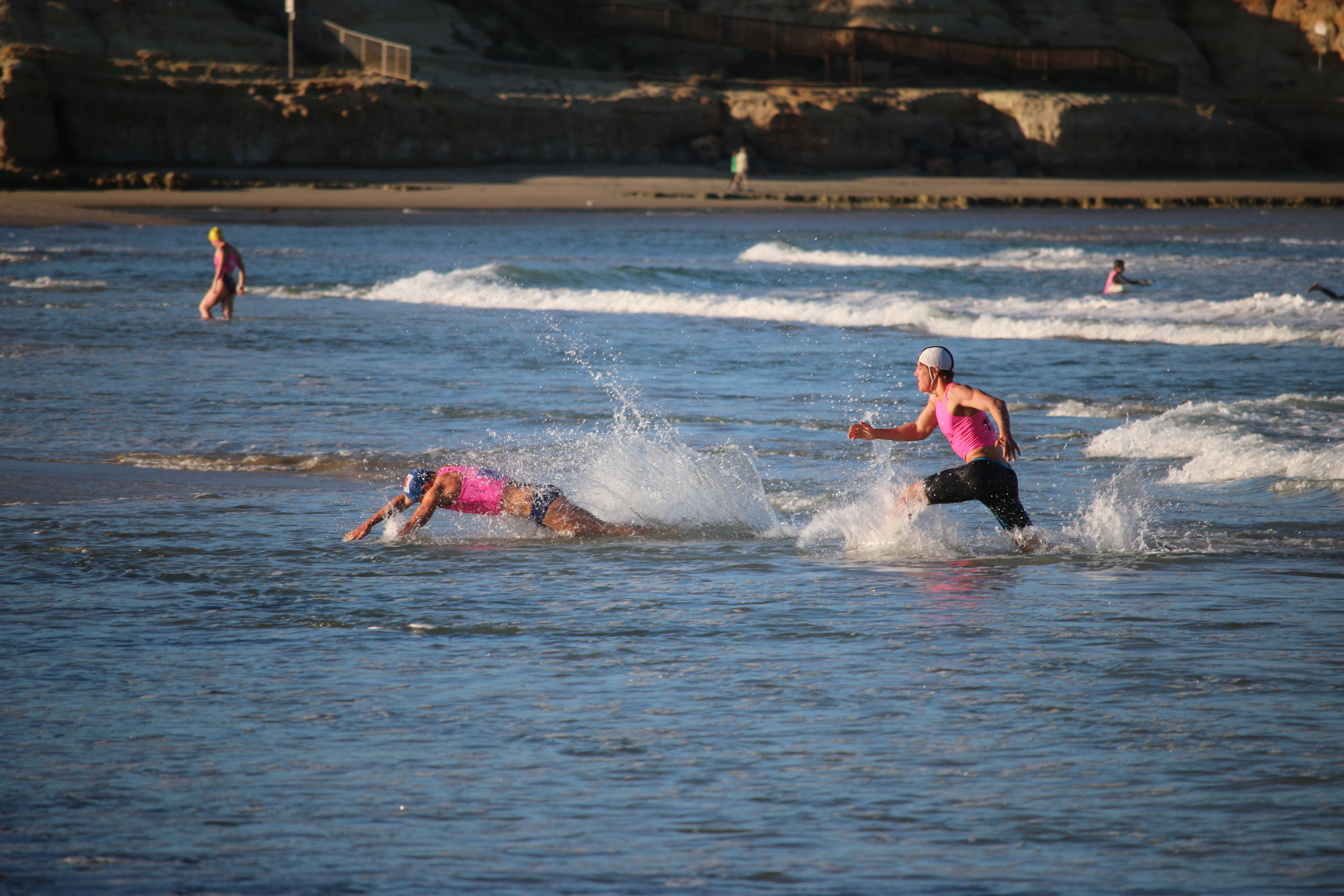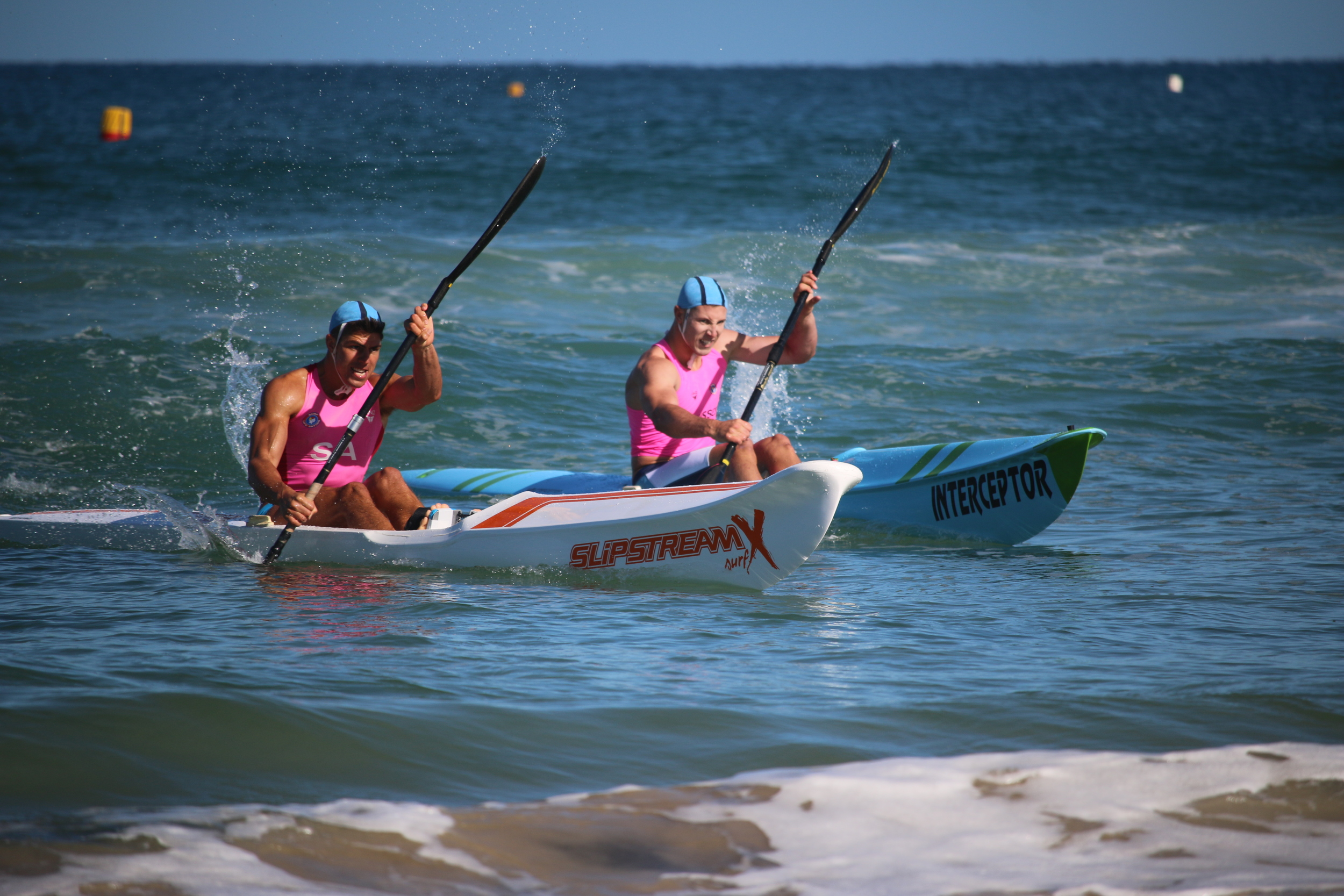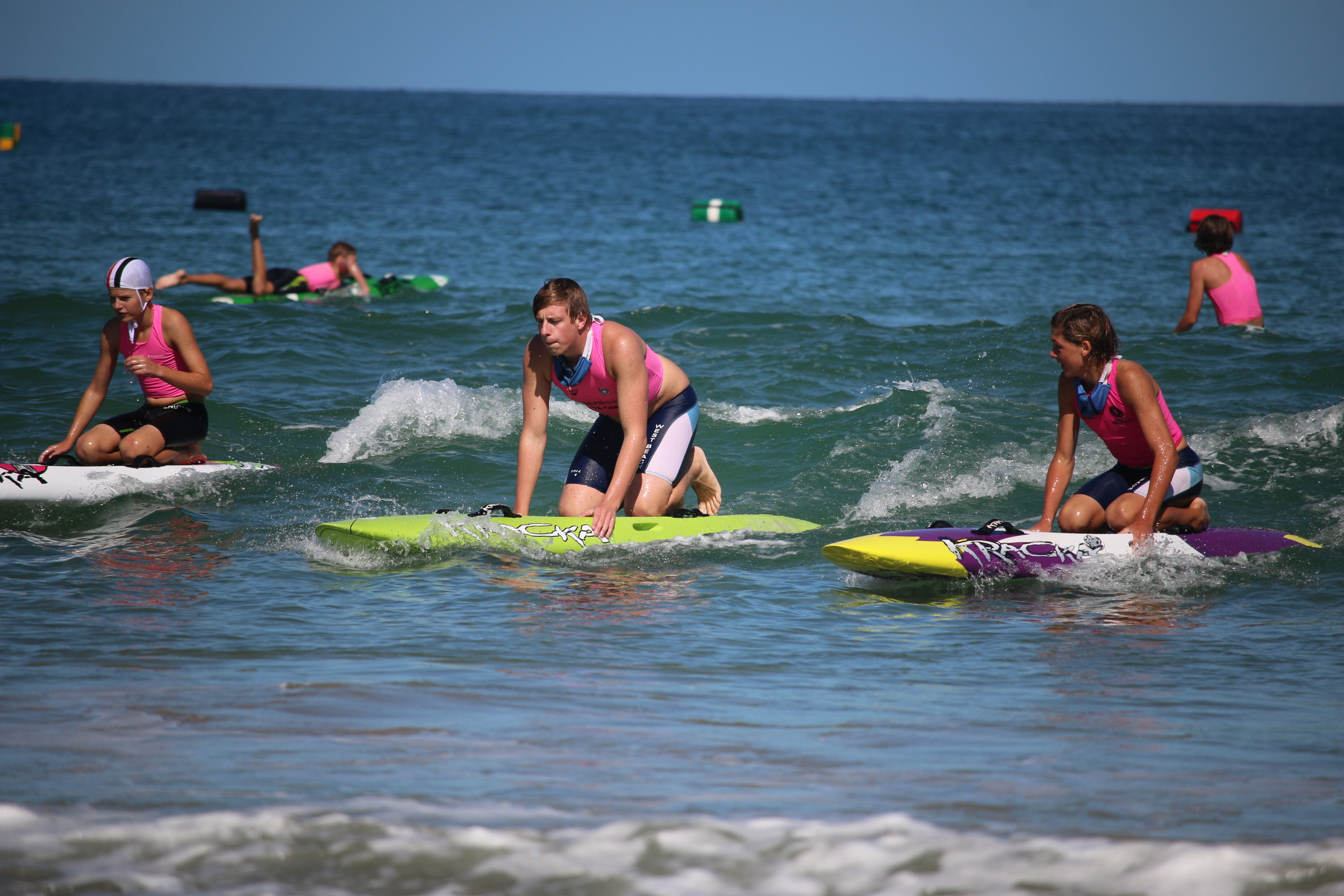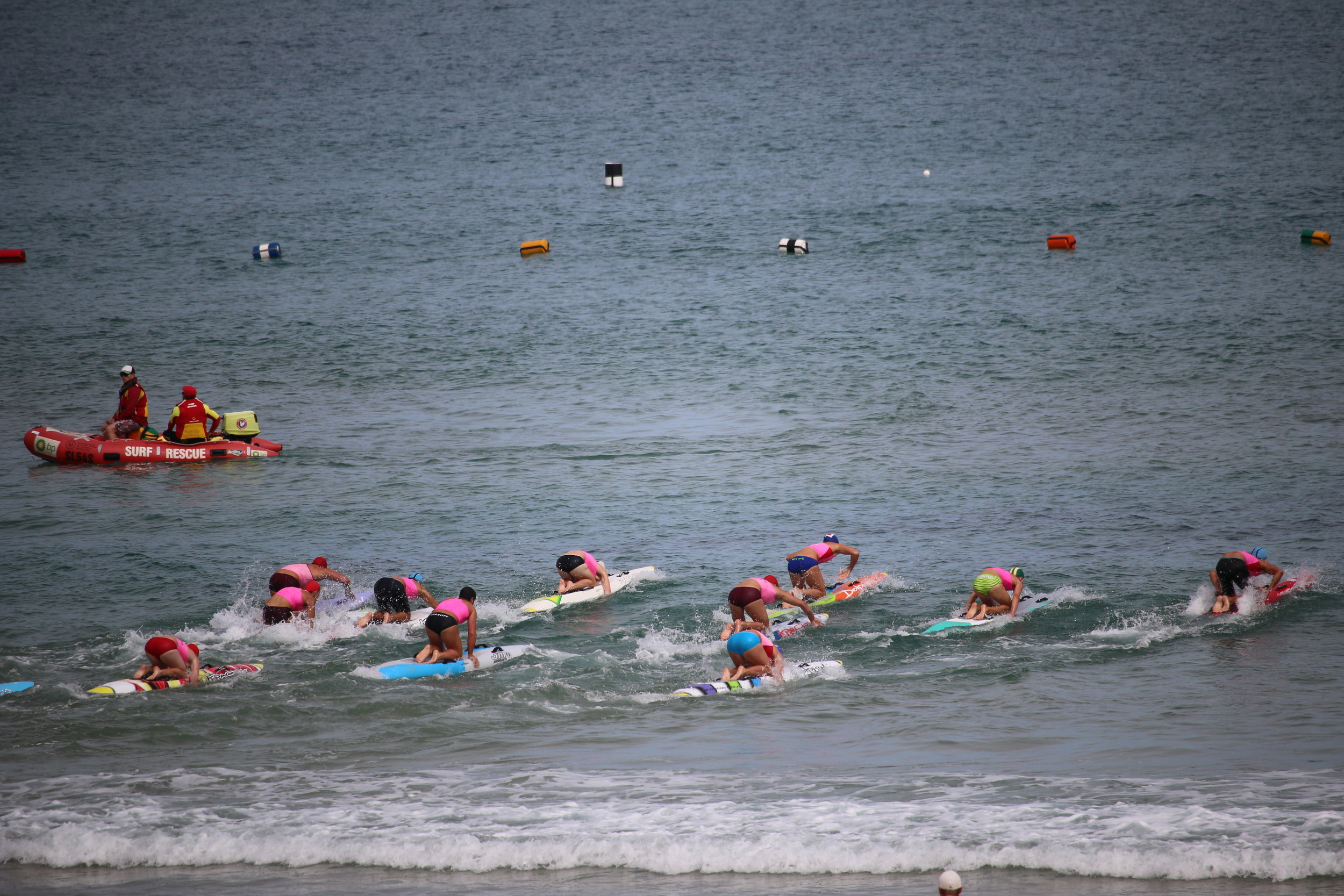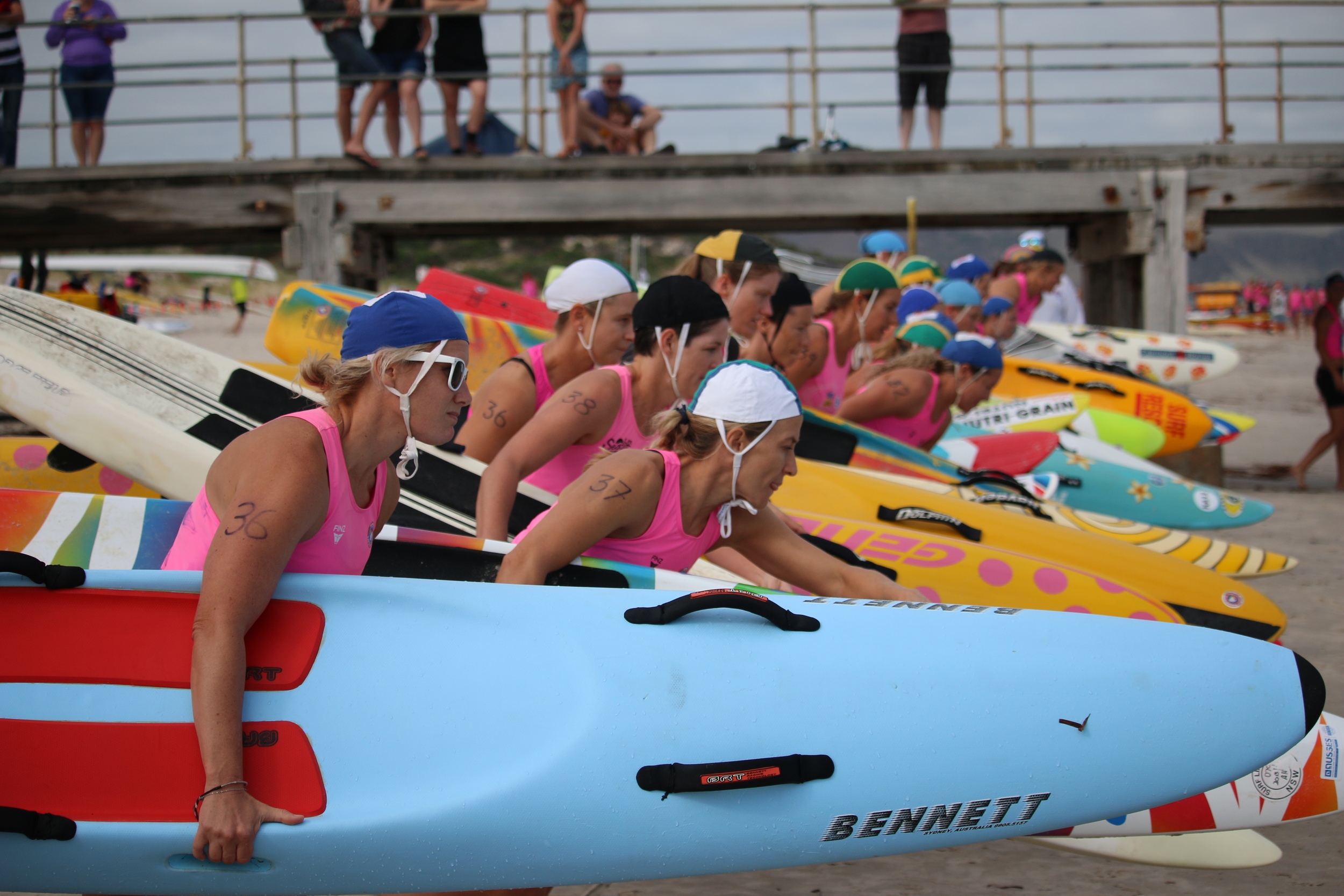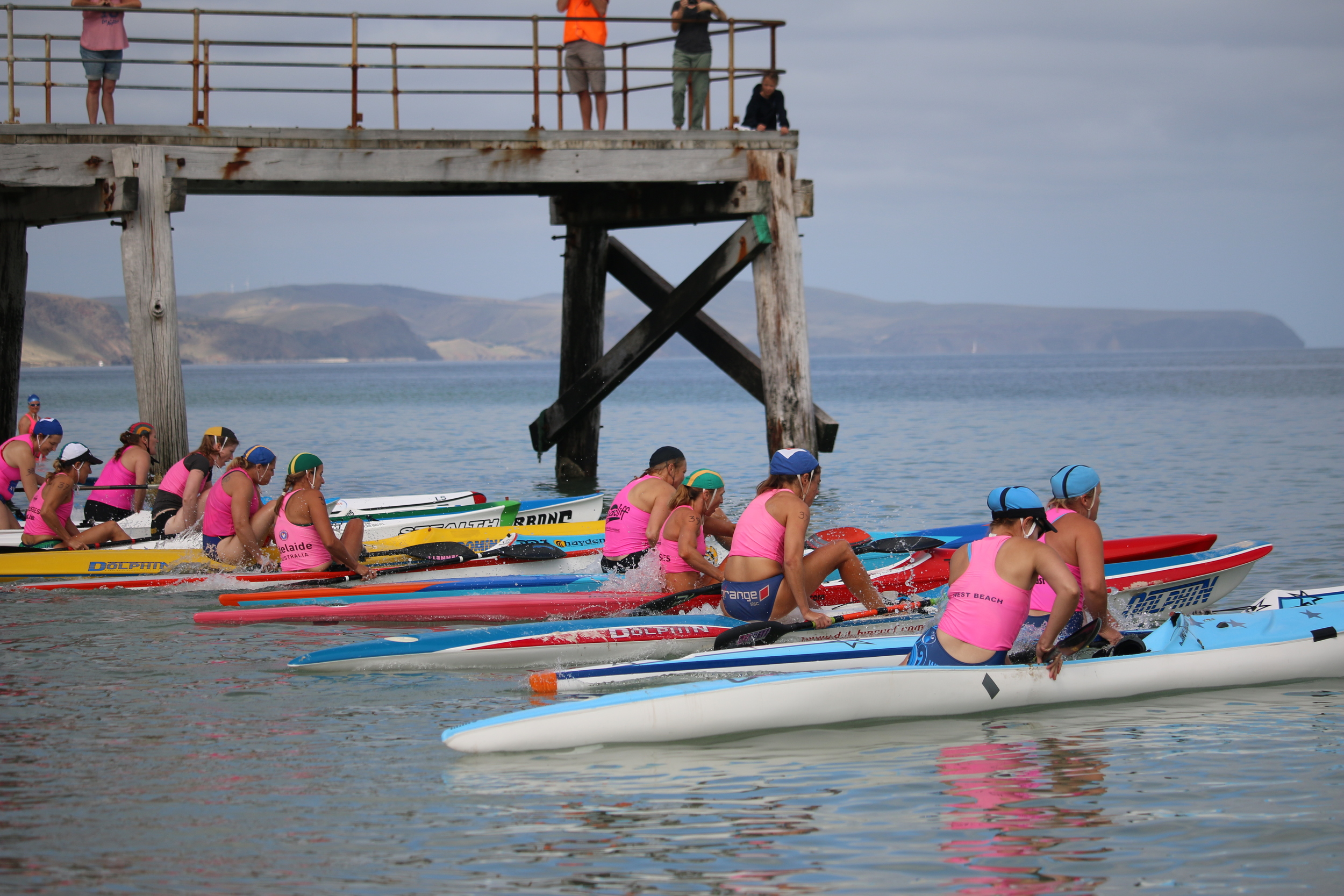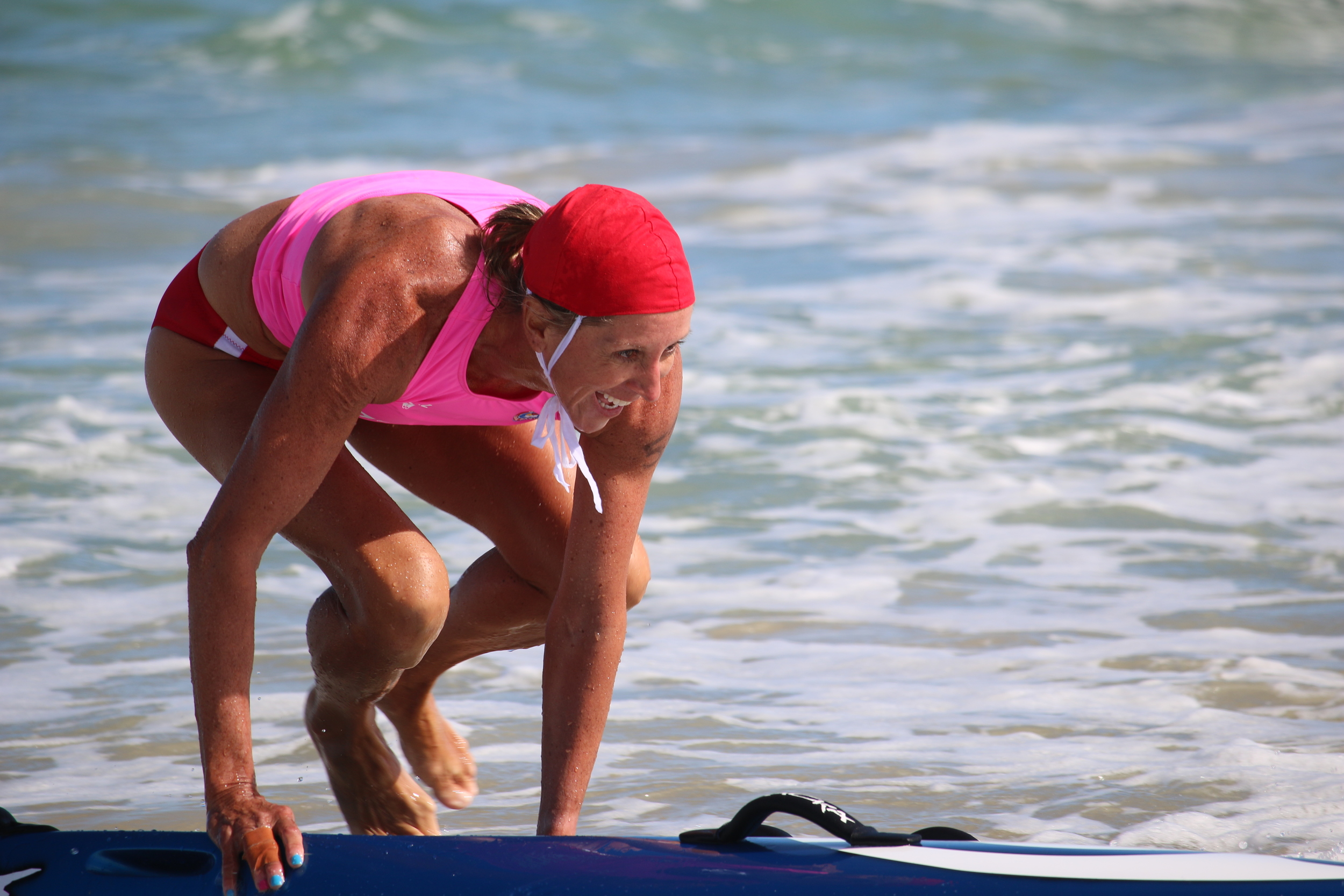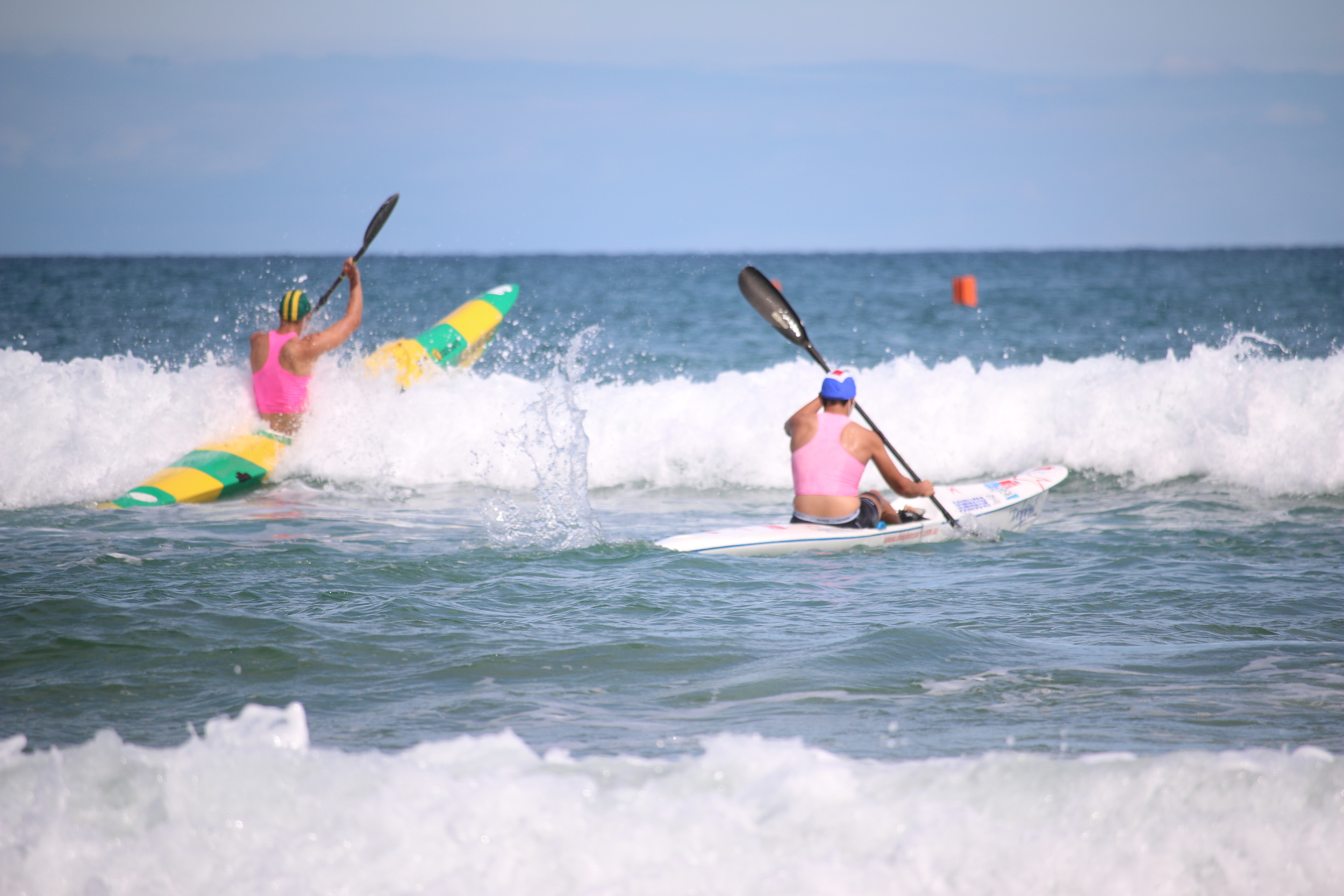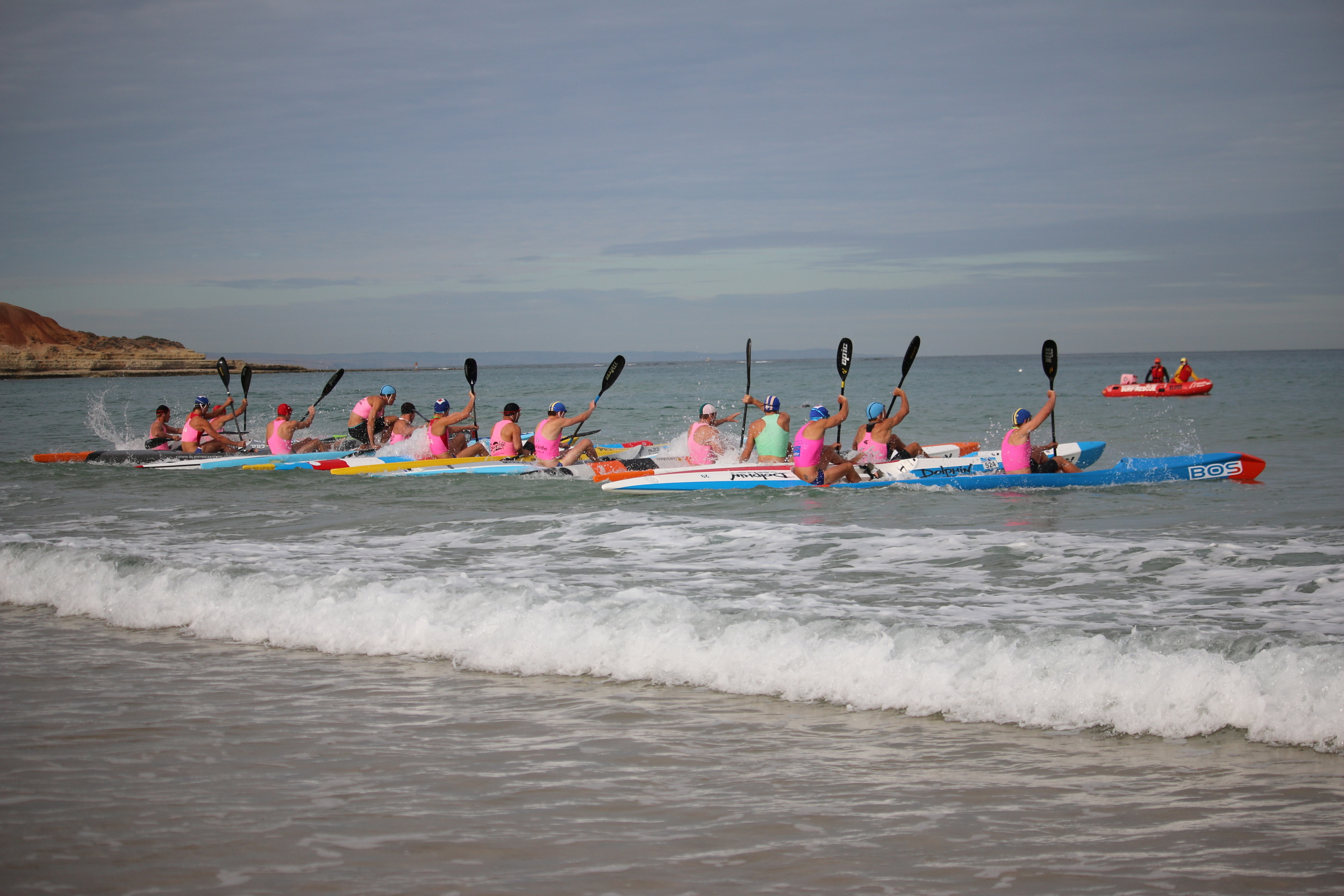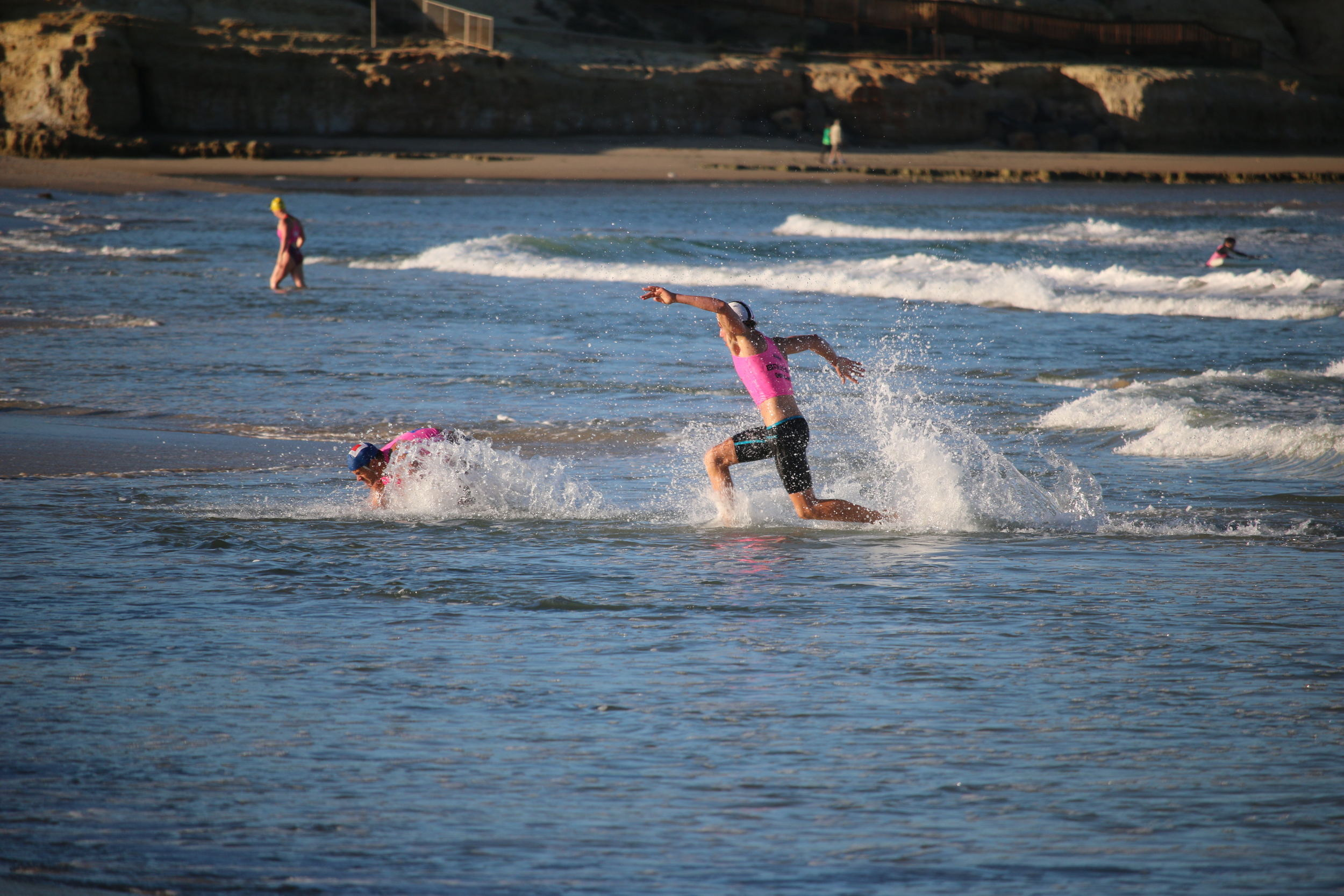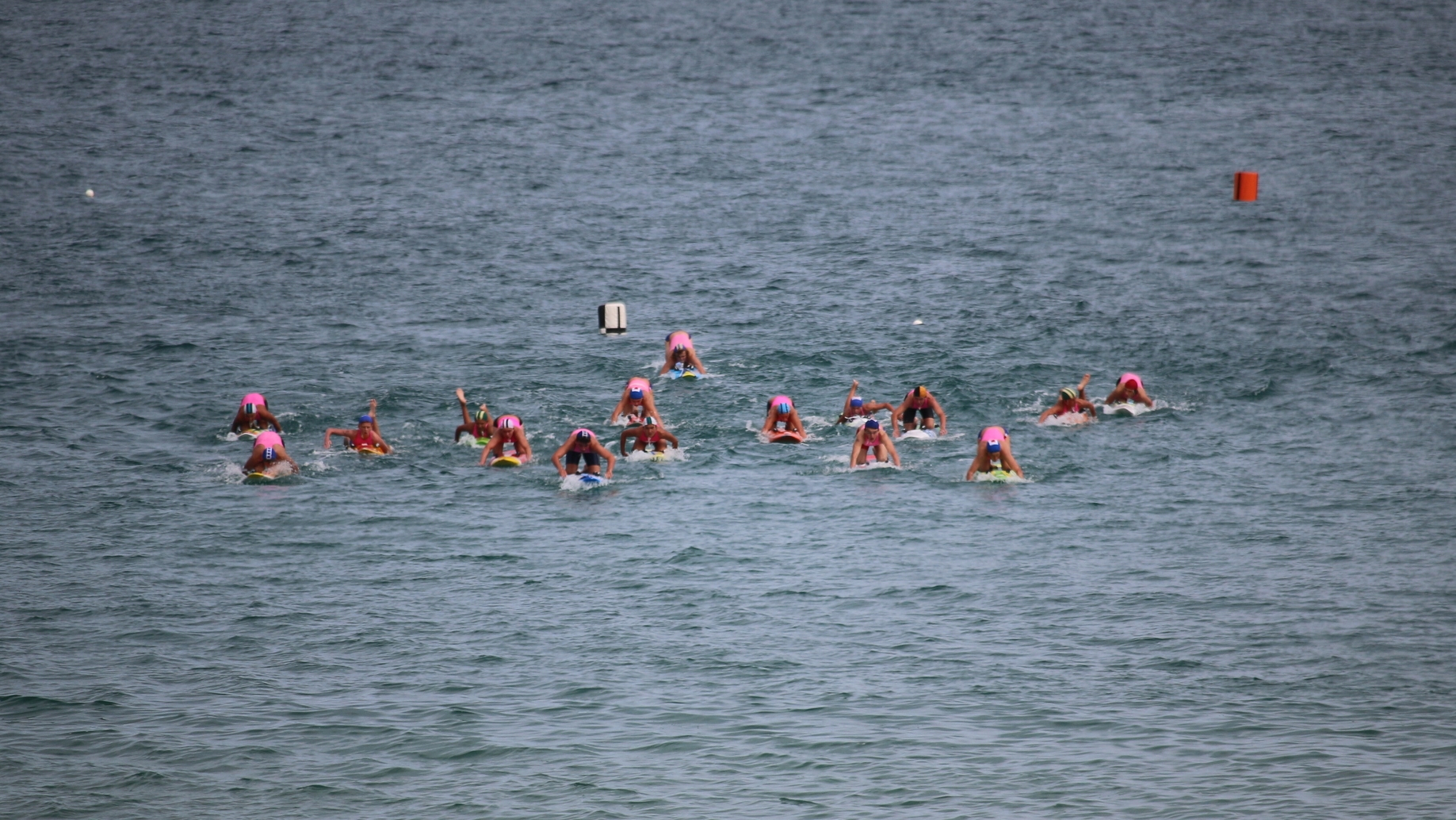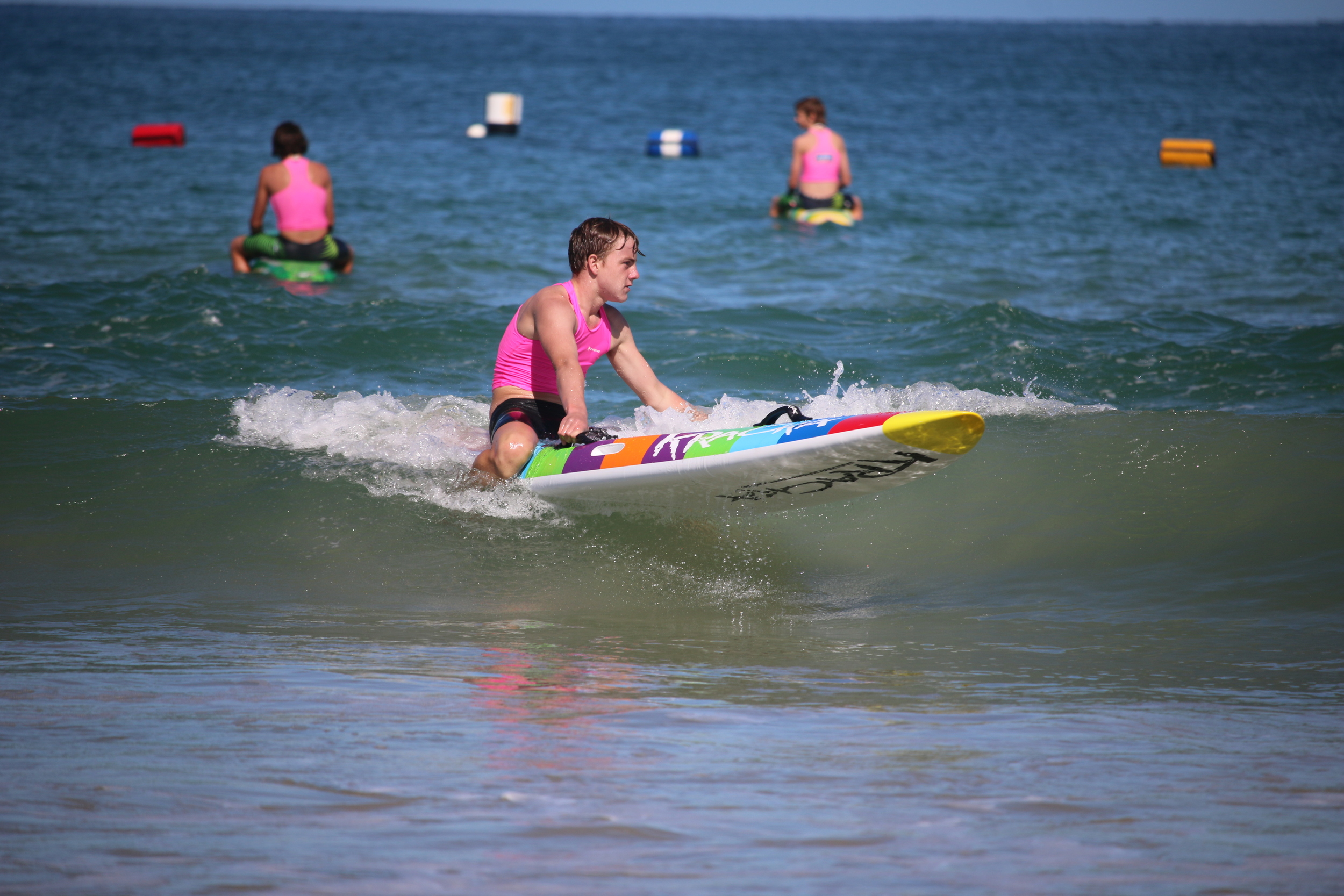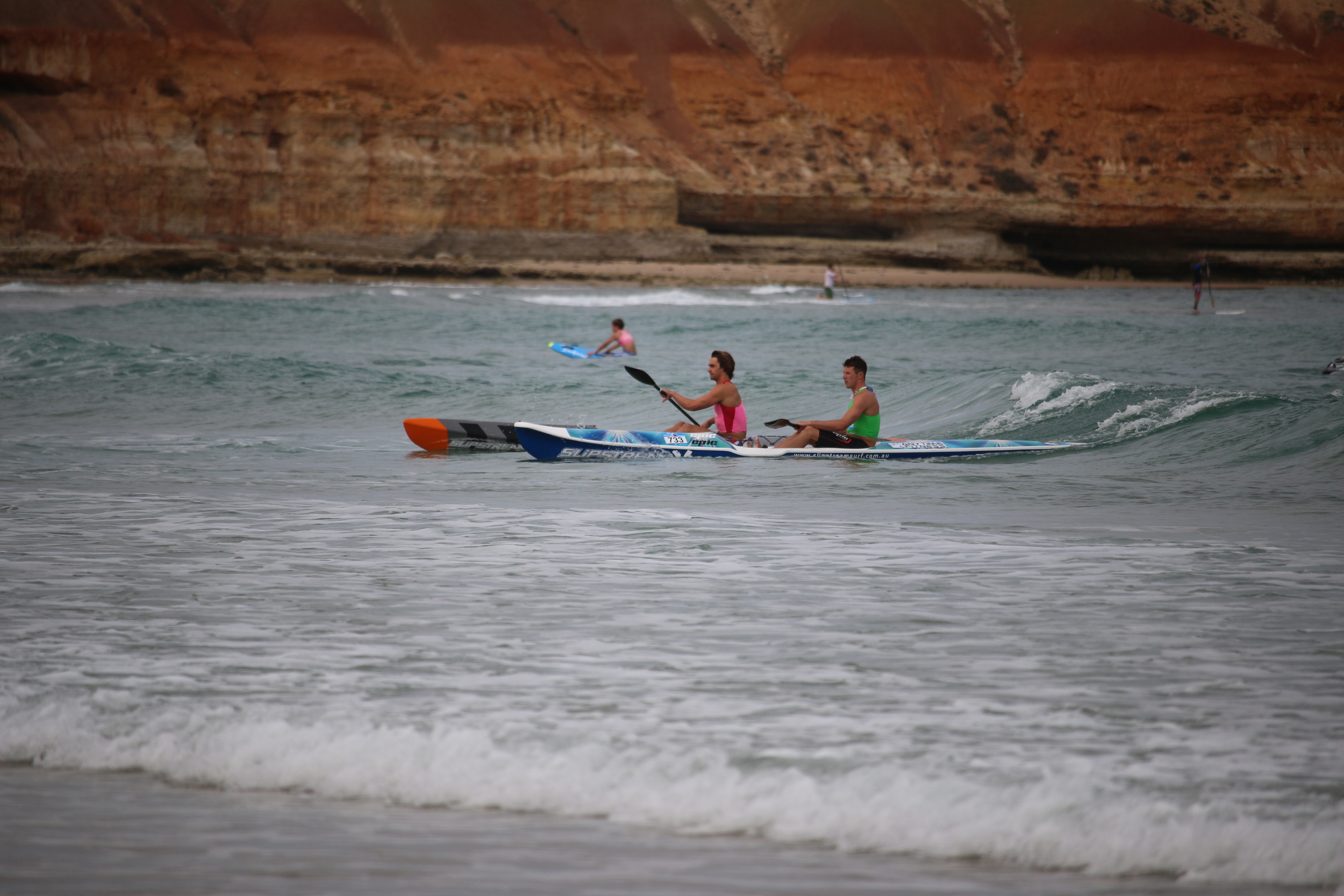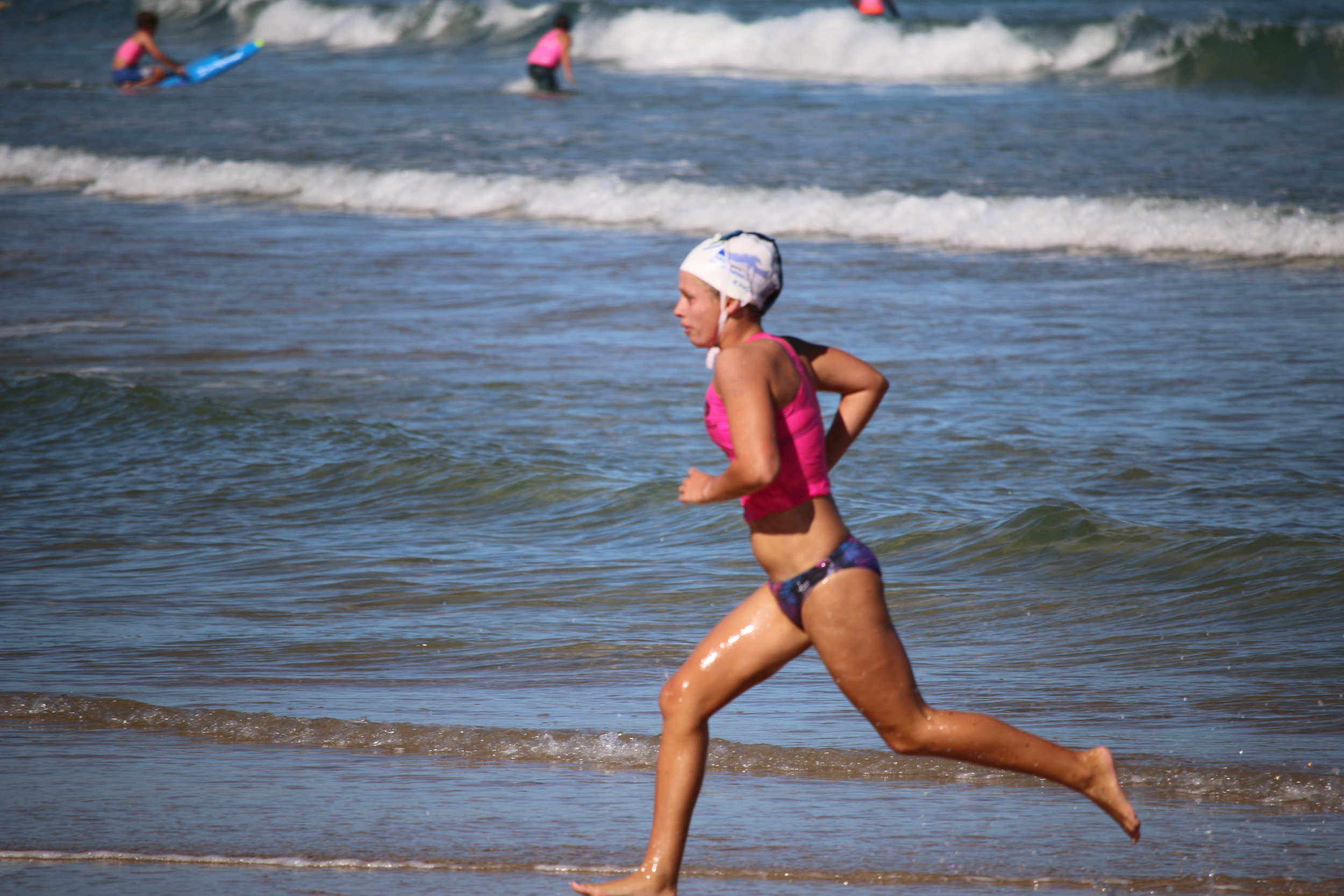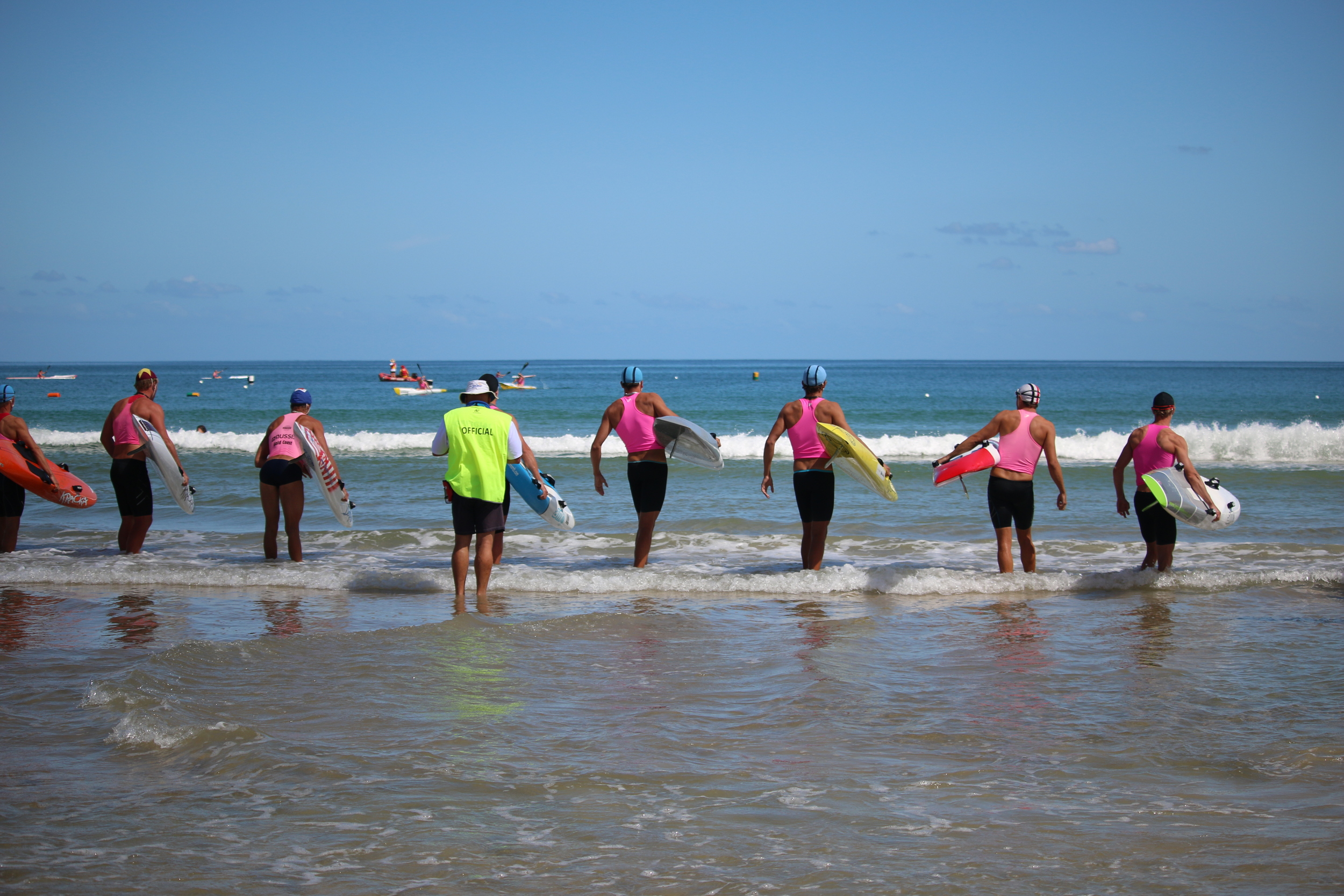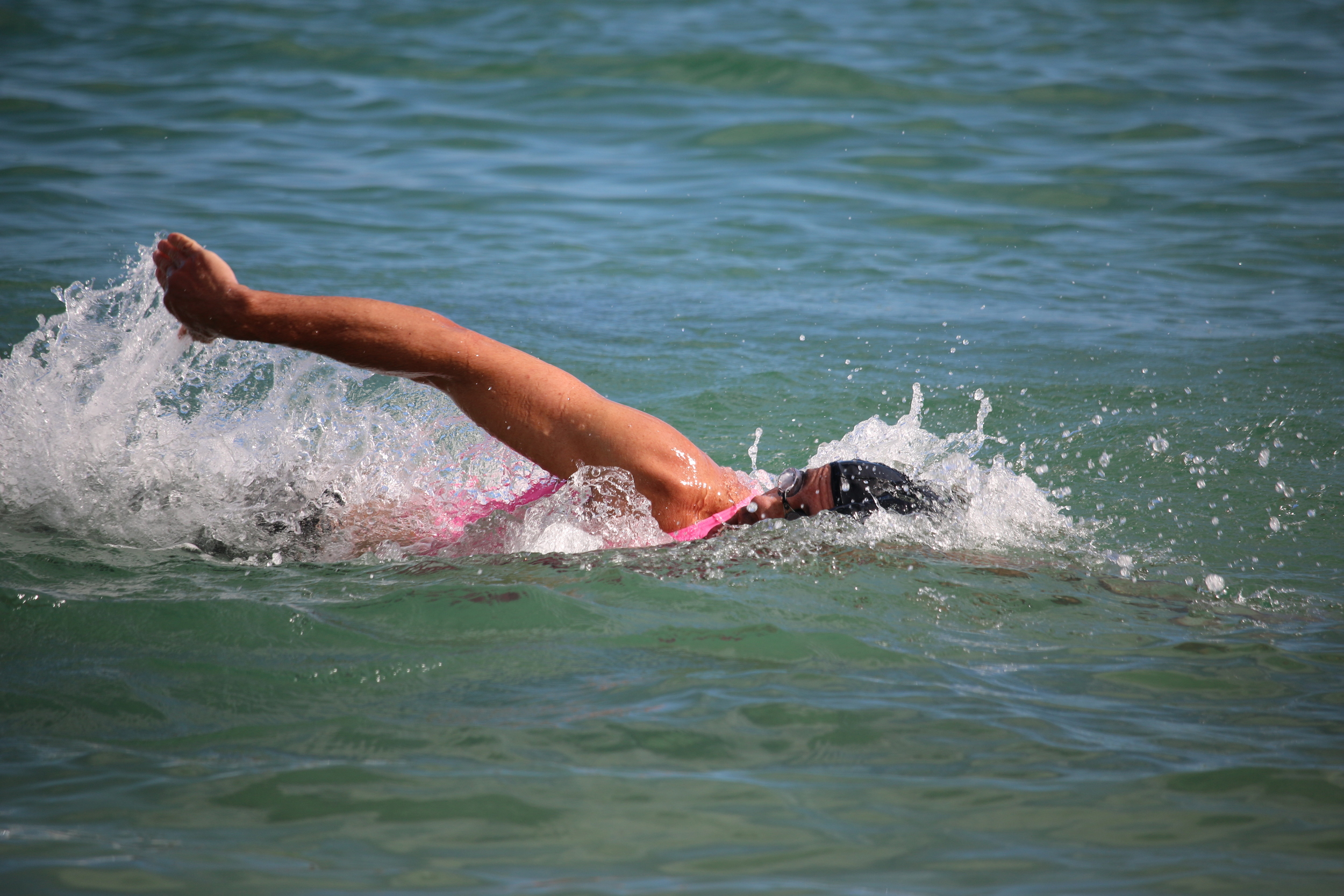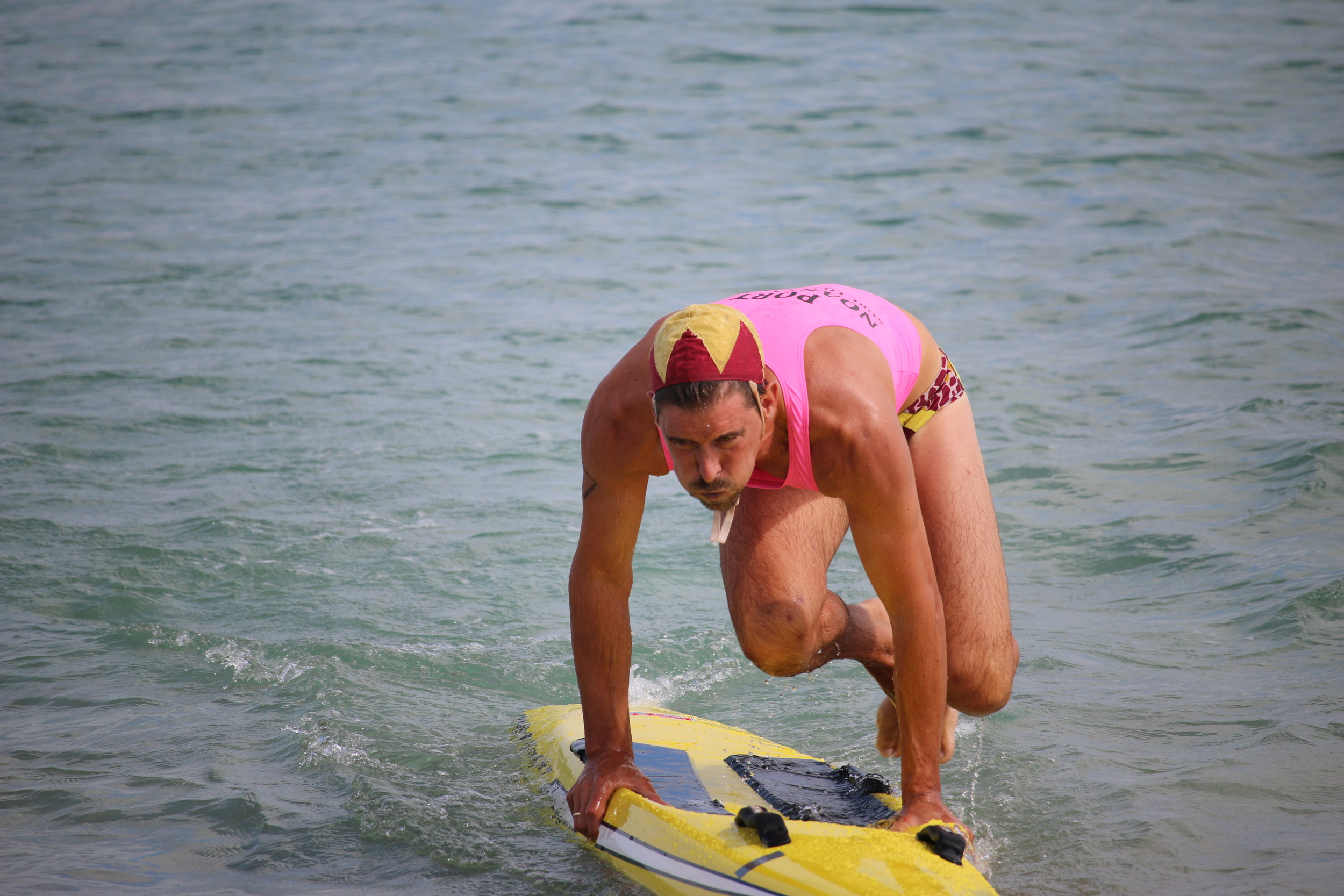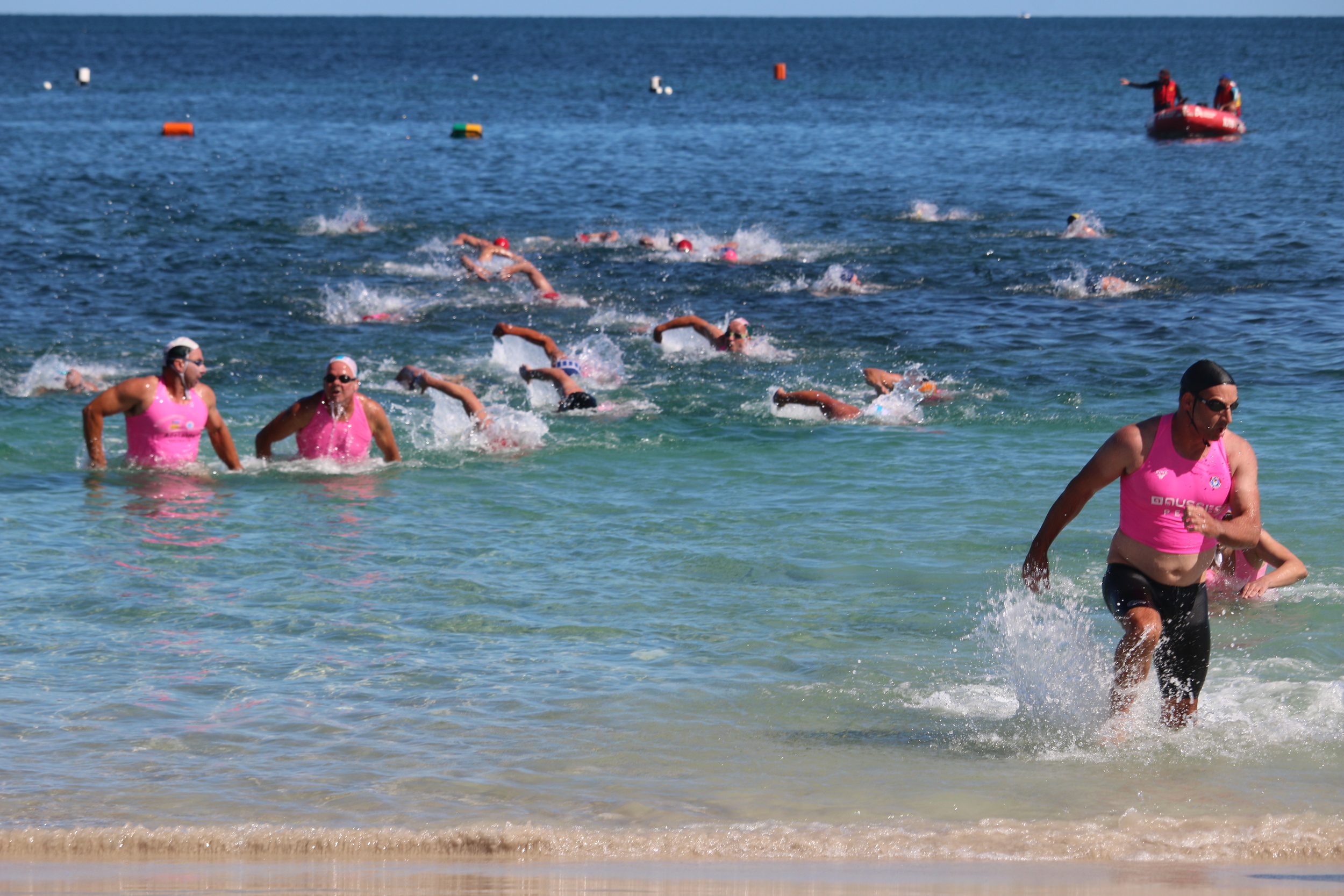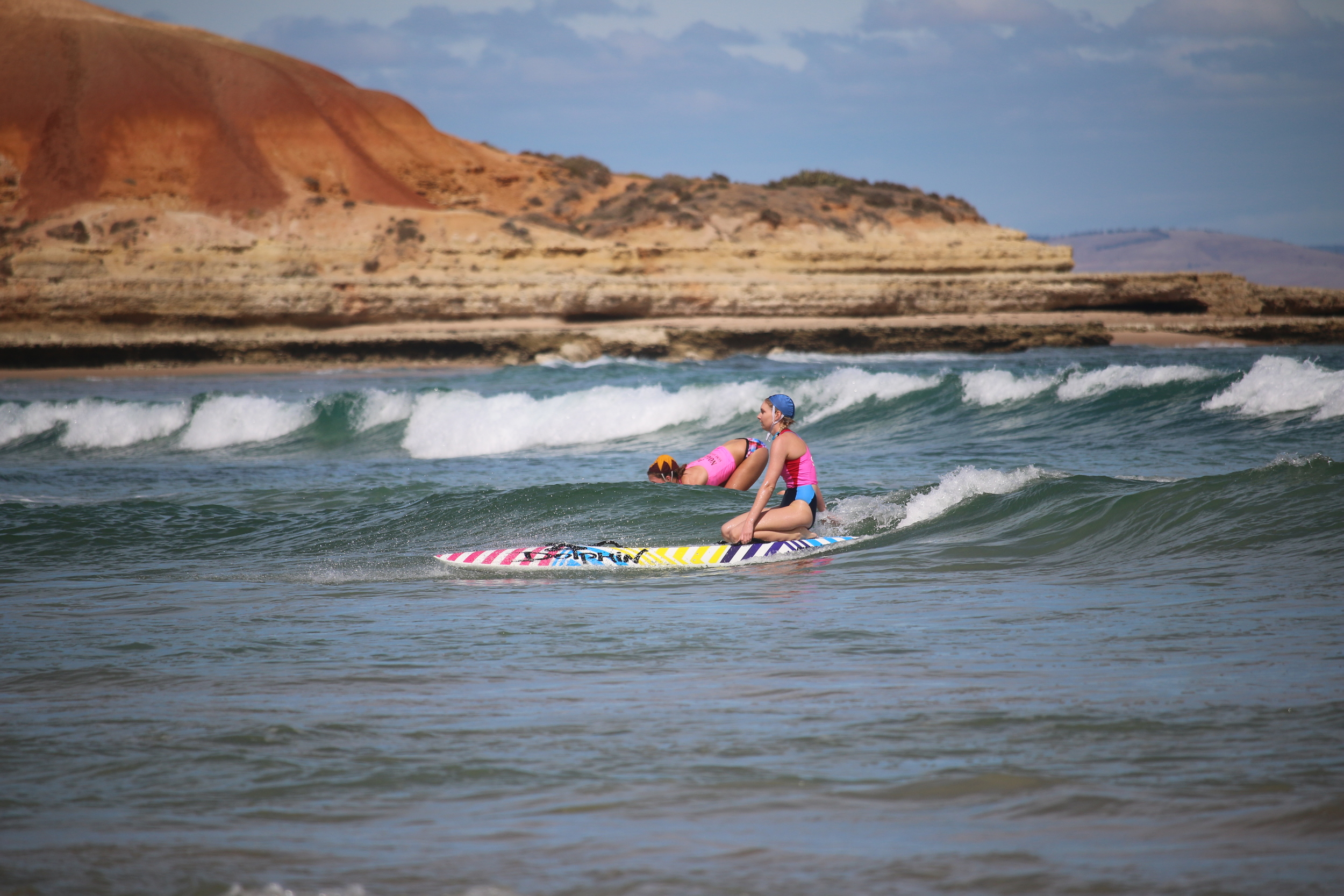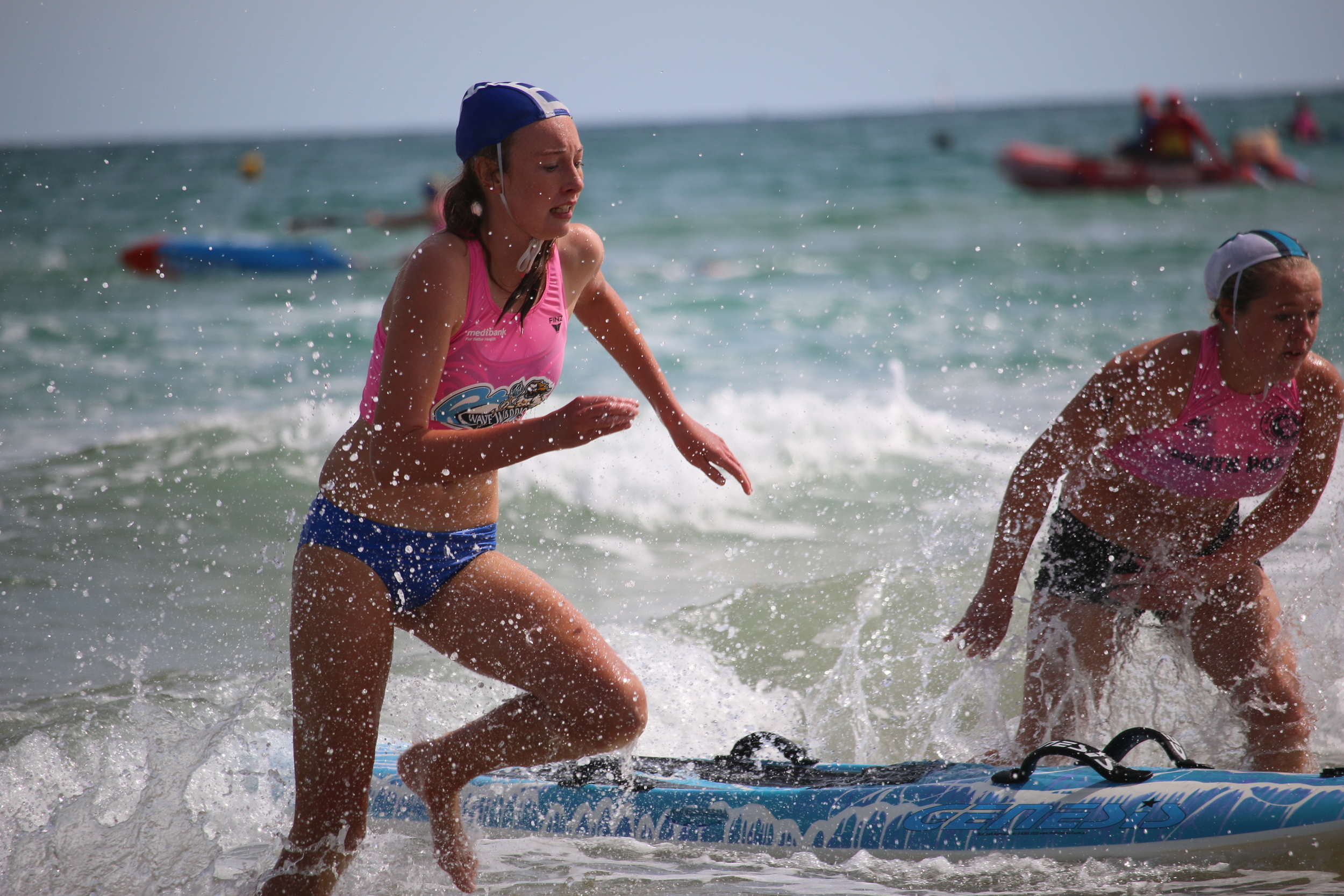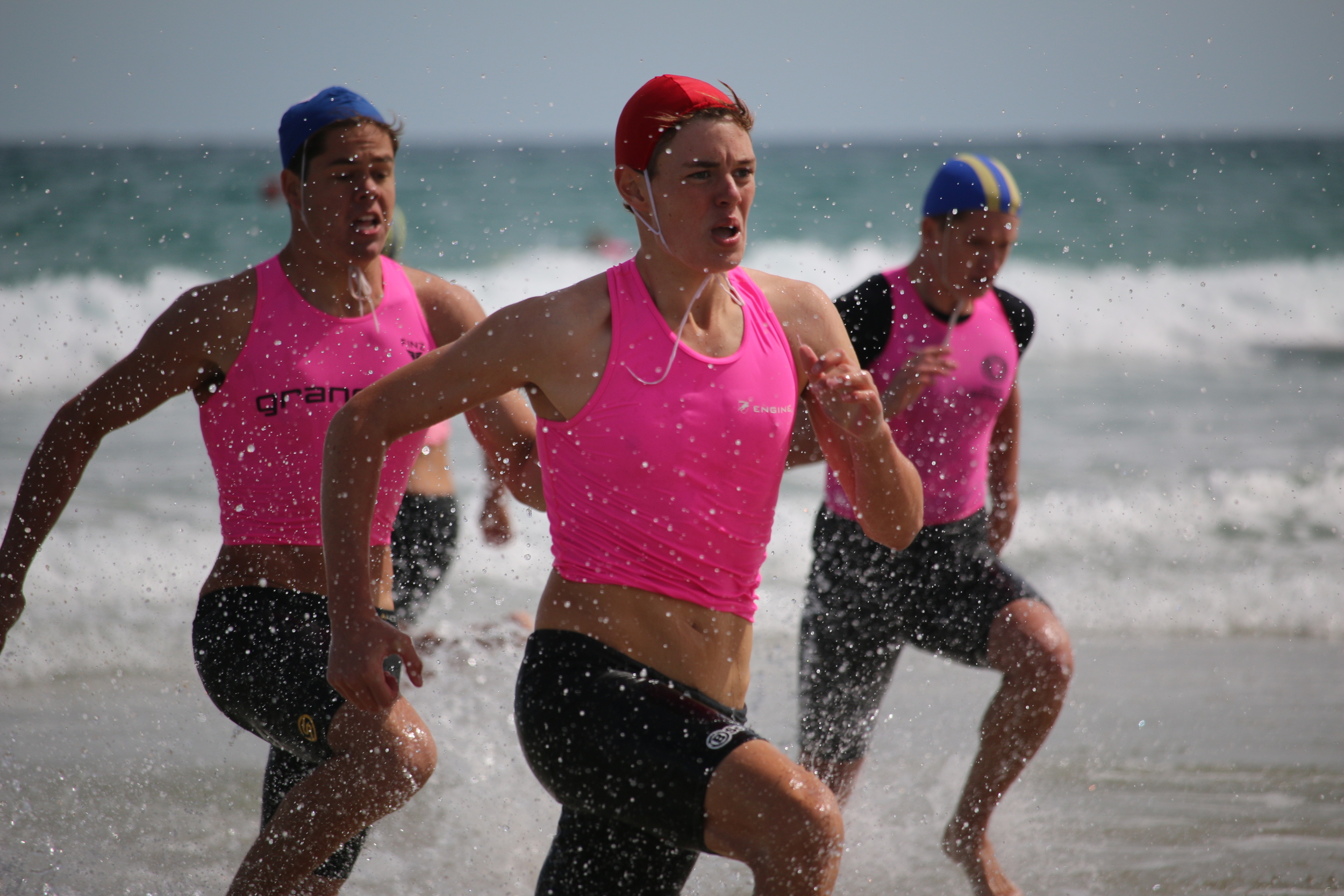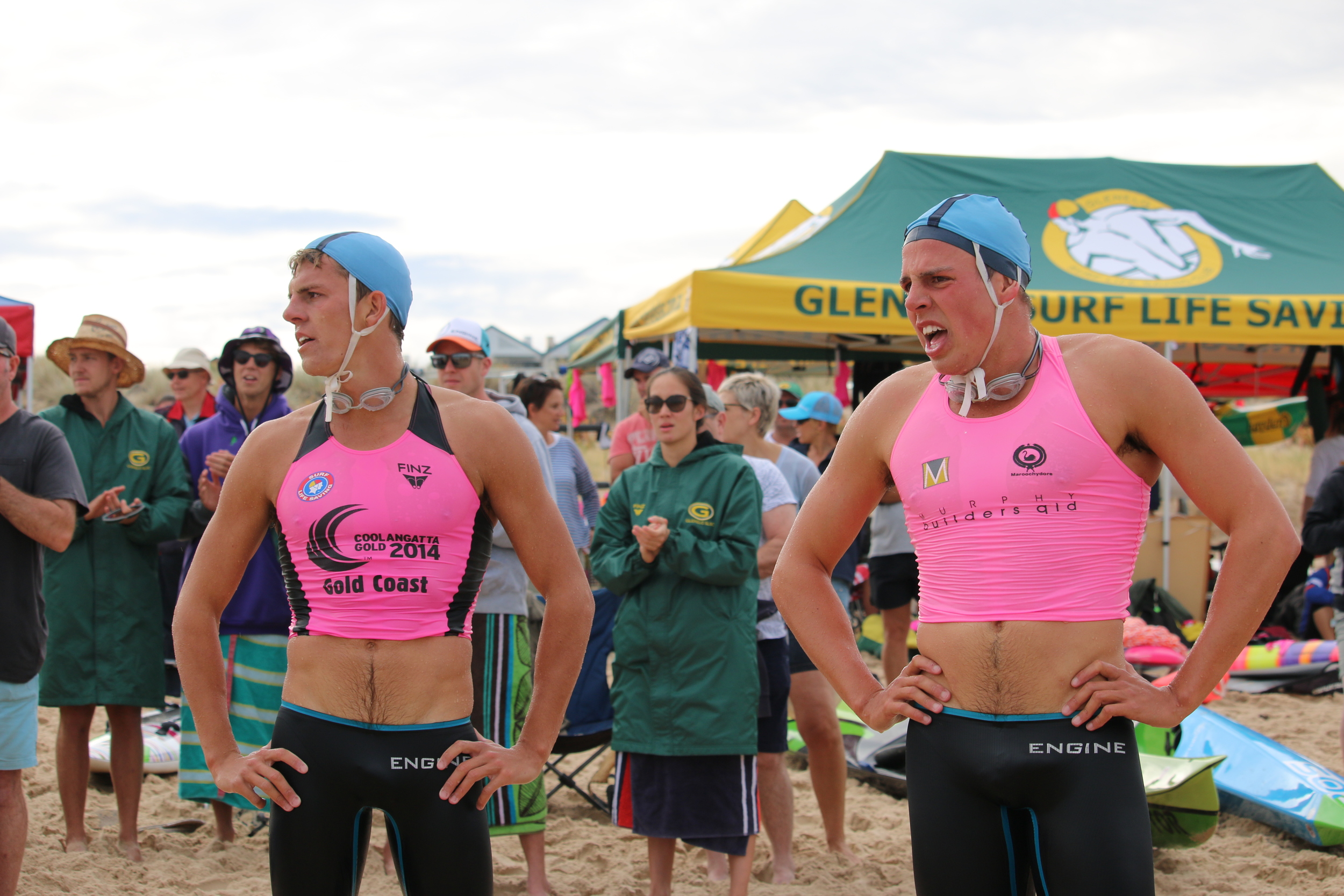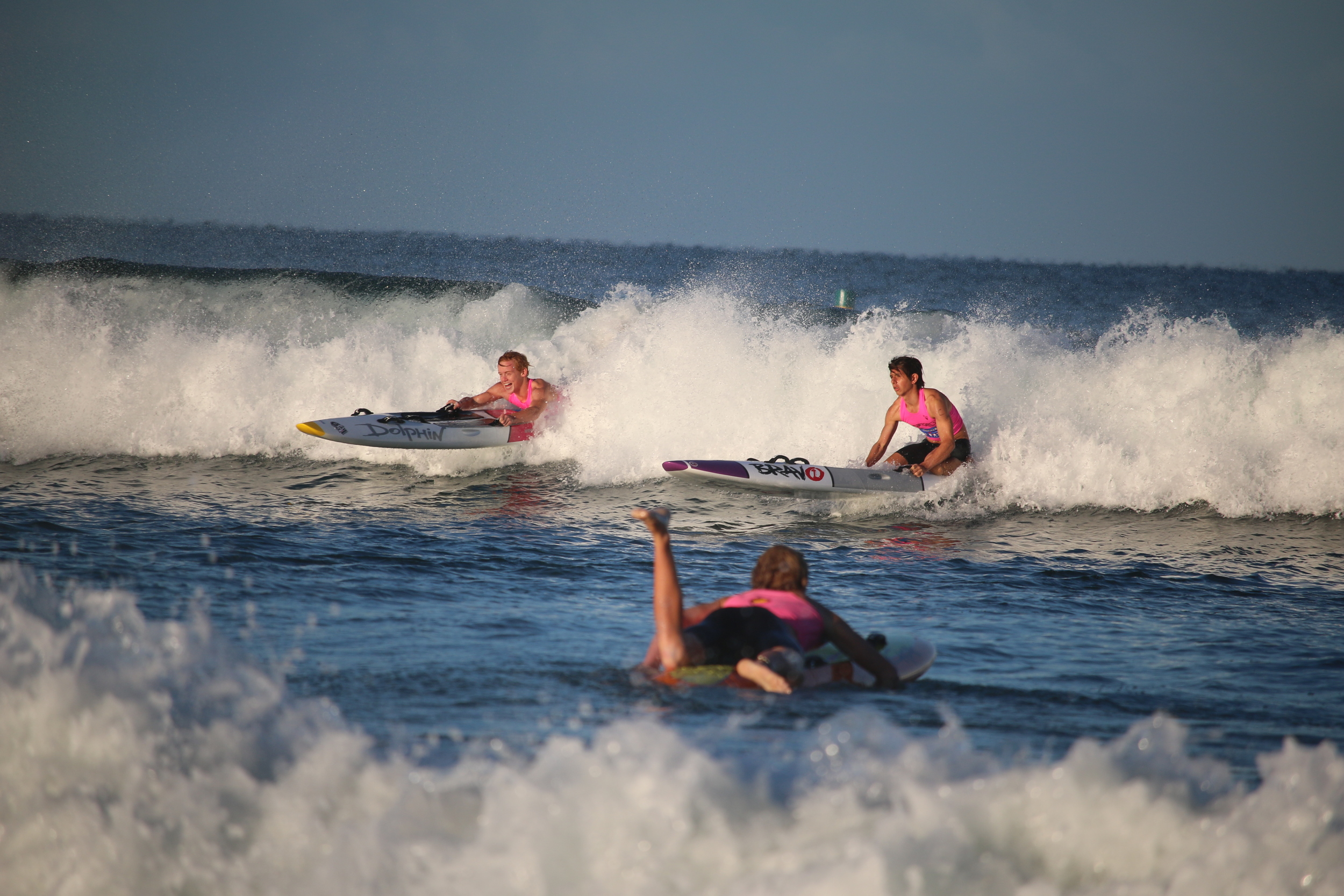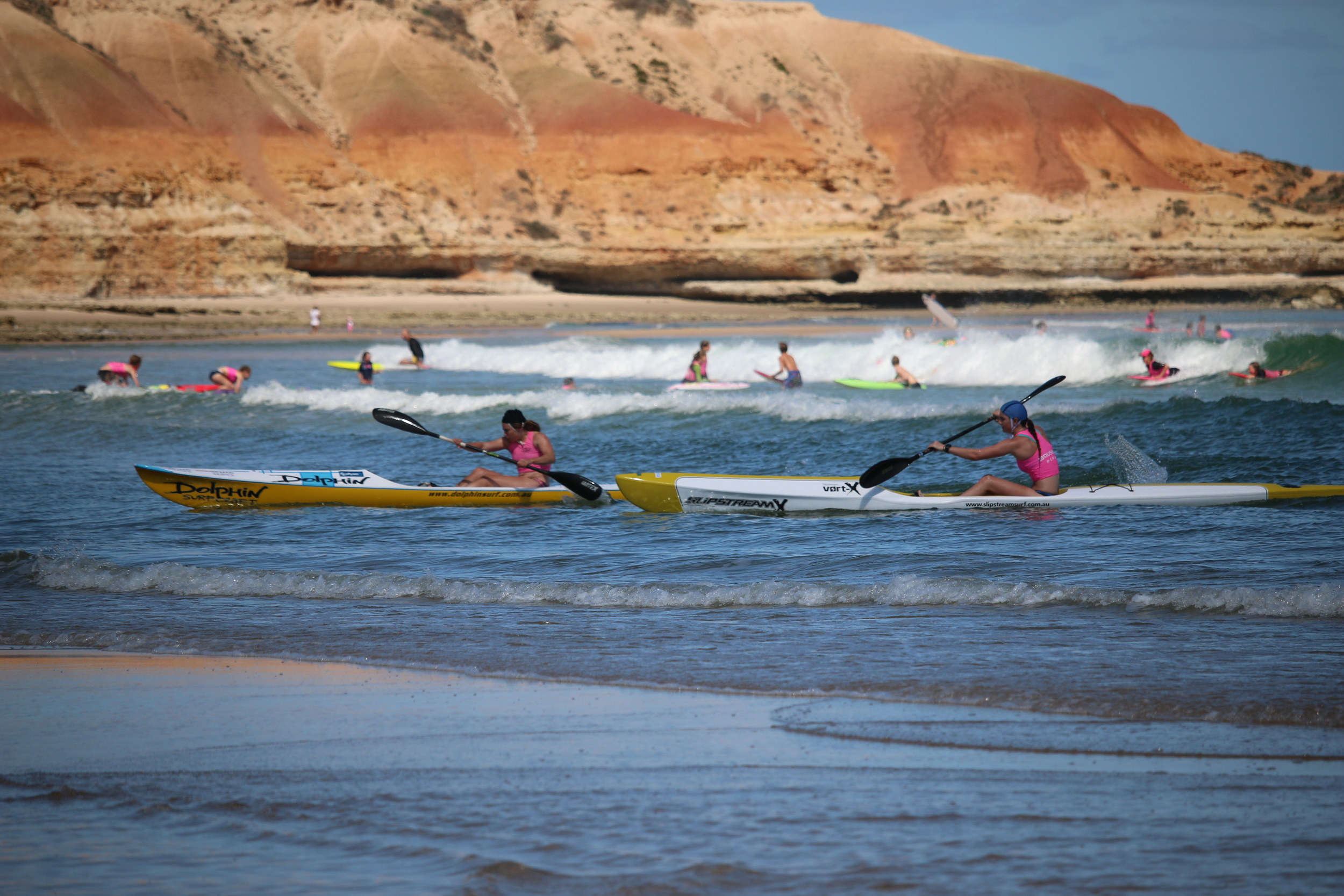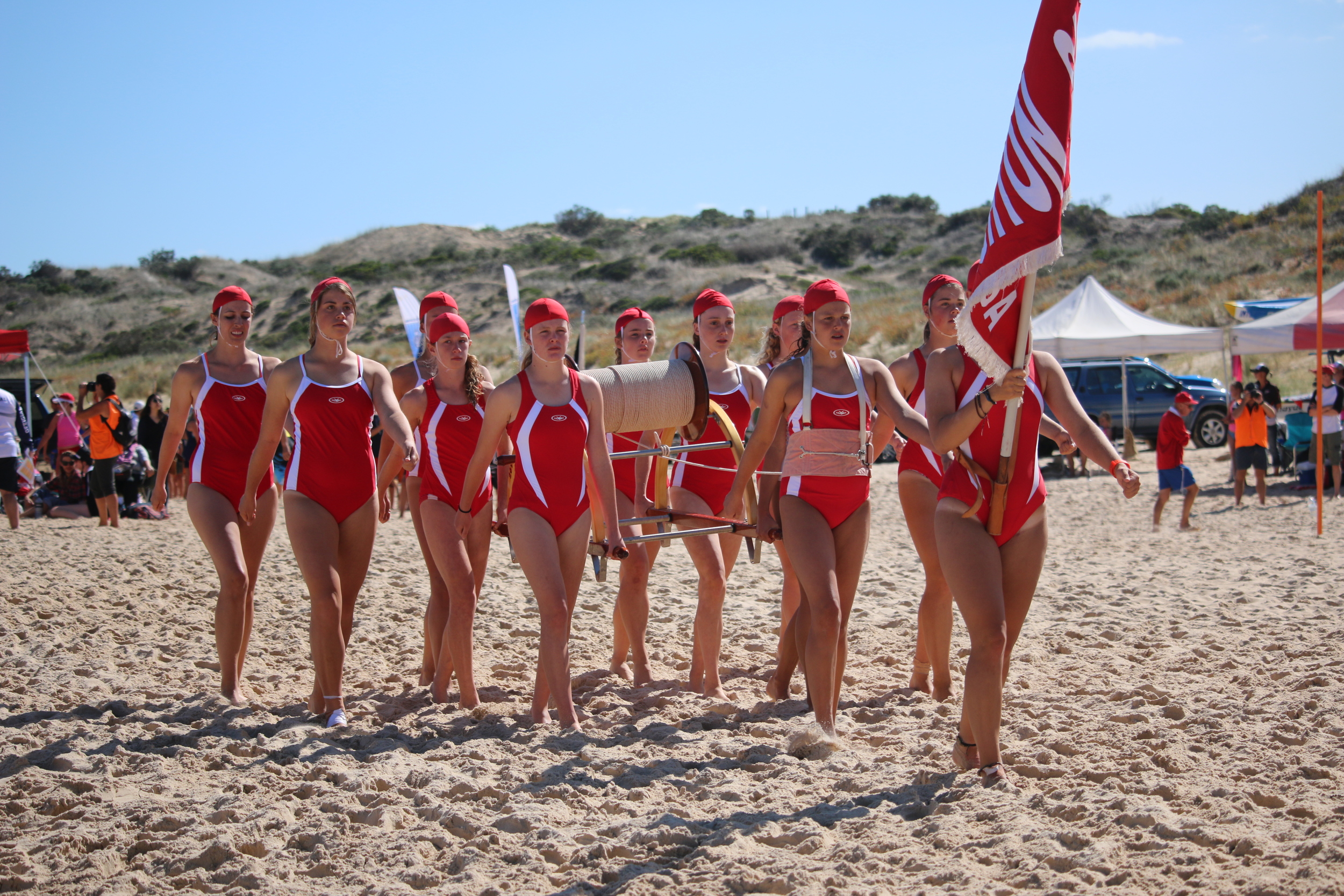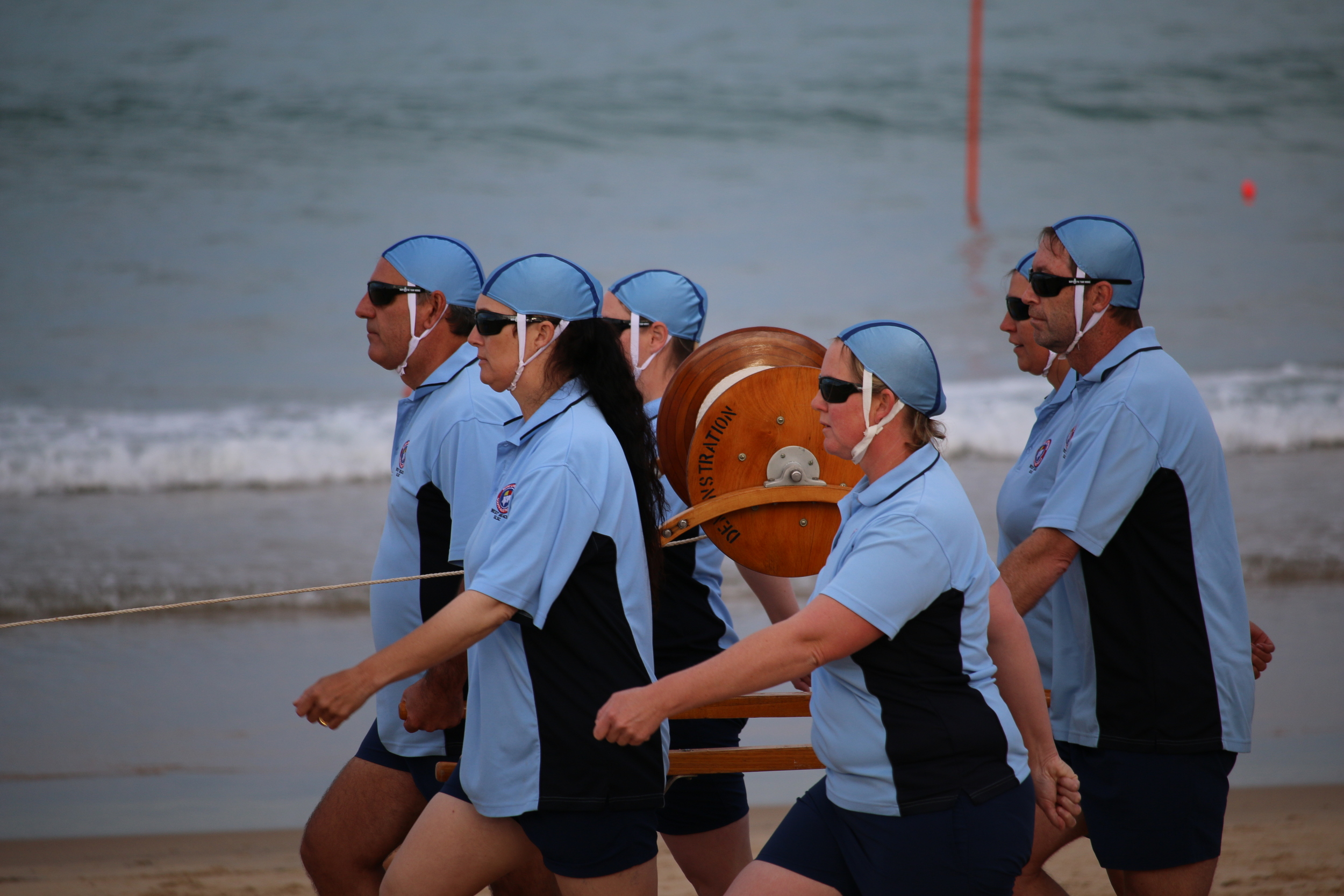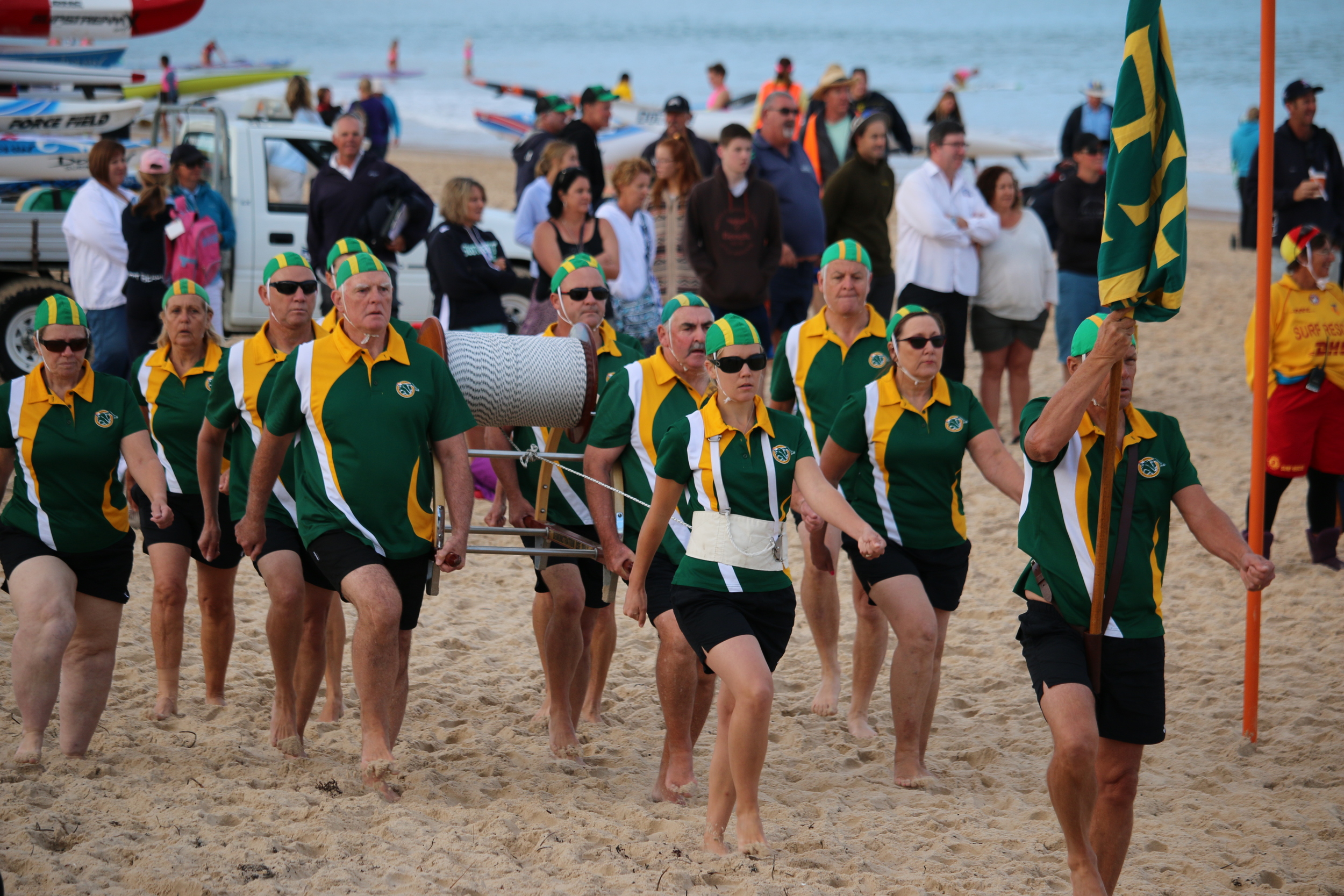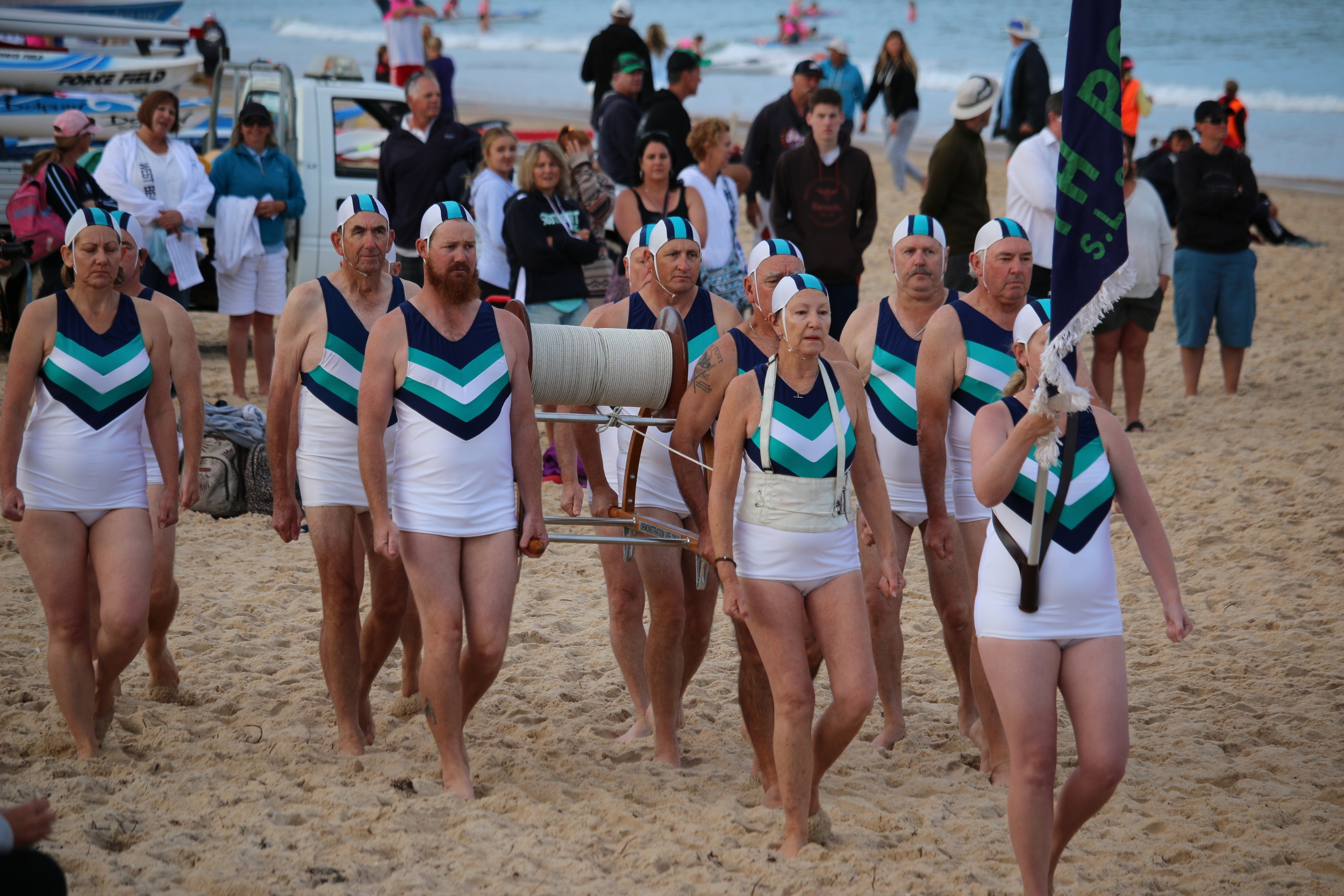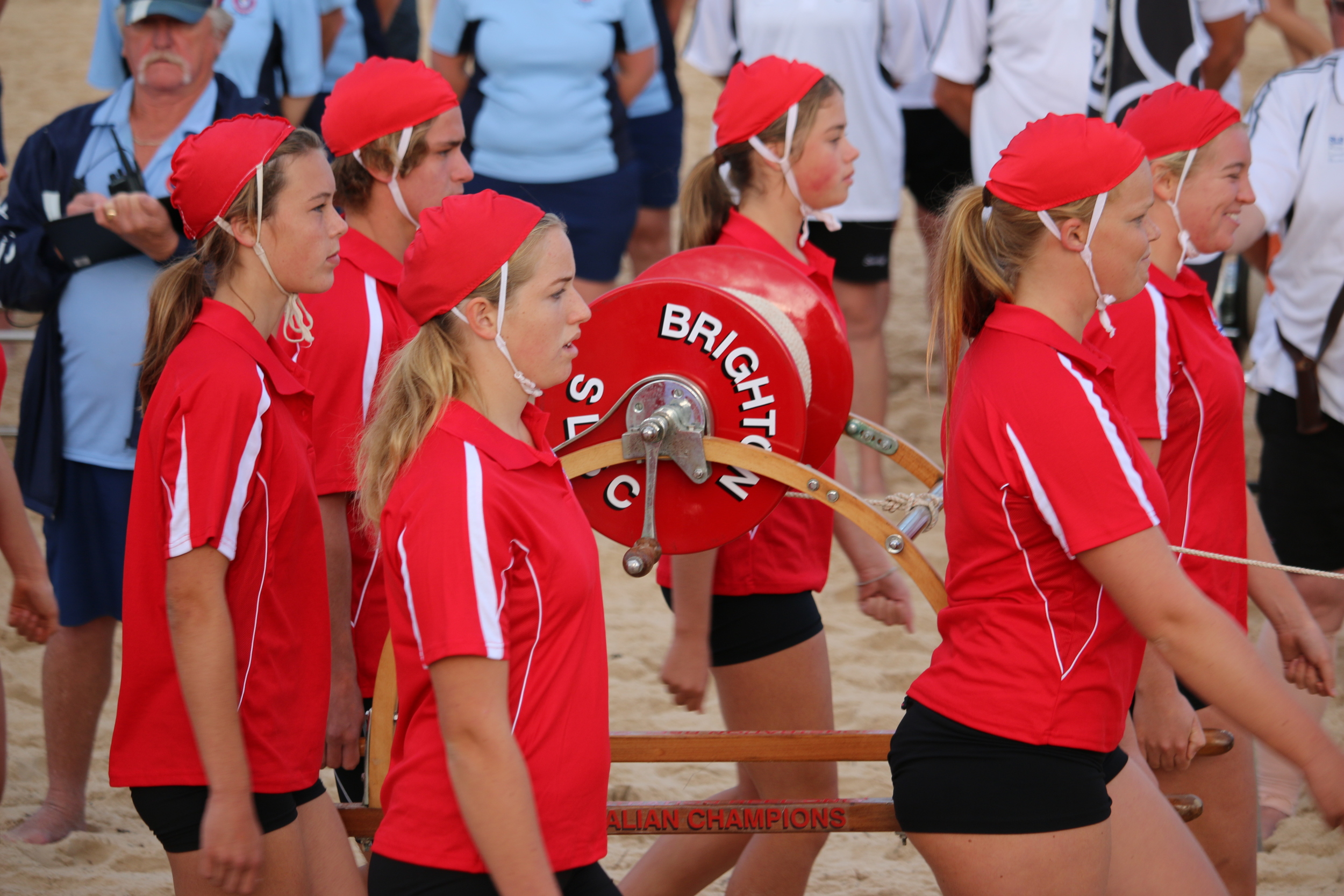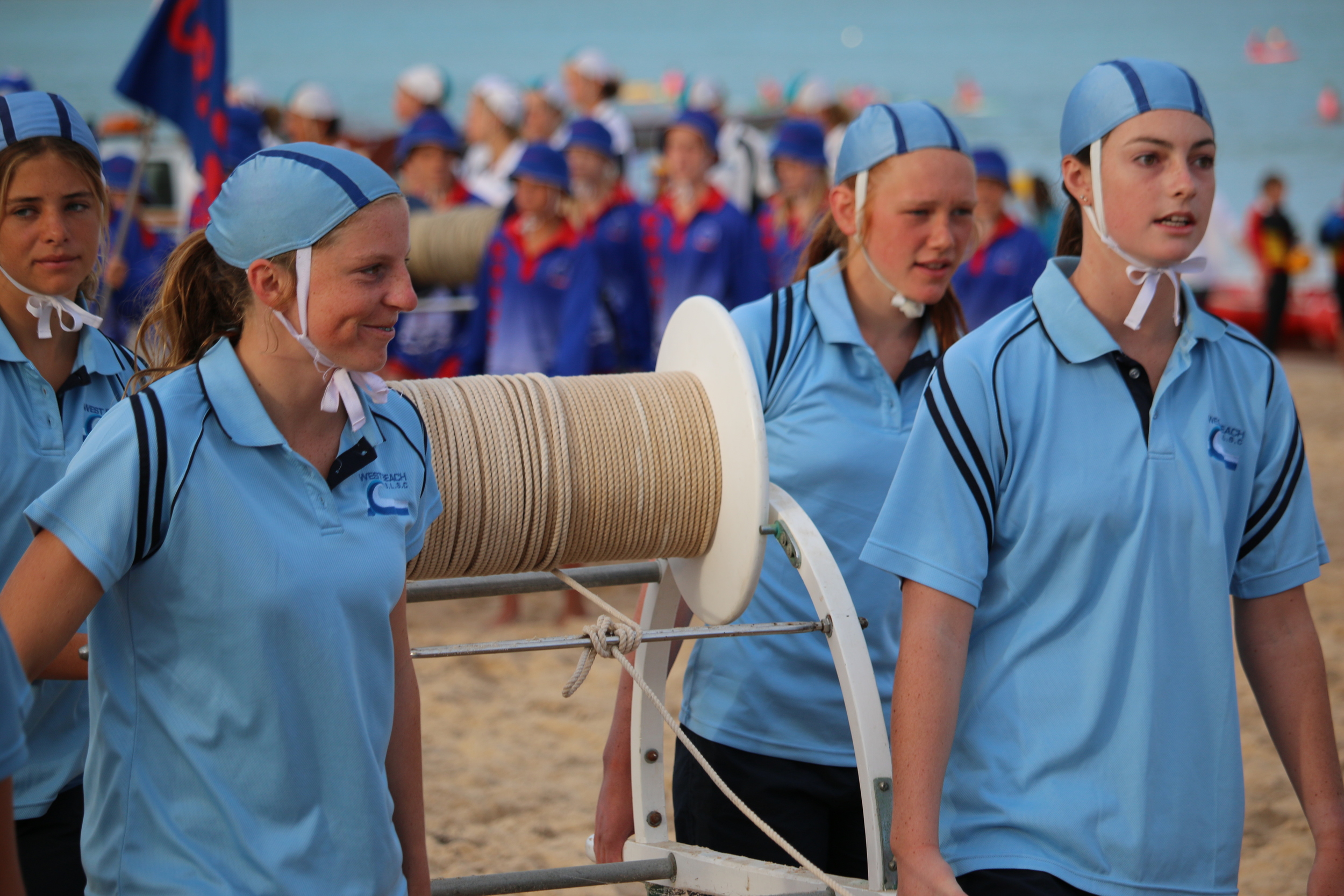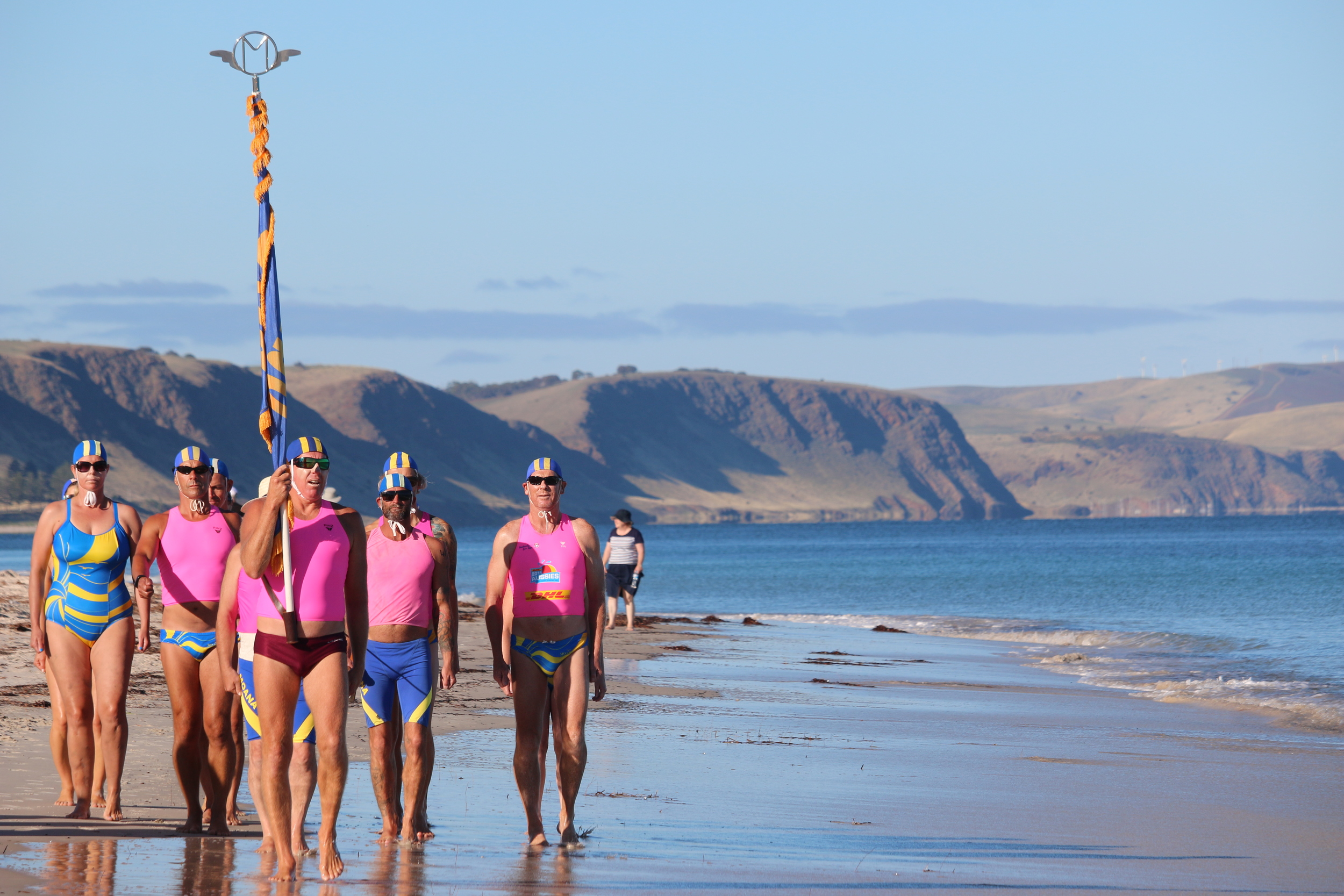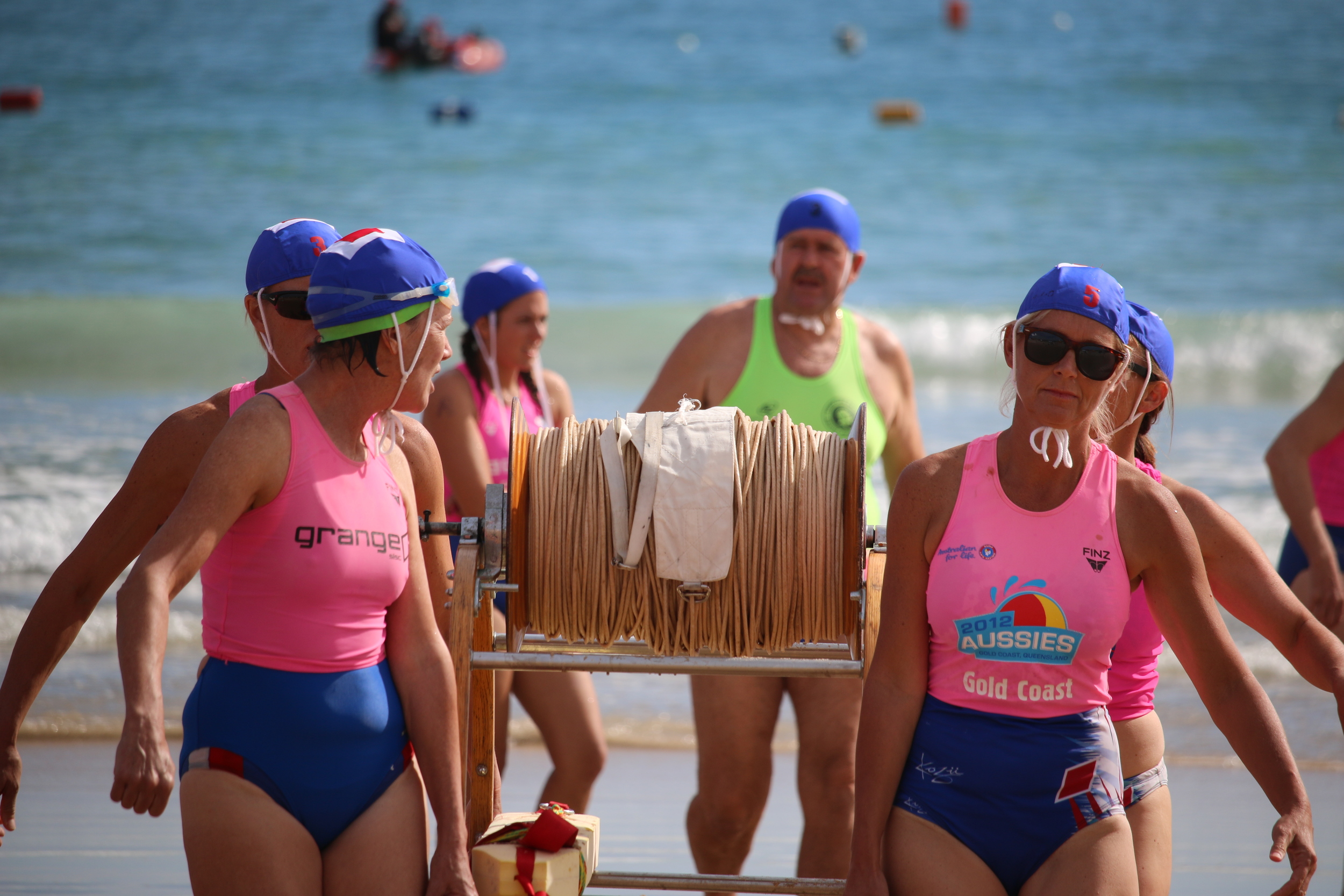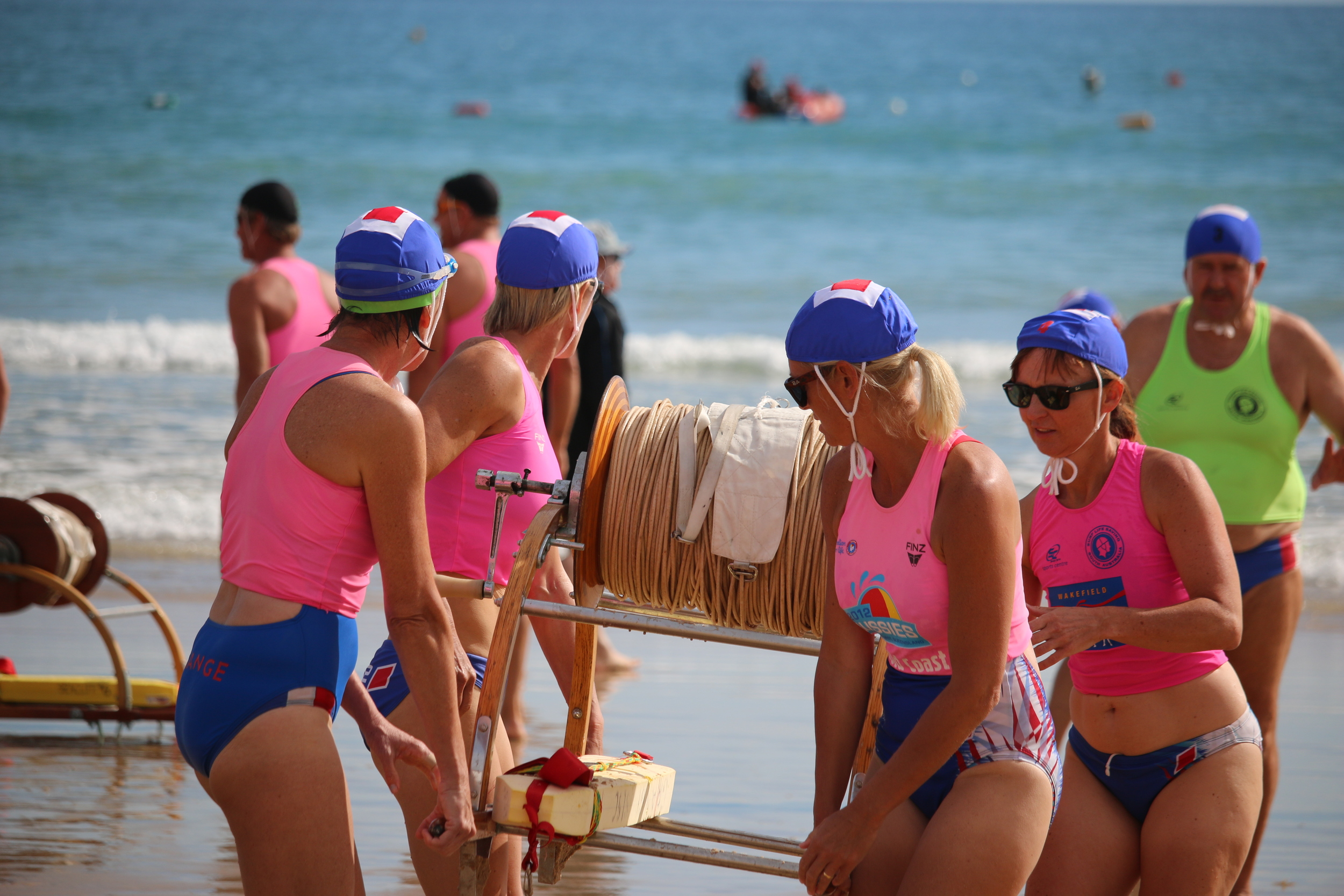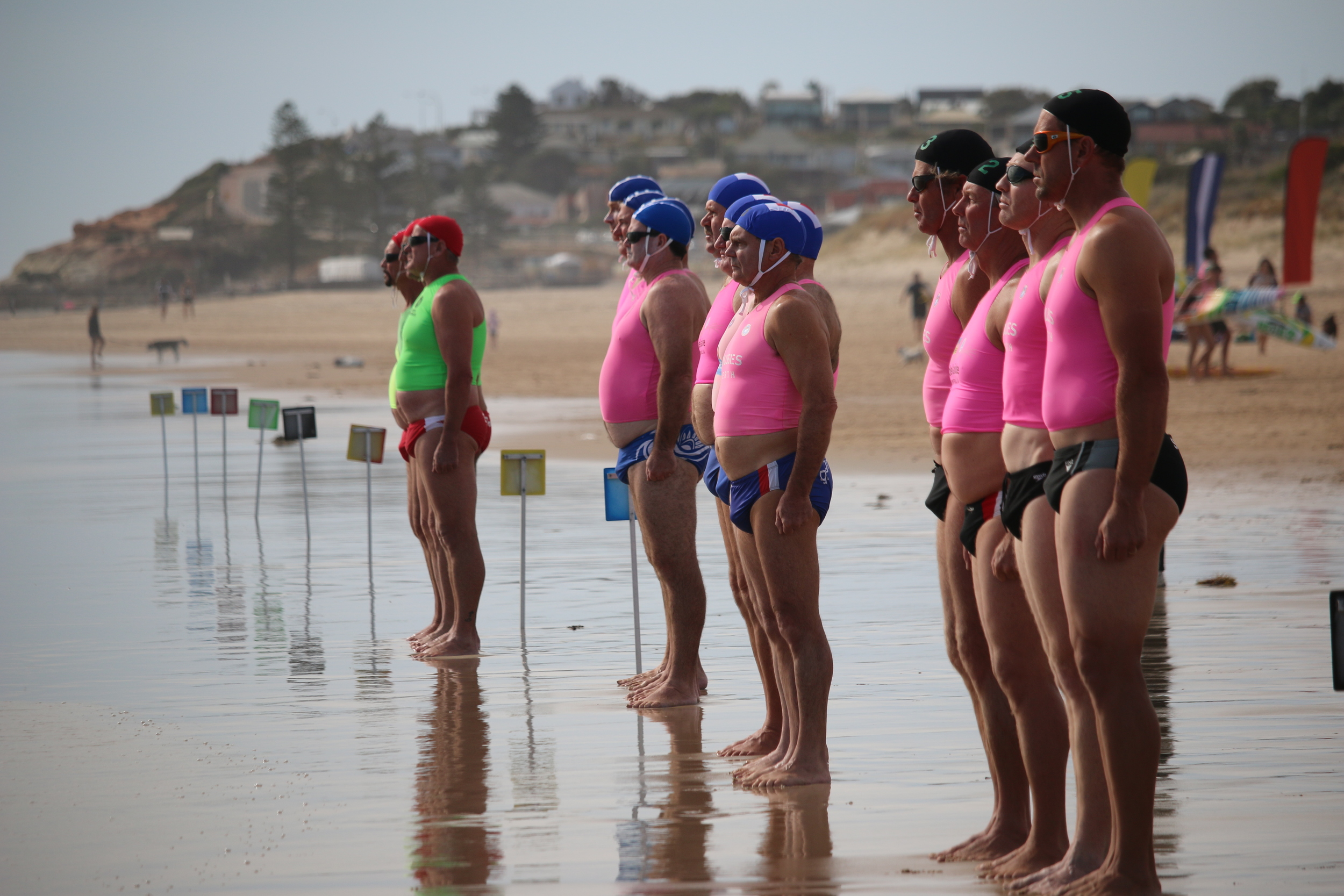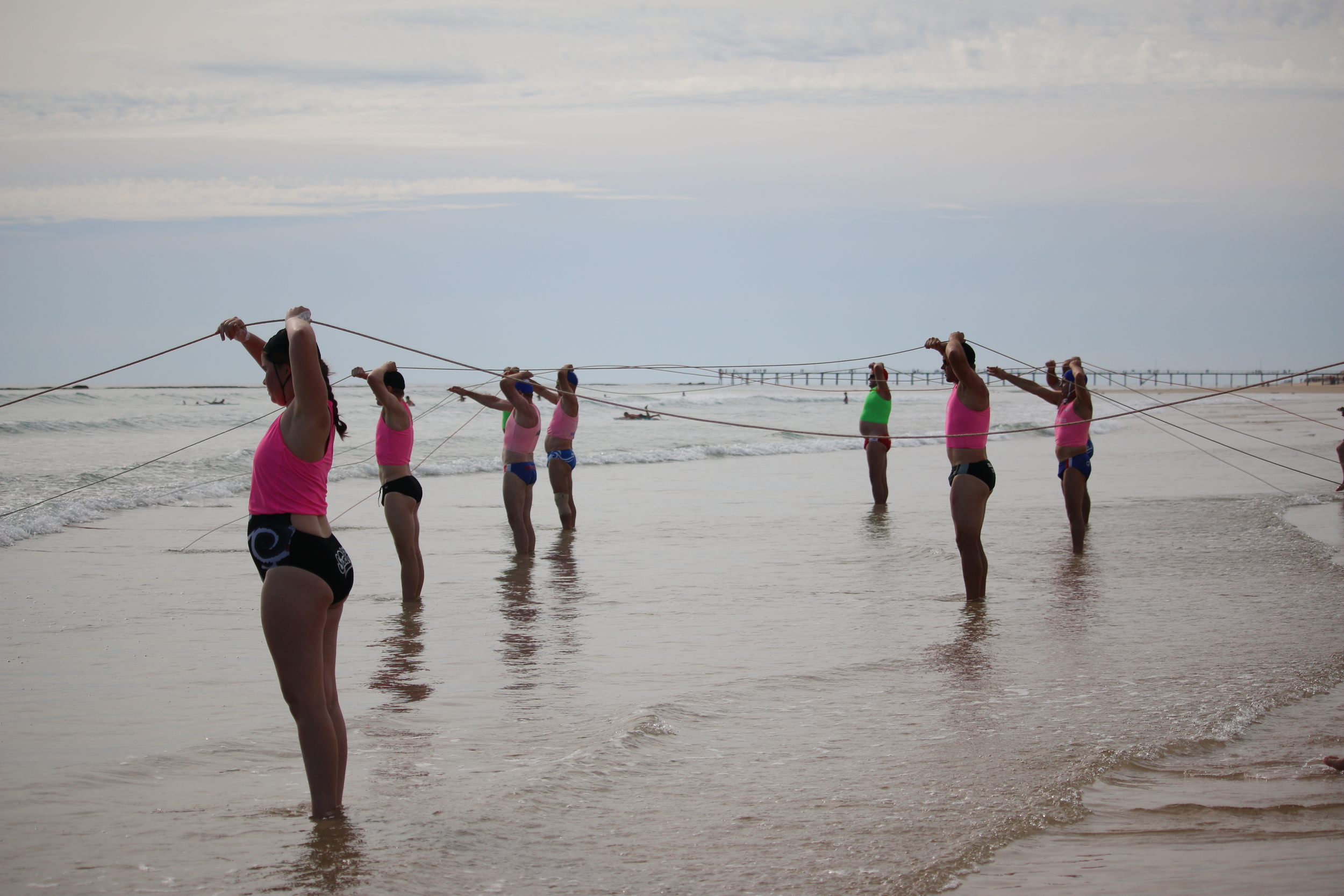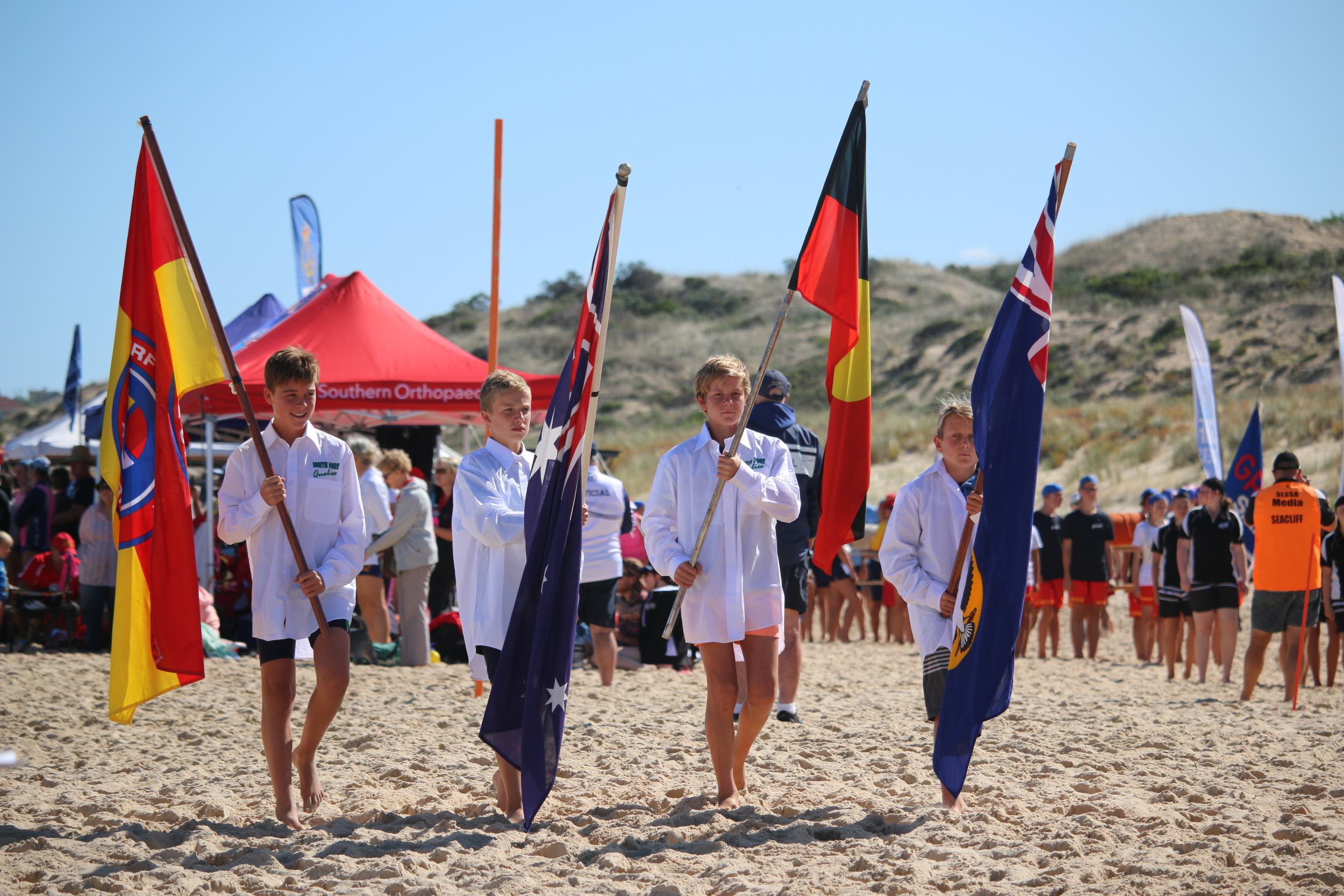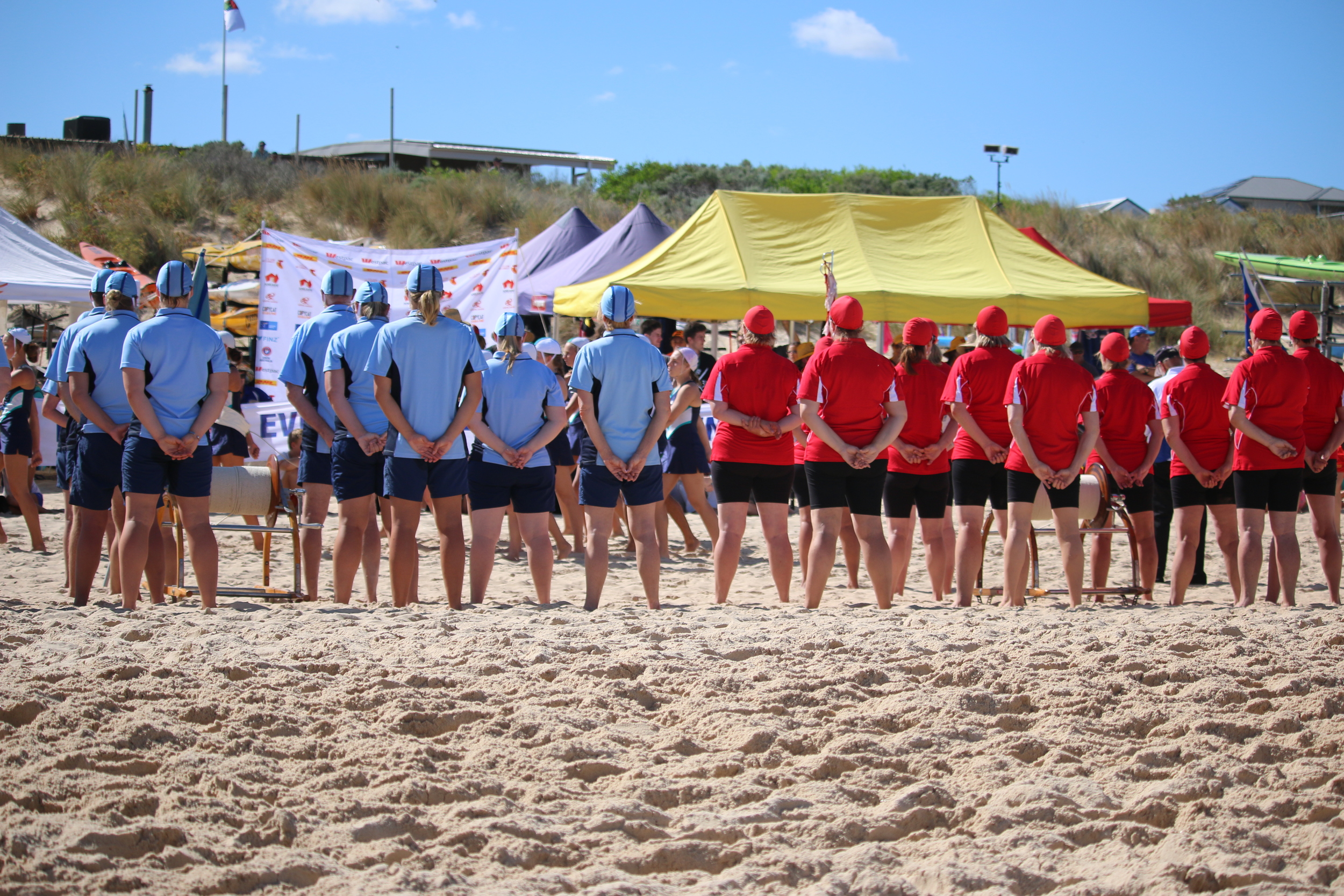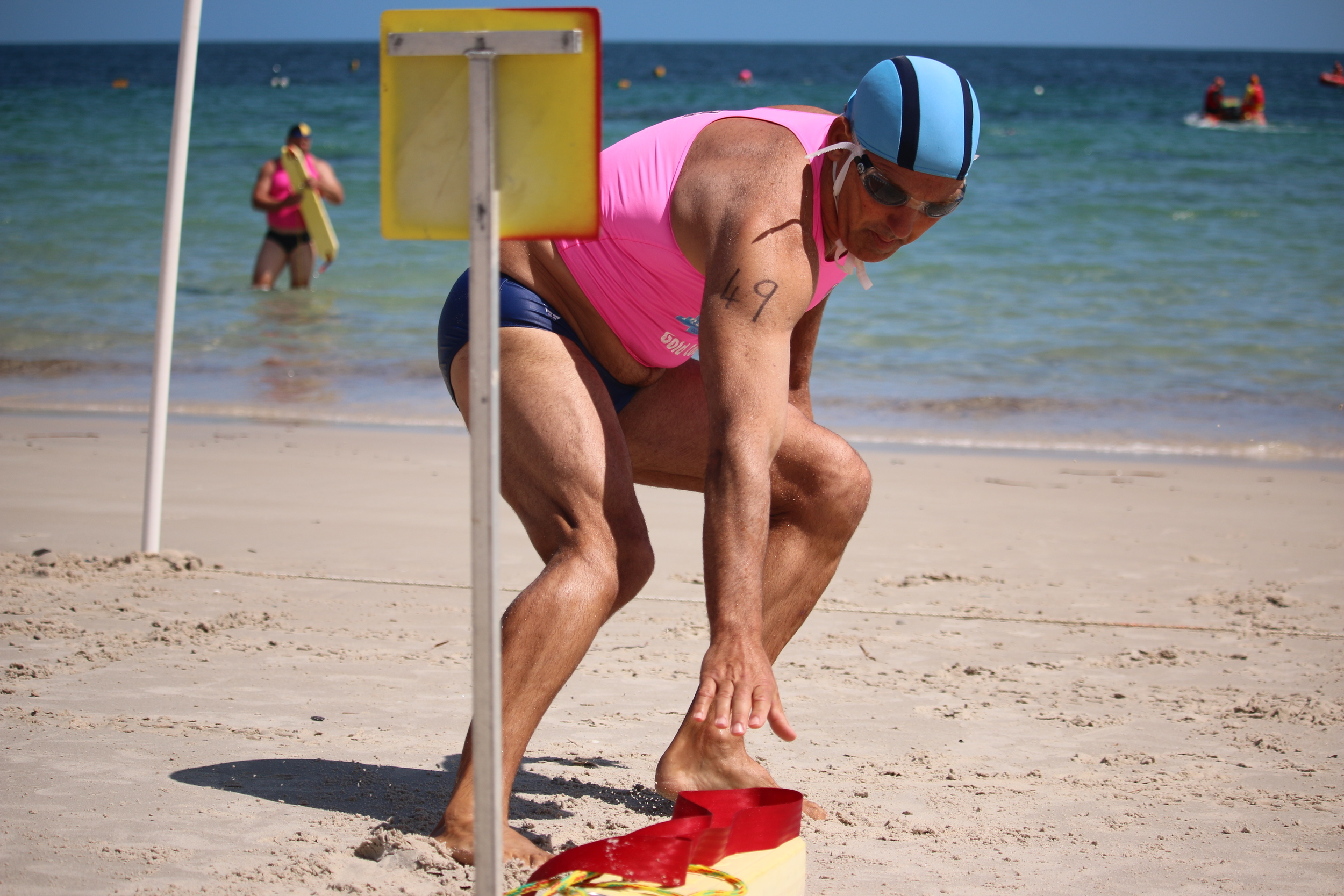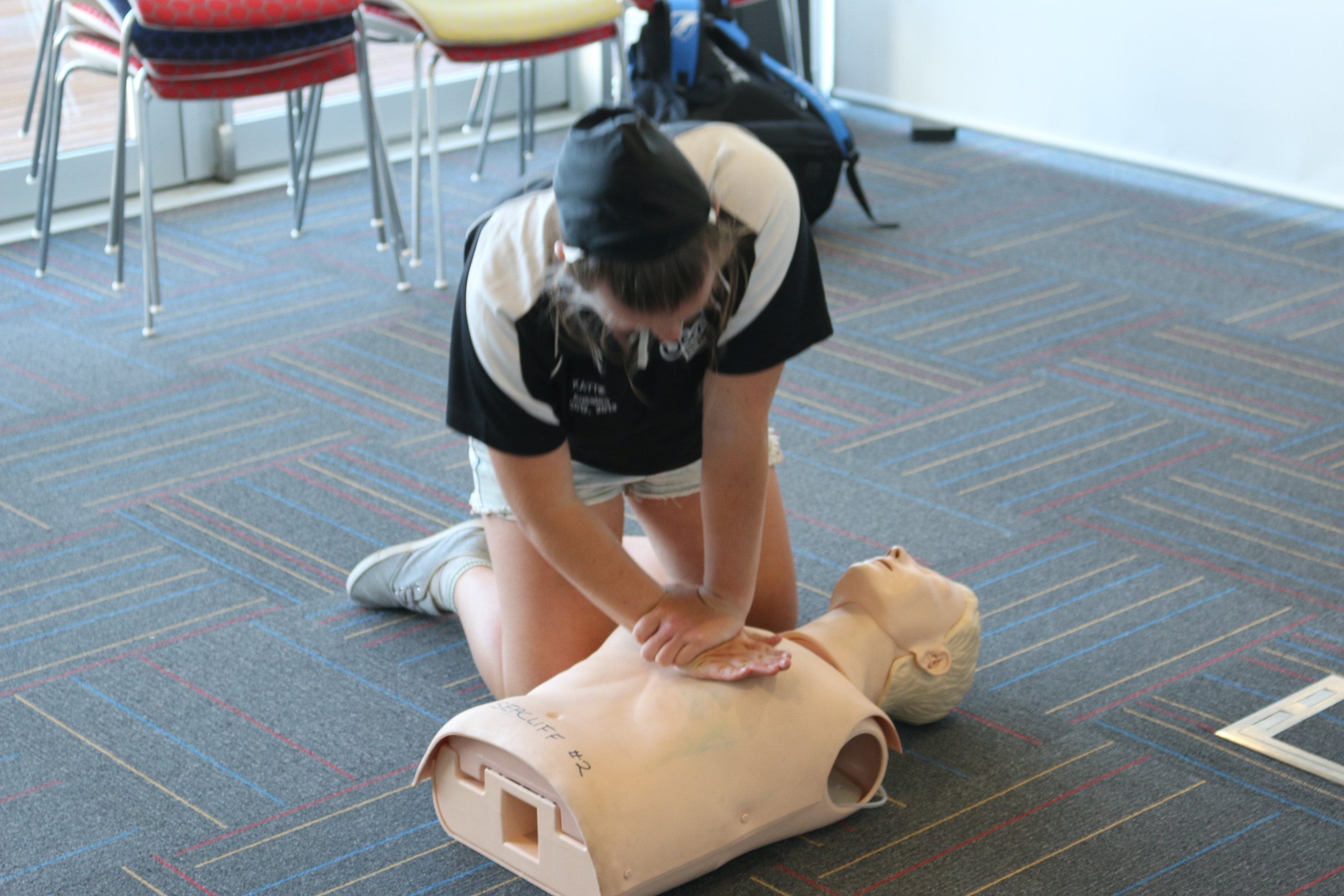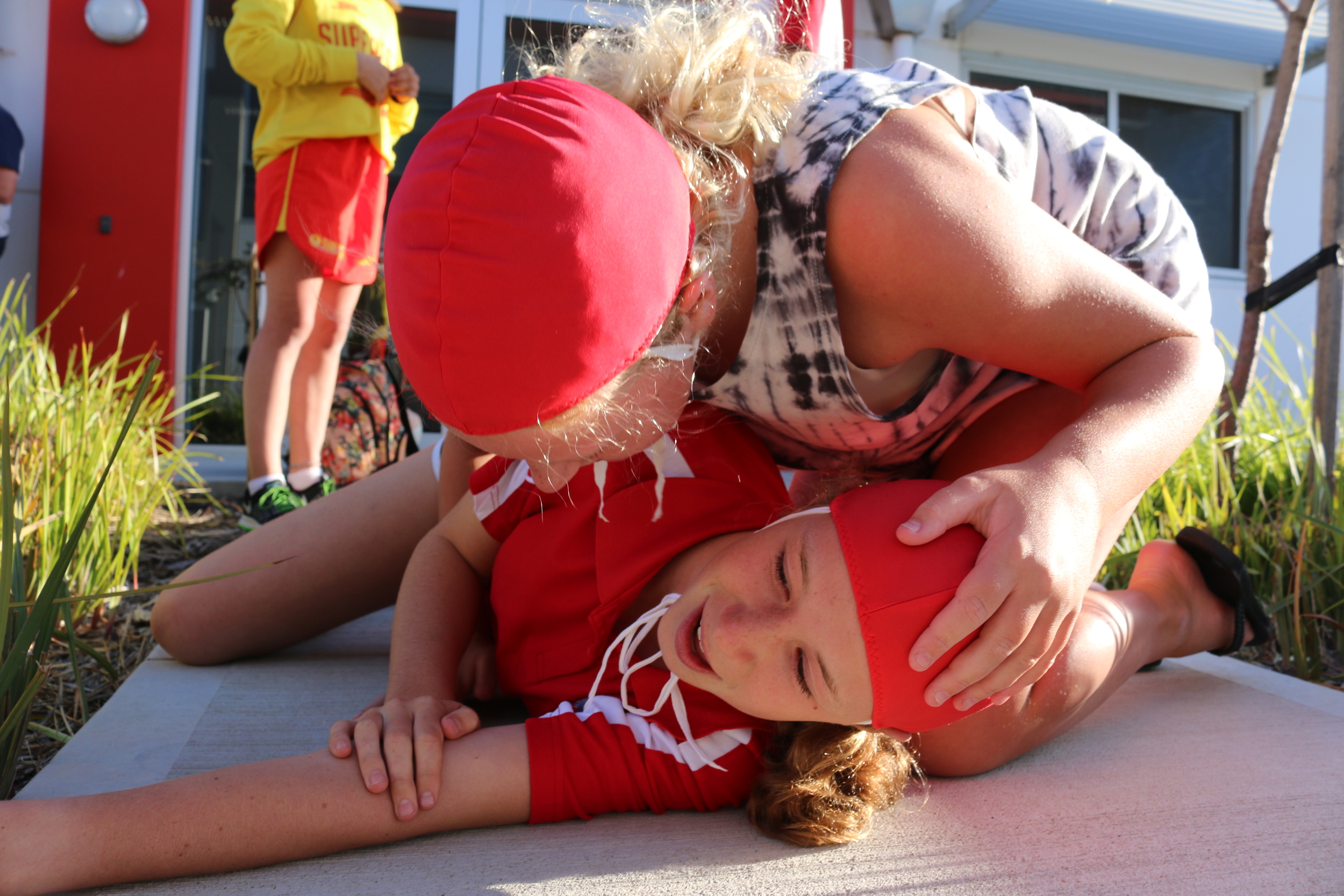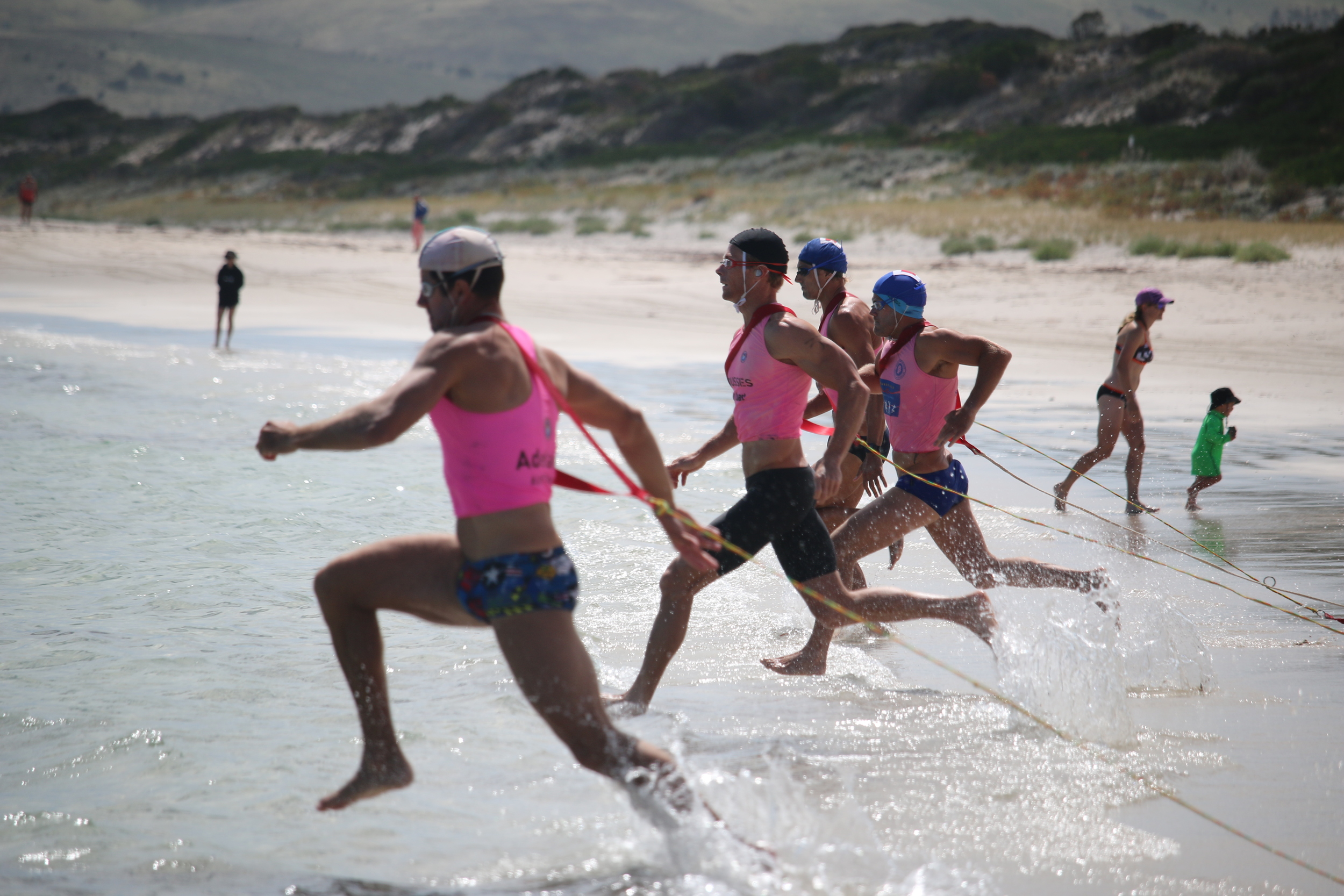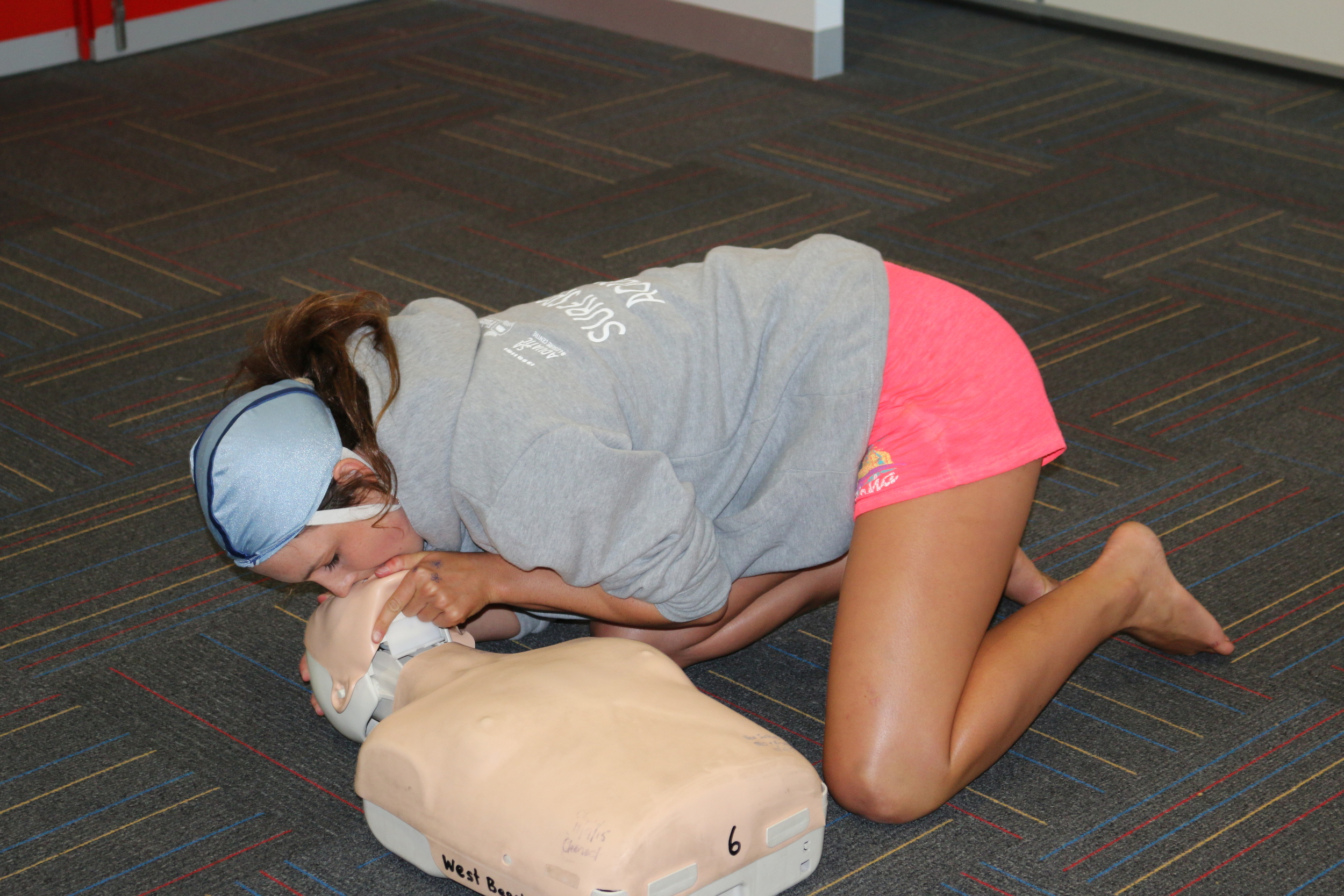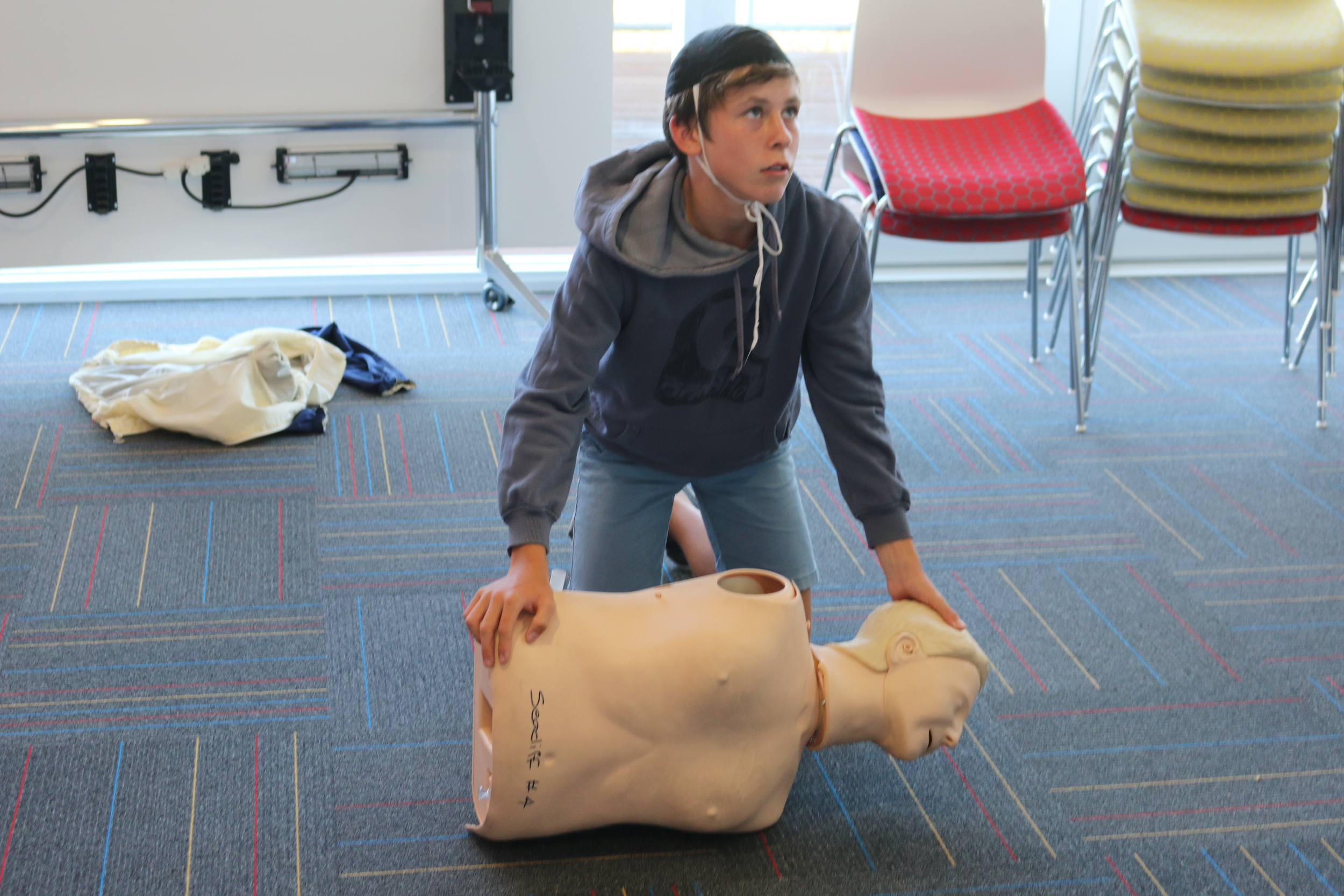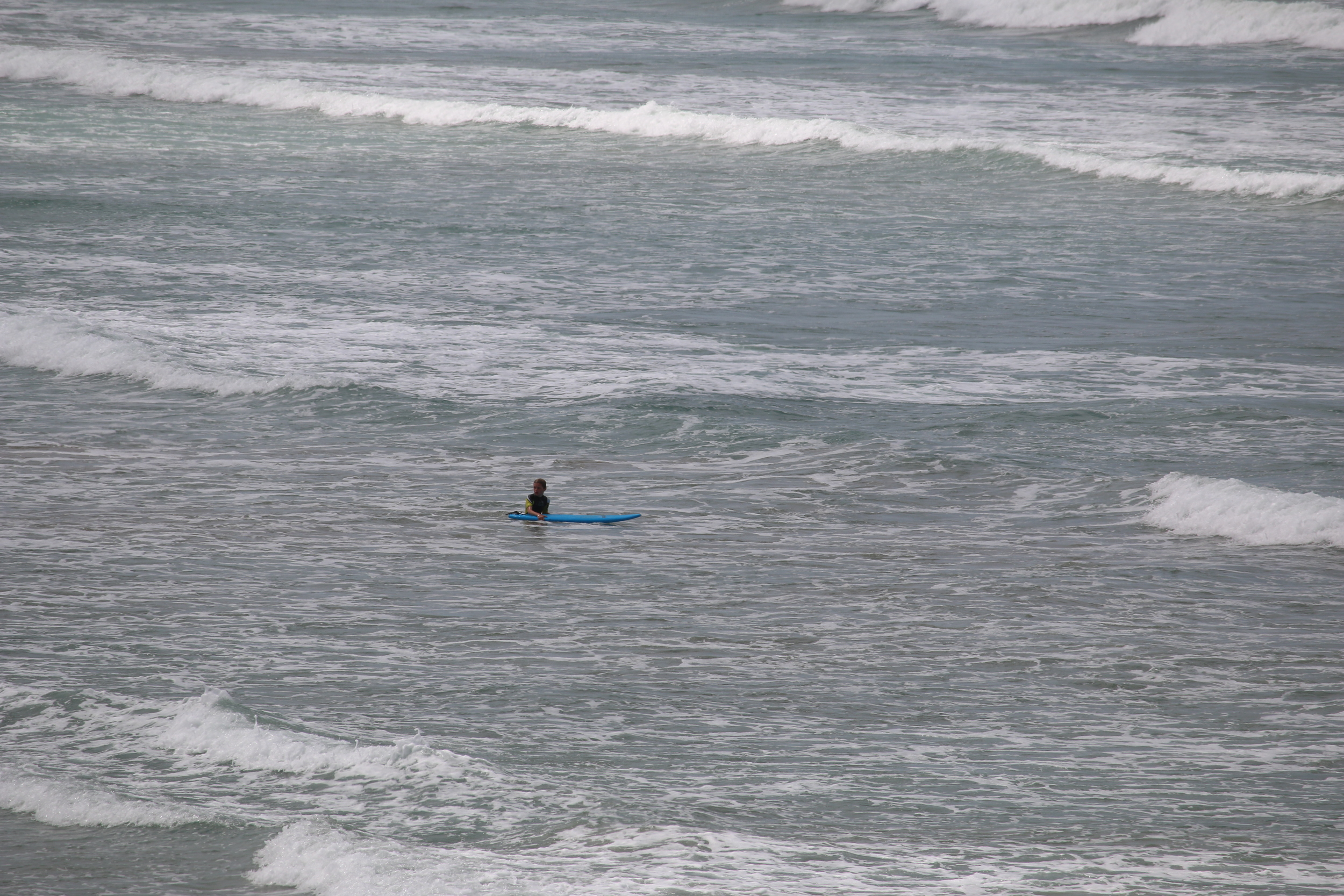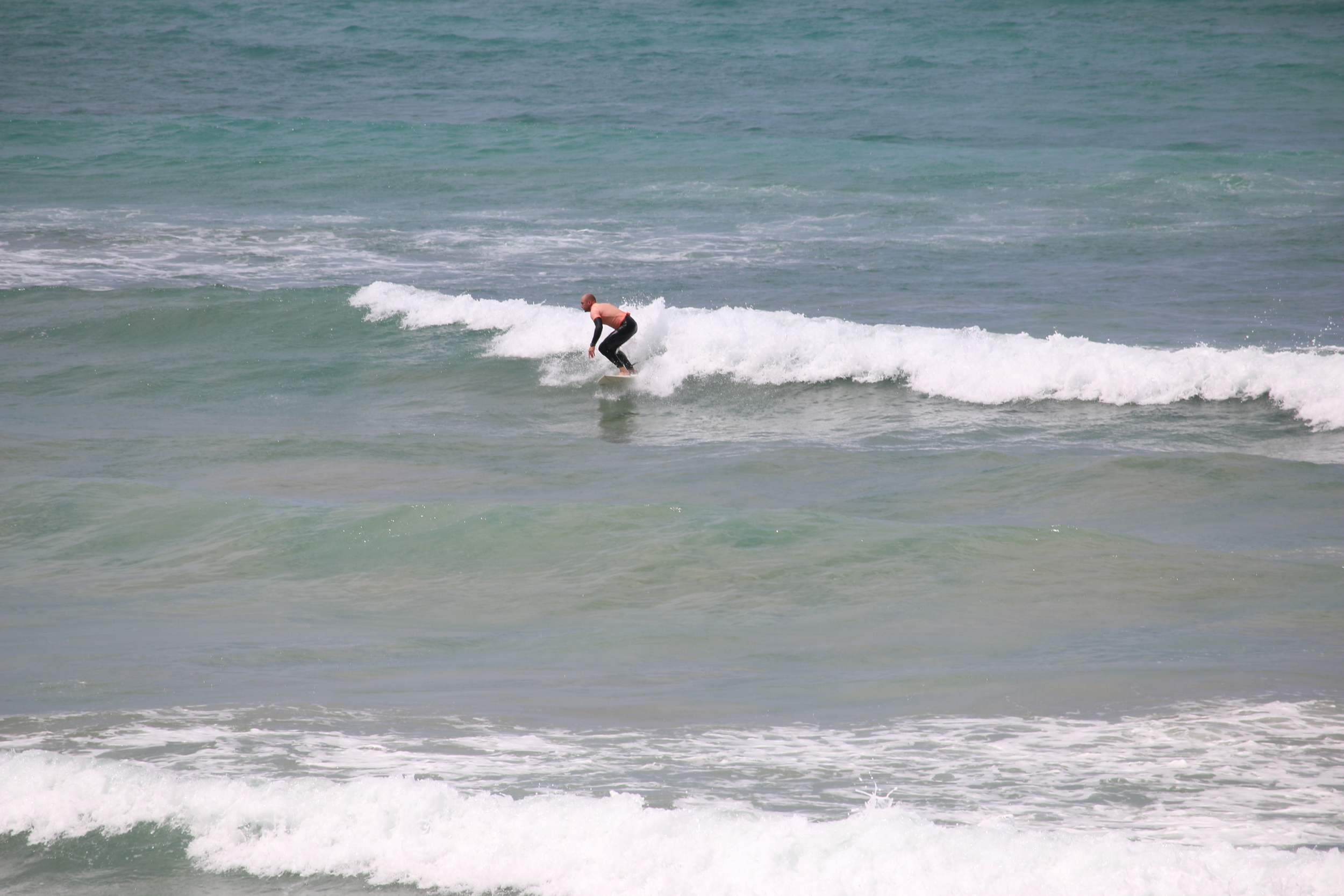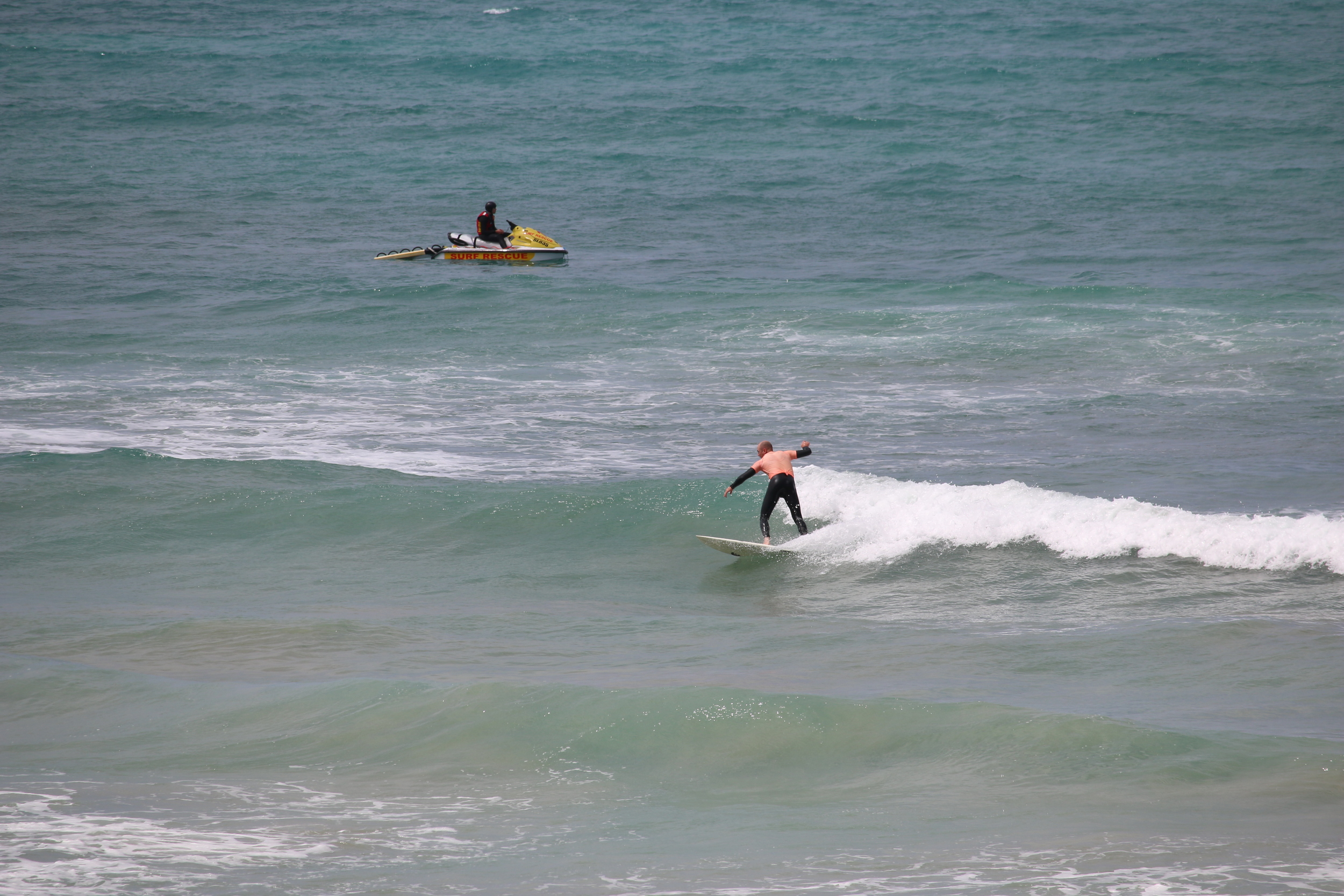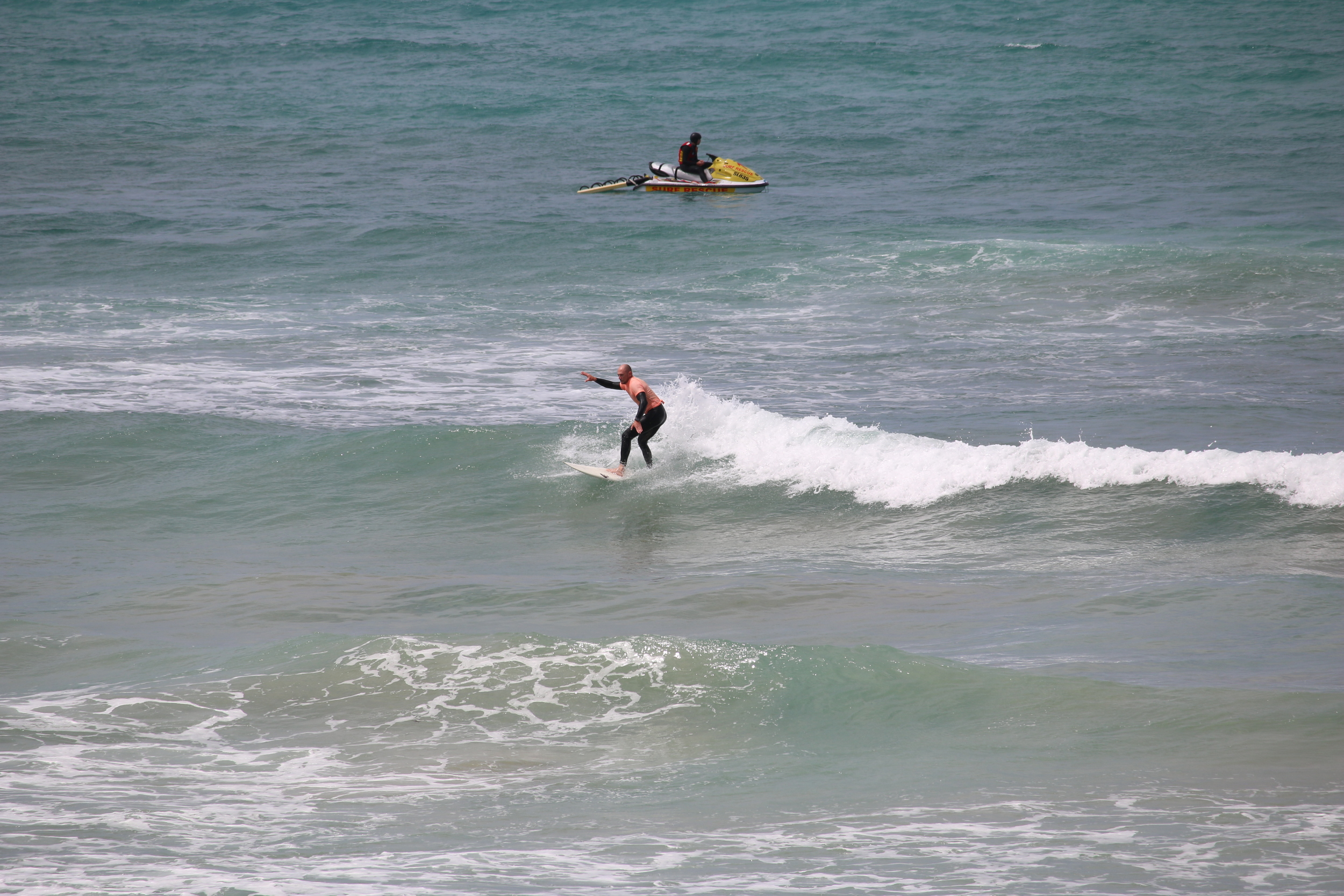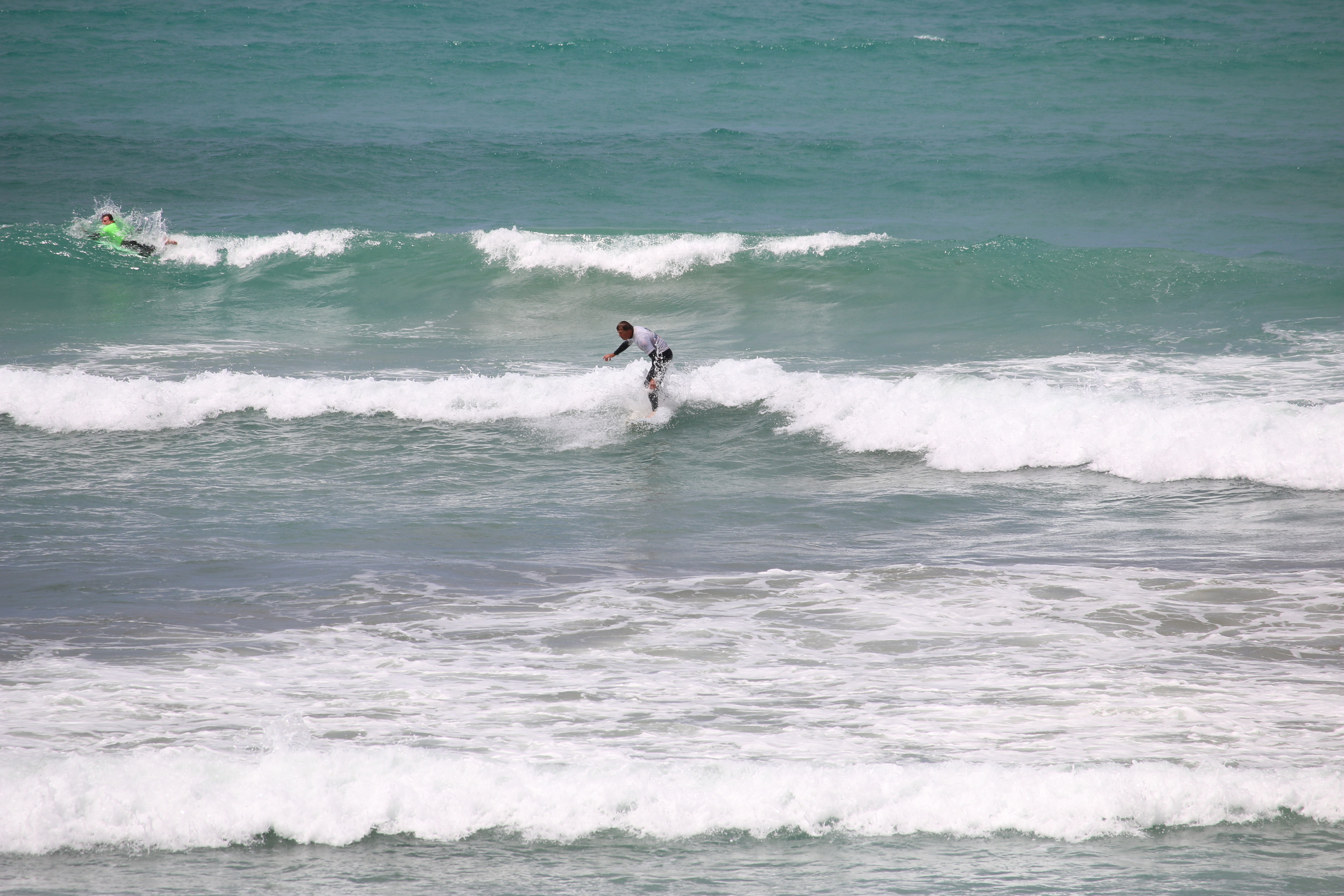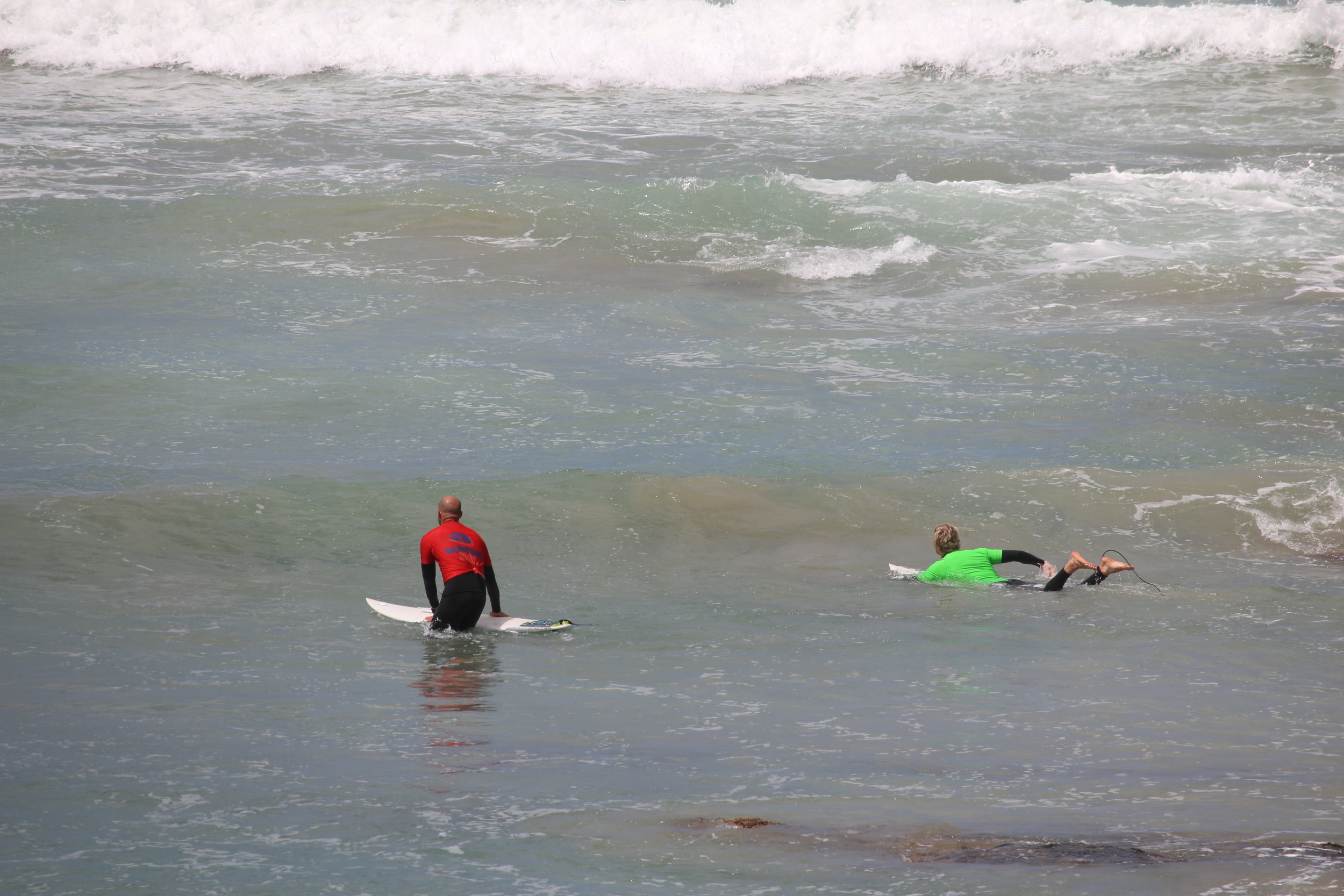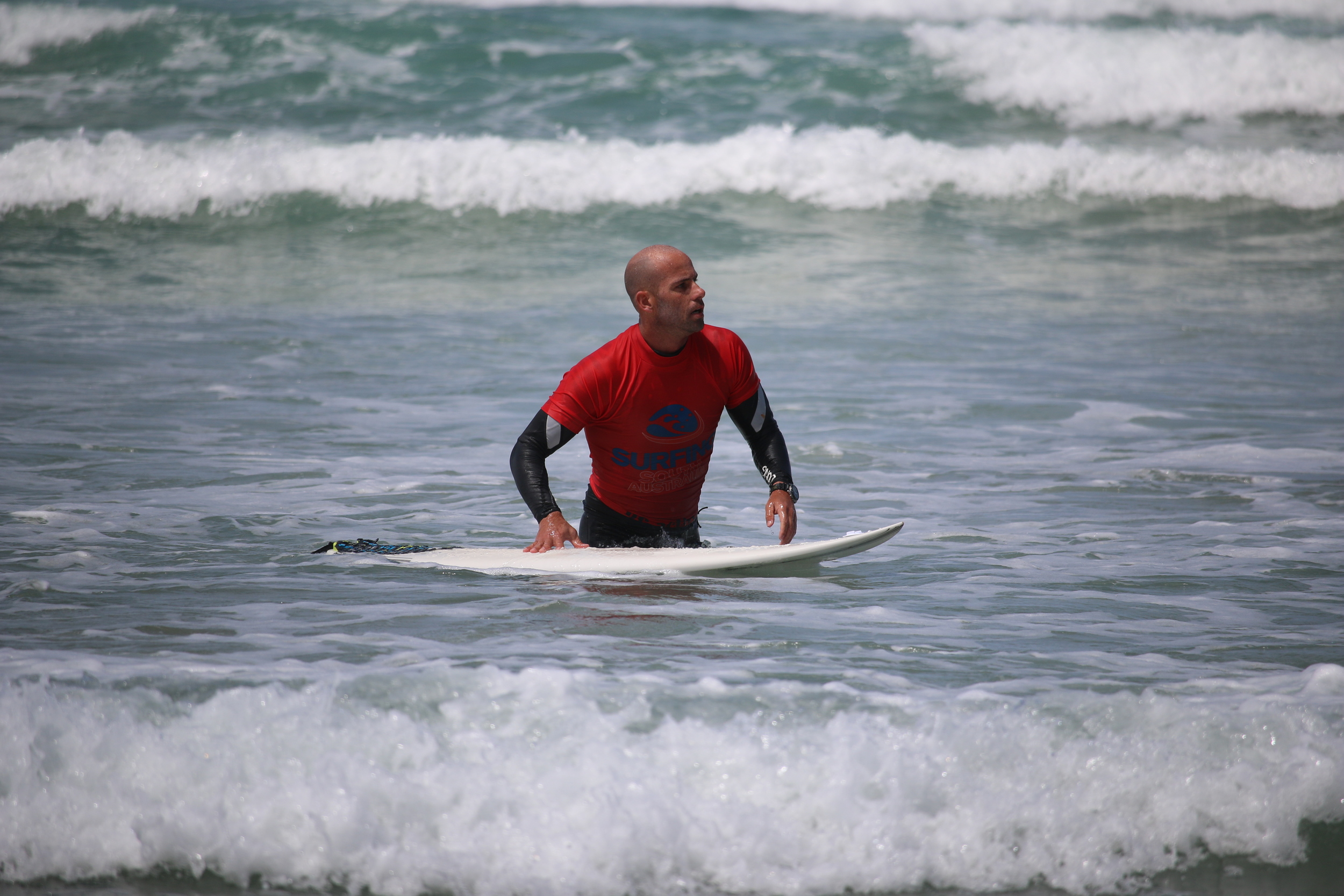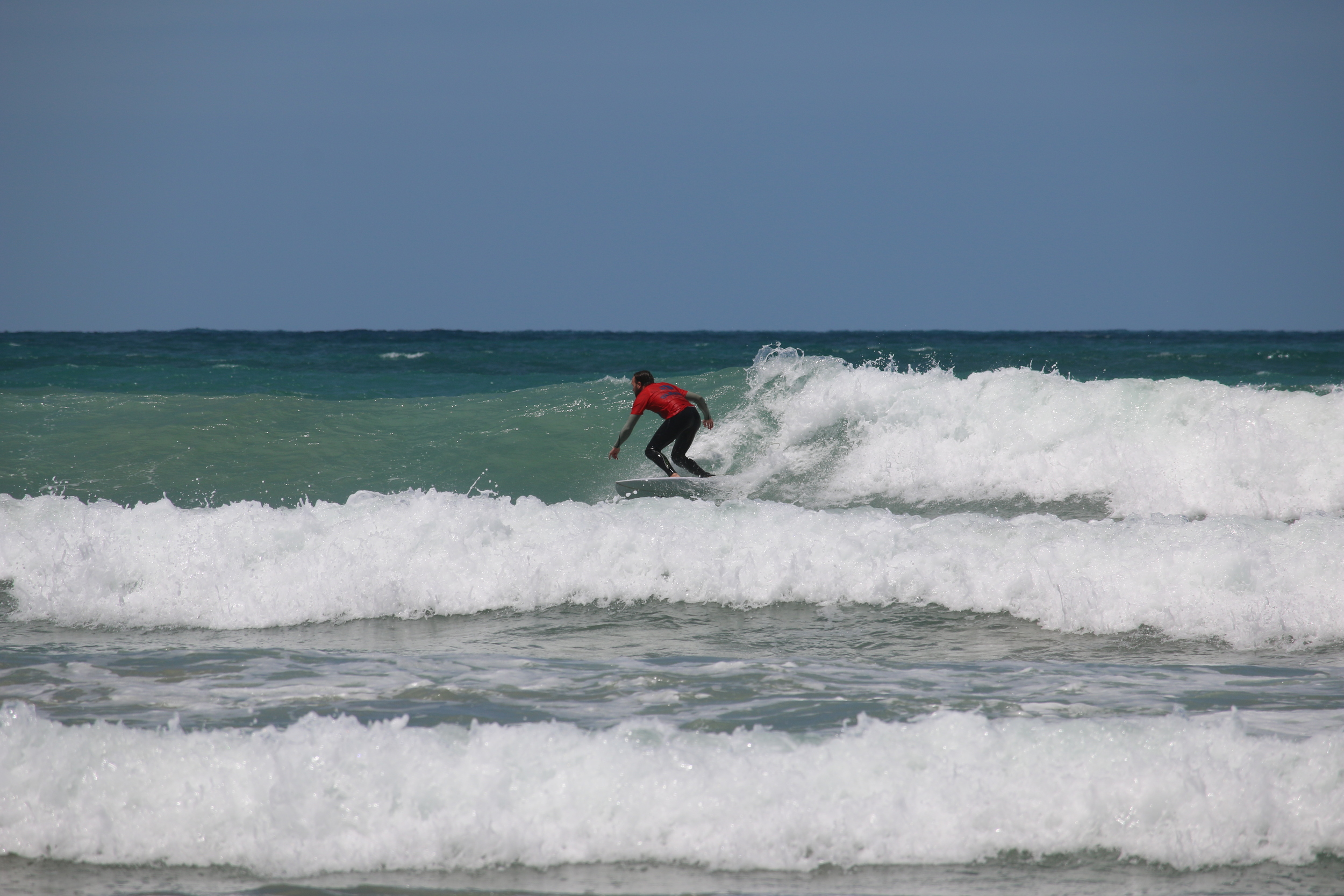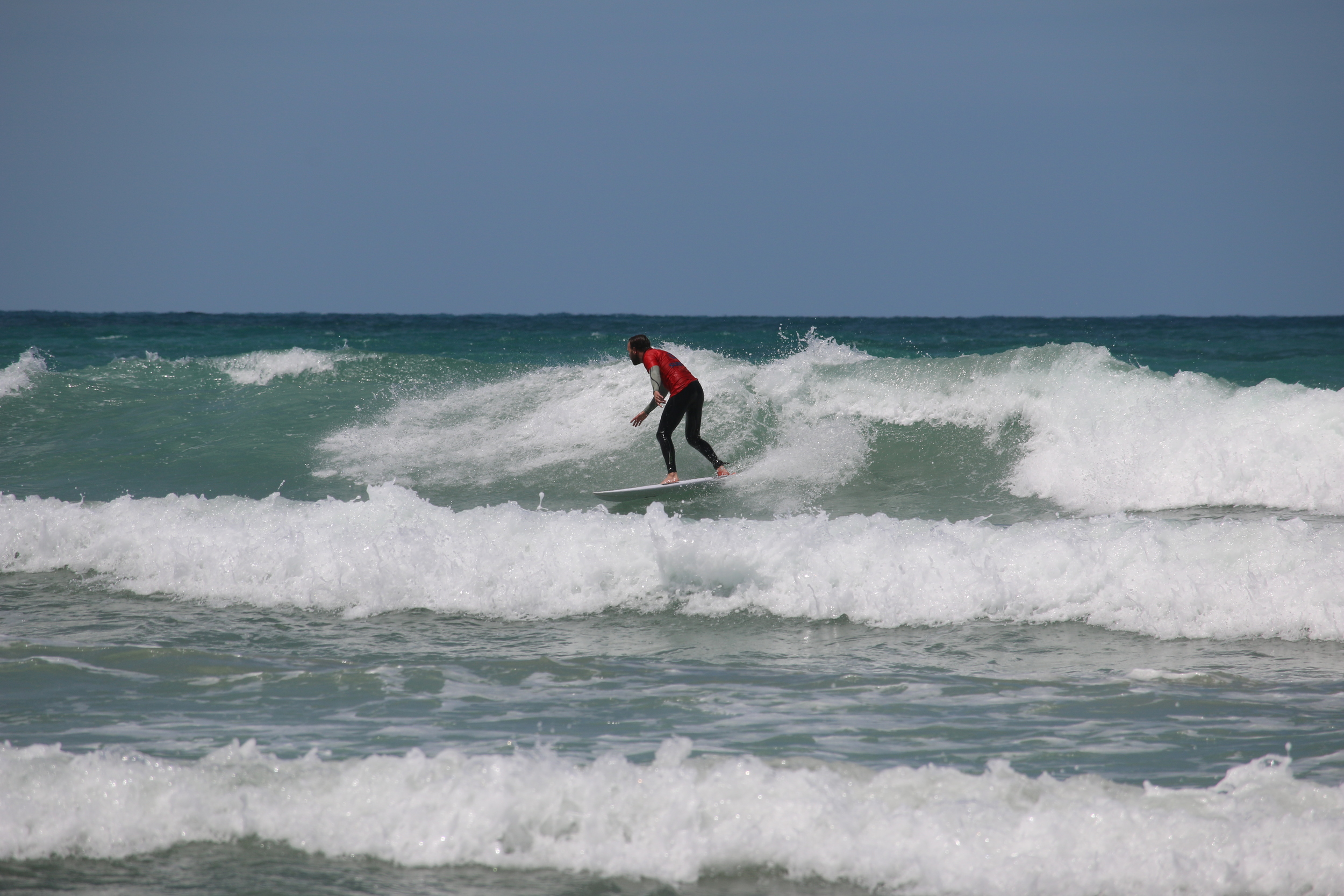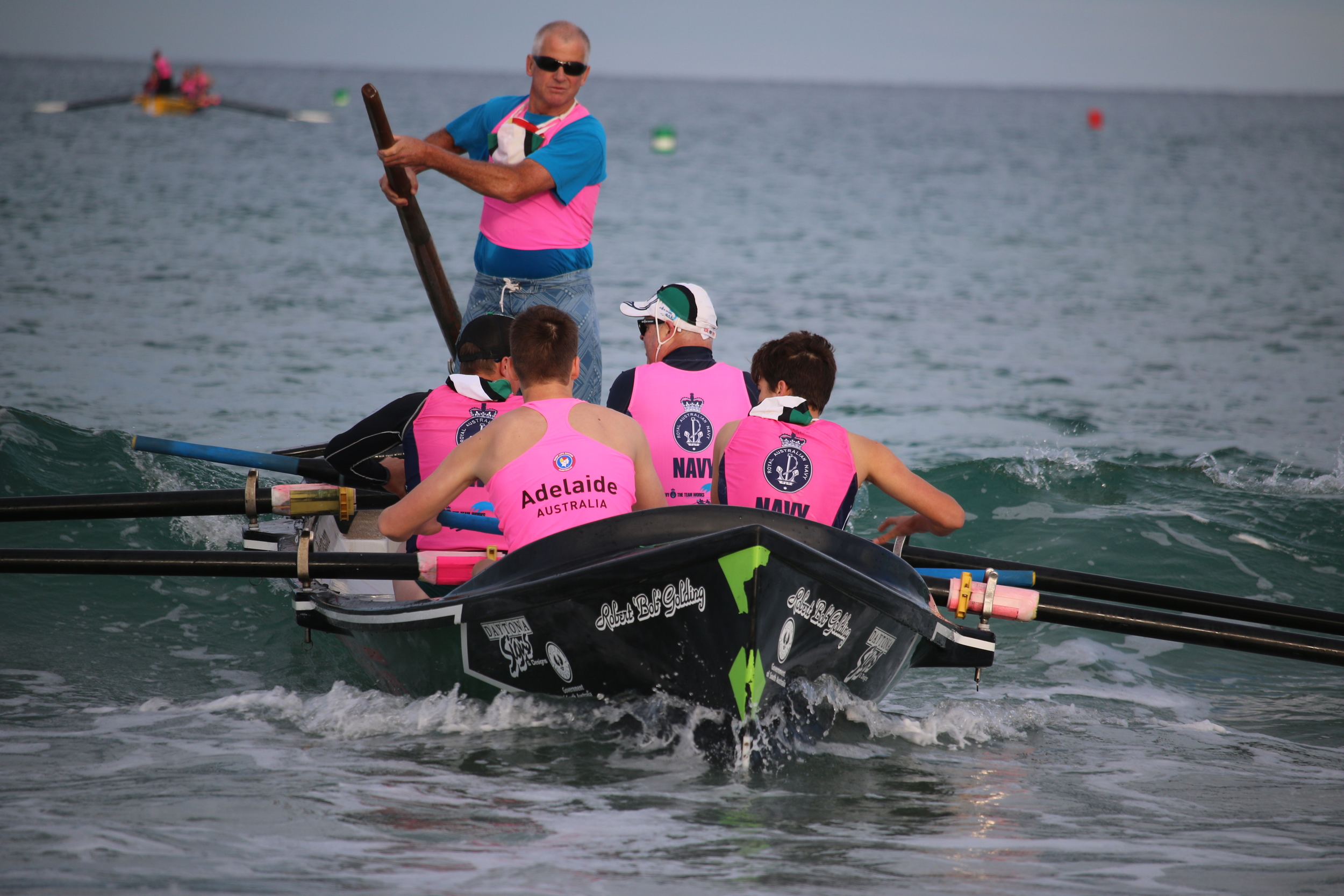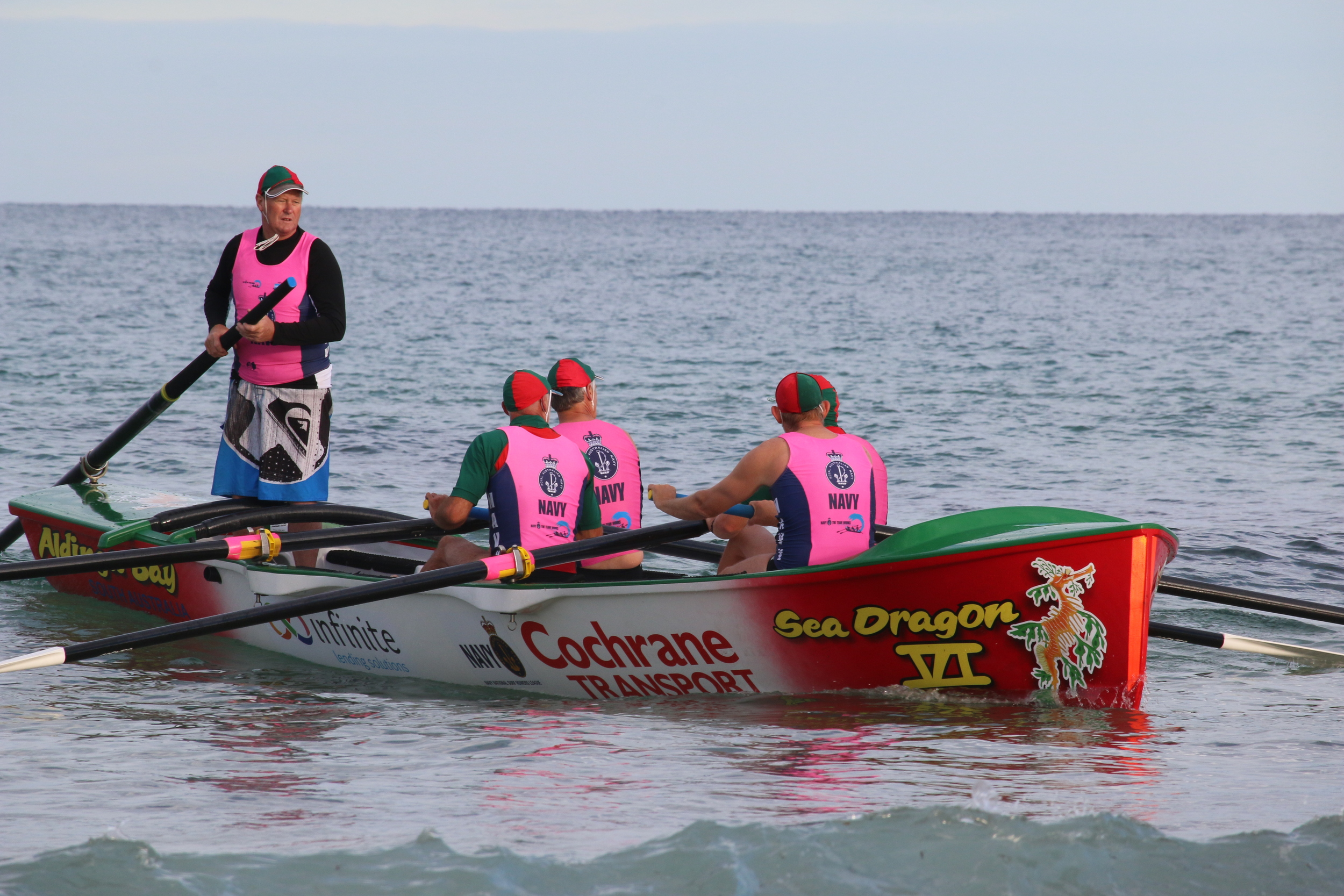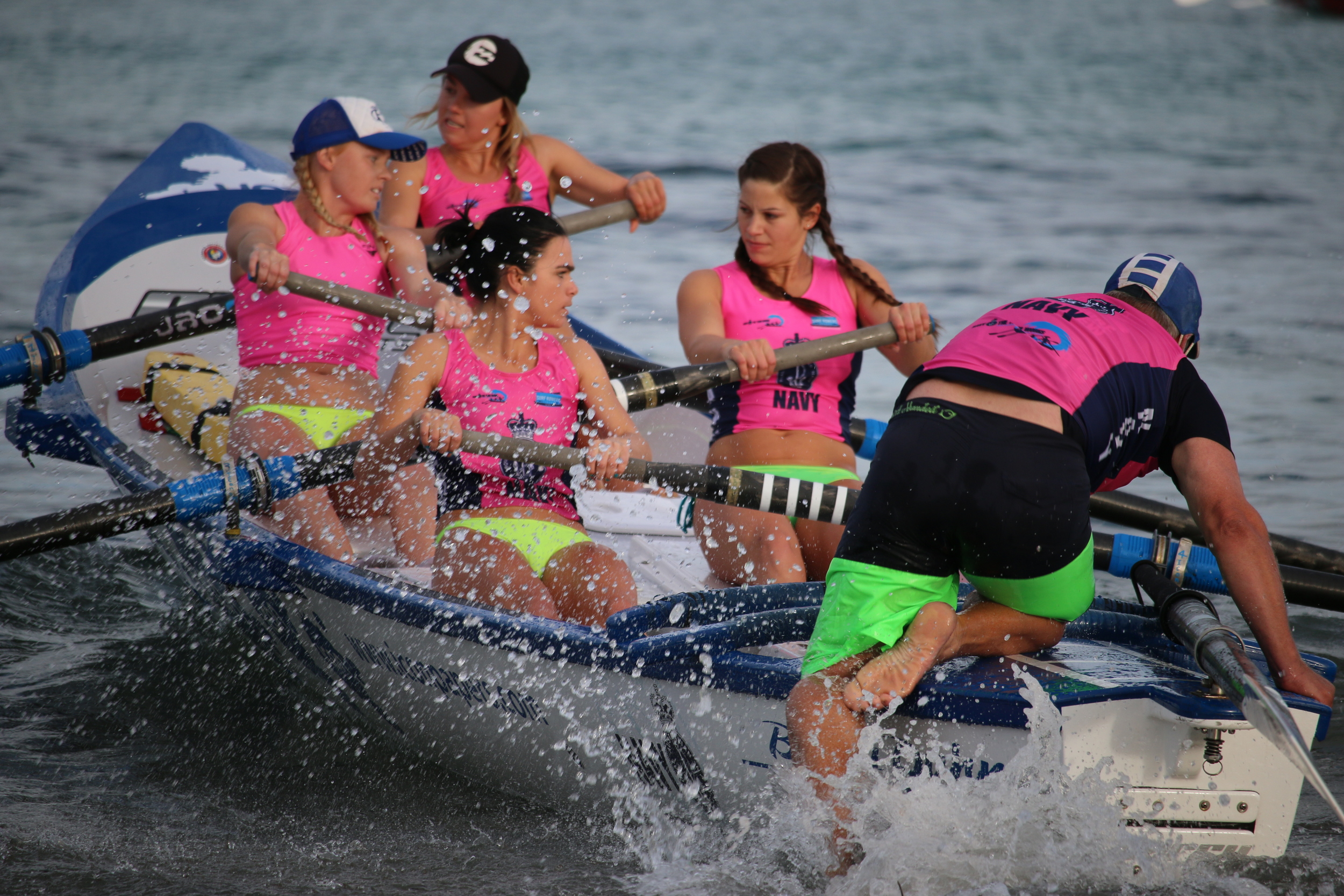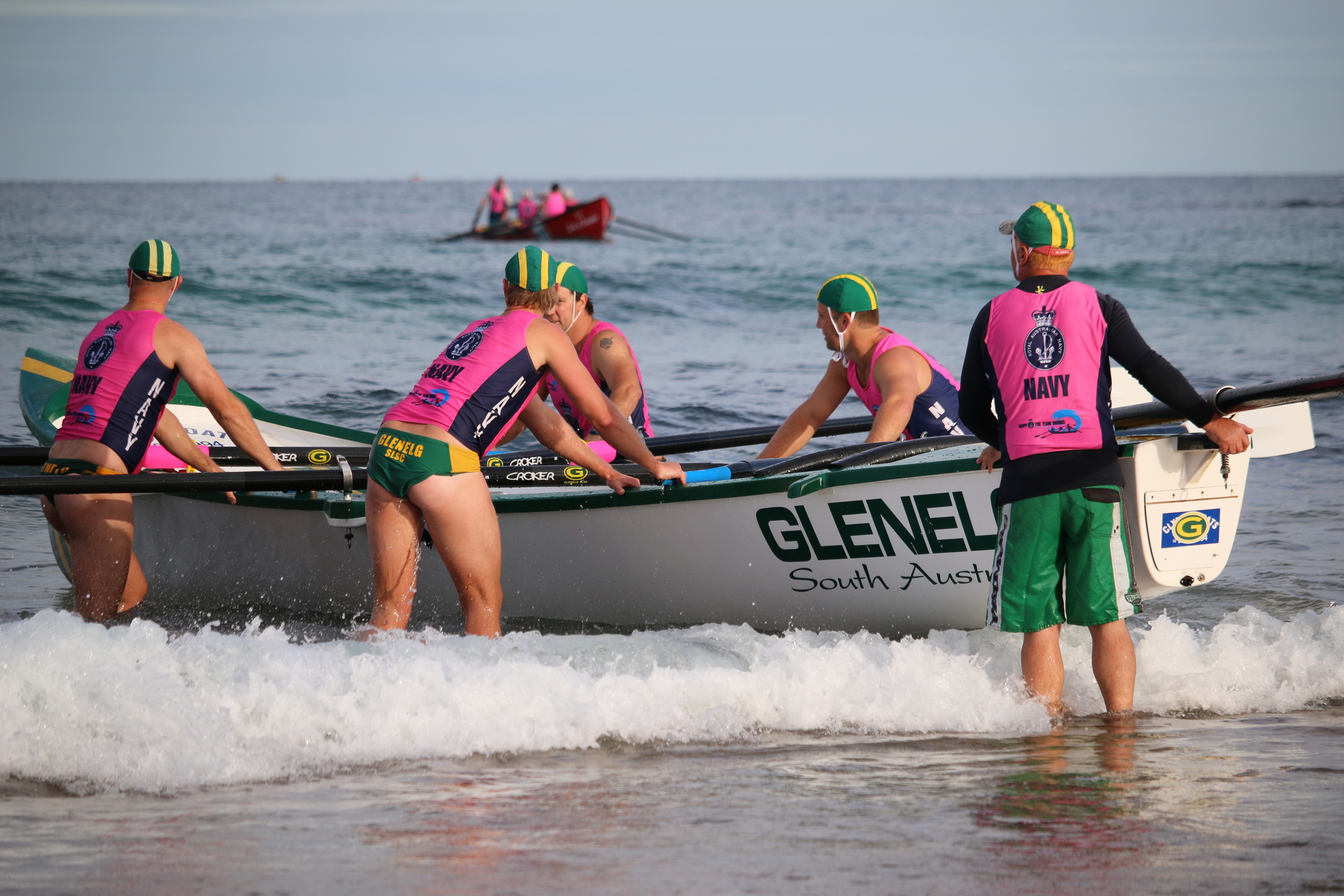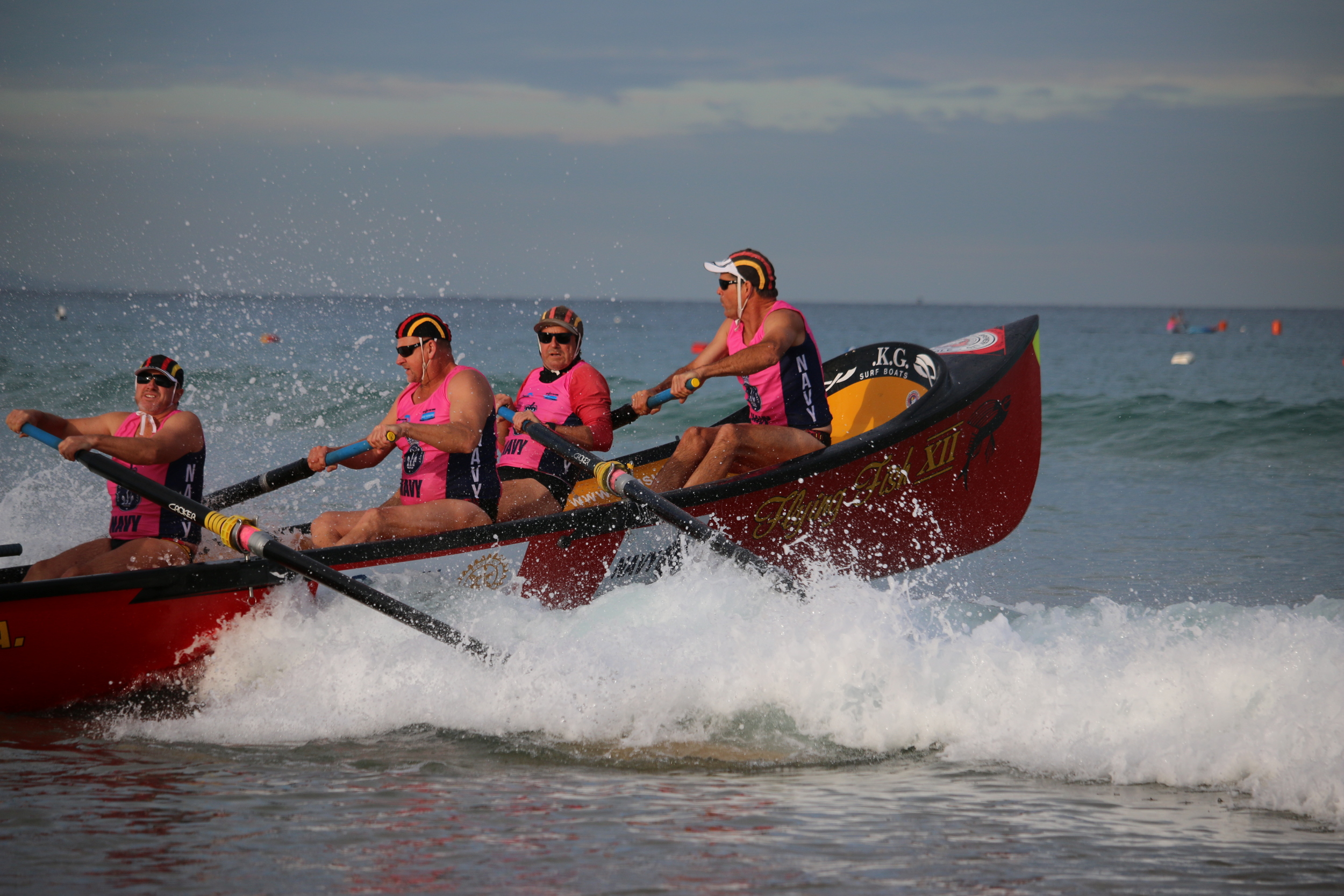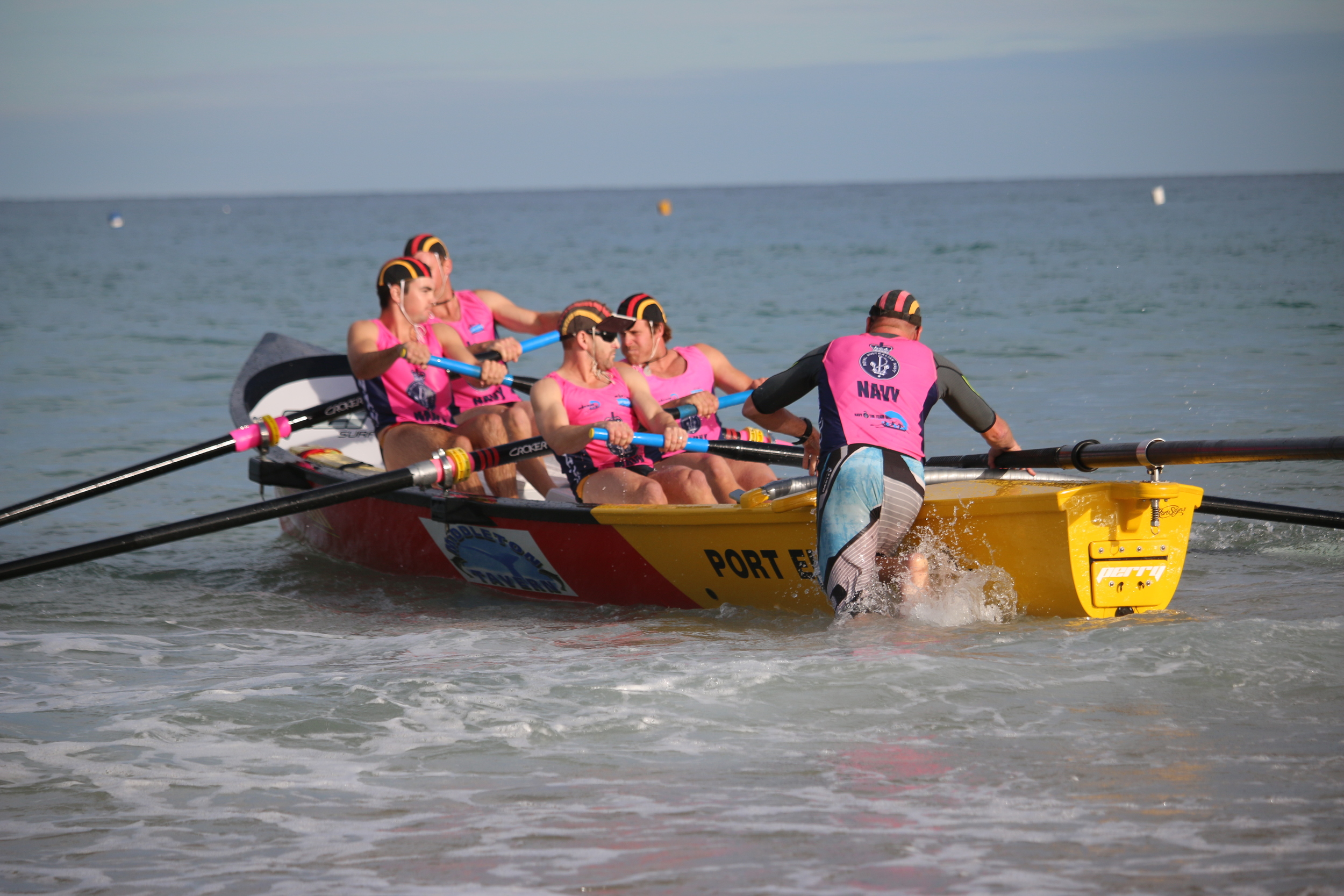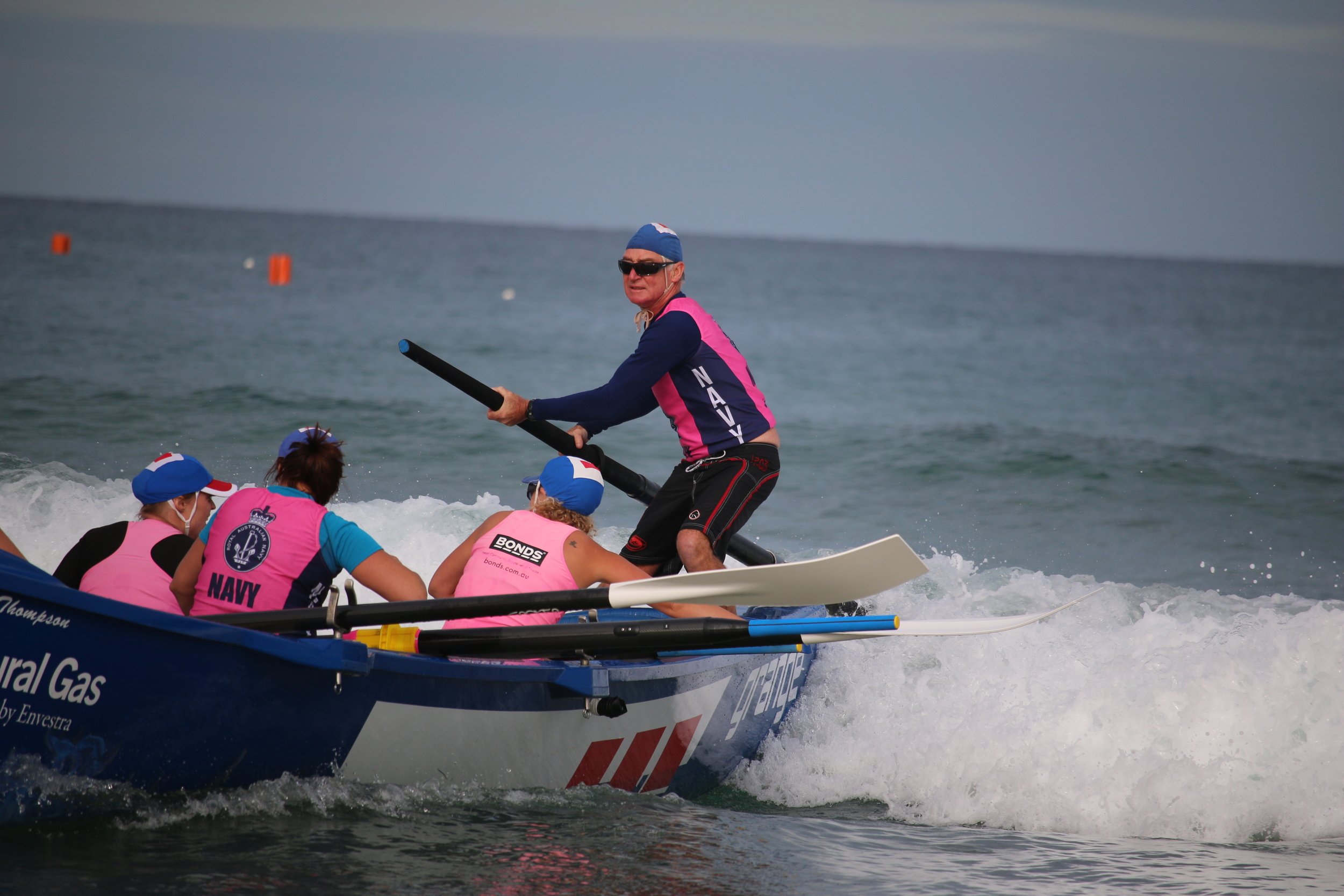Surf Sports showcase the skills and physical abilities required to save a life. Disciplines vary from the famous Iron Man events to lifesaving skills based events, and welcome male and female competitors in categories from Under 8 to 75+.
POOL RESCUE
Competitors from U11s - Masters test their rescue skills with events such as manikin tows, obstacle swims and tube swims carrying patients in the pool. Event descriptions along with all other Pool Rescue information & resources can be found in our Pool Rescue Handbook
INFLATABLE RESCUE BOAT
IRB (Inflatable Rescue Boat) competition aims to improve the skills and technique of IRB drivers and crew as well as allow crews to demonstrate their techniques and abilities to perform rescues.
There are five events in IRB competition.
IRB Rescue: teams are comprised of one patient, one driver, and one crew member. The patient is in the water at a designated buoy, the driver and crew member are at the starting line at the on the beach. On the starter's signal, competitors launch the IRB, proceed through the surf to pick up the patient, round the buoy, and return to shore.
IRB Team Rescue: teams are comprised of one patient and two crews (one driver and one crew member per crew). On the starter's signal, the first crew launches the IRB and proceeds through the surf to the patient. As the IRB rounds the buoy, the first crew member jumps overboard. The driver completes the buoy turn and returns to shore alone.
The second crew member moves into the water, and takes control of the IRB. The first driver runs up the beach and tags the second driver. The second crew re-launches the IRB, proceeds through the surf to pick up the patient and the first crew member, rounds their buoy, and returns to shore to finish the event.
Mass Rescue: teams are comprised of one driver, one crew member and two patients. Both patients start the event in the water. The crew proceed through the surf, pick up their first patient and return to shore. The driver and the patient must exit the IRB where the patient retires to the beach. The driver proceeds to the start/finish line, rounds a marker and returns to the IRB. The IRB is re-launched and the crew rescues the second patient, returns to the beach and across the finish line.
IRB Rescue - Tube Rescue: teams are comprised of one patient, one driver, and one crew member.
On the starter's signal, competitors launch the IRB, proceed through the surf and turn around their respective turning buoy. The crew member then enters the water and swims past the turning buoy to their patients. The crew member secures the rescue tube around the arms of the patient and tows the patient back to the IRB. Once the crew member and patient are safely aboard, the driver navigates the IRB around the team's turning buoy and returns to shore to finish.
IRB Relay: this event is a continuous relay involving the four events in the following order: Rescue Tube, Mass Rescue, Teams Rescue and Rescue. Each leg is per the description above except for changeovers between legs.
BEACH EVENTS
Sprint: competitors race on a straight sand course of 90 metres (70m for juniors) to the finishing line.
Relay: teams of 4 competitors race on a straight sand course of 90 metres (70m for juniors) with a baton, running one lap each. The final runner of a team over the finish line wins.
Beach Run: competitors race on a sand course for 1km or 2km races.
Beach Flags: competitors start lying on their stomach facing away from a baton/s buried in the sand 15 - 20 metres away. There are always fewer batons than competitors. On the starting gun, competitors rise, turn and race to secure a baton. The competitor(s) who fail to obtain a baton are eliminated. The process repeats until there is a single winner.
WATER EVENTS
Board Race & Board Relay: from the beach (standing start) each competitor enters the water with their racing board, paddles around all buoys and returns to the beach. The winner is judged by the first competitor to cross the finish line on their feet and in contact with their board. The relay event is the same format, contested in teams of 3.
Ski Race, Double Ski Race & Ski Relay: from a floating start, competitors paddle their surf ski around three buoys and return to the finish line. The finish is judged when any part of the surf ski crosses the finish line with the competitor and their paddle all in contact. Ski events can be single or double (two people in the same ski). The relay event is the same format, contested in teams of 3.
Board Rescue: this two-person event comprises of a swimmer and a racing board paddler. The race commences with the swimmer swimming to their allocated buoy and then signalling back to the beach for their board paddler to come out and collect them. Once the paddler reaches the swimmer, the two paddle the board back to beach and cross the finish line.
Surf Race & Surf Teams: from a standing start on the beach, competitors run, wade and swim 400 meters to sea to round as set of buoys and then return to the beach. The event concludes with a run to the finishing line. In a Surf Teams event, clubs enter multiple competitors in the one race, and the final winning team is determined by the cumulative points of team members' final placings.
Wade & Wade Relay (Juniors): competitors run out to an allocated turning mark at knee depth water and then the competitors may either wade, duck dive or swim along the beach to another marker before returning to the beach to run to the finish line. The relay event is in the same format, with teams of 4.
MULTI DISCIPLINE EVENTS
Iron Man & Iron Woman: these events are conducted over a course consisting of three legs – a swim, surf ski and surf board – and concluding with a beach sprint to the finish line. The order of the legs may vary and is decided by draw prior to the event.
Taplin Relay: Teams of swimmers, board paddlers and ski paddlers, compete together as a team relay over an Ironman course. The order of the legs may vary and is decided by draw prior to the event.
The Taplin Relay event may be conducted in three person (one swimmer, one surf board and one surf ski paddler), six person (two competitors for each water leg), or four person (one competitor per water leg plus a beach sprinter to complete the race) variations.
Cameron Relay: (Taplin relay for juniors) Teams of four competitors comprising of a surf board paddler, surf swimmer and two runners compete in this relay. The event order is water/run/water/run, and the order of water legs is drawn by ballot.
Lifesaver Relay: conducted over a course consisting of a surf boat, a surf ski, a surf board, a swim and a beach sprint, with nine team members. The surf boat leg is always first, and the sprint leg always concludes the race. The order of the other legs is drawn by ballot. Each leg shall follow a course from the beach out to sea, rounding buoys and returning to tag the next leg competitors.
MARCH PAST
March Past: one of Surf Life Saving's original events, representing the traditional discipline of a surf lifesaver. Teams, often dressed in full length club swimming costumes, march in formation in time to music around a set course carrying a surf reel, line and belt and following their flag bearer. Teams are judged on factors such timing, arm and leg swing, space and dressing, body carriage and presentation.
Belt Race: The Surf Belt race involve the use of the surf reel, line and belt and is one of the most prestigious and traditional races in surf lifesaving competition. The event begins on the beach with the swimmer placing the belt around their waist and towing a surf line out to their allocated buoy and signalling their finish. The Belt swimmer is assisted by three linesman and a reel handler.
LIFESAVING
Rescue Tube Race: the rescue tube race is contested on the same course as the belt race. Competitors run up the beach to collect their rescue tube, turn and race to the water and swim to their allocated buoy to signal their finish of the race.
Rescue Tube Rescue: this event features four team members: a patient, a rescue tube swimmer and two assisters. The patient swims to their allocated buoy and signals back to the beach. The rescue tube swimmer then swims to rescue the patient with the assistance of swimming fins and a rescue tube. Upon arrival at the buoy the rescue tube swimmer harnesses the patient into the tube and swims back to the beach. As the rescue tube swimmer and patient approach the shore the two rescuers enter the water to assist in getting the patient across the finish line.
The event can be also contested as a two-person event, without the assisters.
First Aid: this competition involves two team members having to respond to a simulated accident scenario within a set period of time which varies depending on the age group. The scenarios incorporate props and volunteers who play the part of accident victims. Teams are required to examine the victims, provide a diagnosis and then provide treatment using materials from their first aid kits. Teams are assessed against a set criteria and awarded points depending on how they perform against the criteria.
Champion Lifesaver: this event provides an individual the competitive opportunity to demonstrate the physical and mental skills required to be a surf lifesaver, including a surf lifesaving question paper, resuscitation, surf race, surf board race, beach sprint and a rescue tube race.
Champion Patrol: this event includes a surf teams race, a board/tube rescue relay race, a 20 question theory paper, and simulated first aid and CPR scenarios. Champion Patrol aims to demonstrate how surf lifesavers work as a team in performing some or all skills associated with surf rescue patrol work.
Rescue and Resuscitation (R&R): a competition based on the simulated rescue and resuscitation of a patient from the surf using traditional techniques: belt and reel. It combines swimming, resuscitation skills, marching and drill with teams judged against set criteria. Competitors are assessed and marked on their performance through the whole competition.
BOARD RIDING
Board riding is, in essence, competitive surfing. Competitions are conducted in two categories.
Short Boards (less than 2.74 meters long)
The short board competition is judged on the rider’s style and ability to make full use of the wave and their performance in wave selection in terms of quality and size. Also taken into account is the rider’s ability to spend the longest time at the fastest speed and use of as many manoeuvres as possible.
Long boards (minimum 2.74m long)
The long board competition is based on the rider’s ability to execute to the maximum degree a combination of traditional and modern manoeuvres with control being the major factor. Total use of the entire length of the board is required.
SURF BOATS
A boat crew consists of five competitors, four rowers and a sweep who controls the boat by use of a sweep oar and commands to the rowers.
Boat crews start at the water's edge holding their boats ready. On the starting signal, crews row to their assigned turning buoy approximately 400 metres off shore and return to the beach. The winner is the first crew to pass their boat between the finish flags on the beach.
Some events are conducted as short course which is approximately 250m off shore.


